
Birds on safari: 10 most common African birds in the savanna
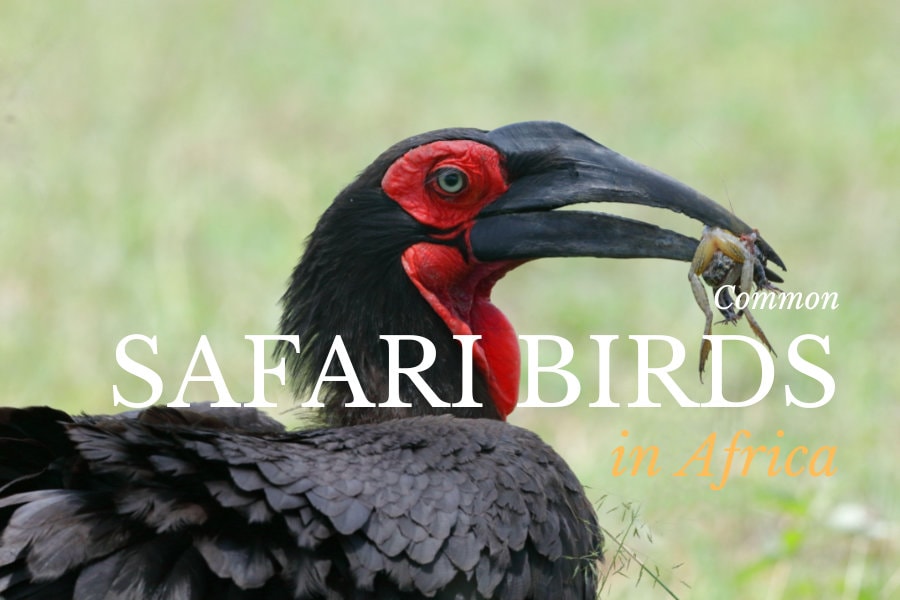
Most people don’t even consider seeing birds on safaris when planning their adventure in the wild.
Anyone who is planning a safari dreams of watching lions protect their territory, elephants charging through the forest, or a big cat hunt playing out beside a hippo-filled waterhole.
Unless you’re an avid birder, there’s a good chance that our winged friends aren’t very high on your agenda.
Despite their beauty and extravagance , the majority of people don’t find birds as exciting as the big stuff – most are more interested in wild dogs, cheetahs or leopards , among others.
However, witnessing birds on safari is always an unexpected highlight. This article shows you the top ten : classic species, what they sound like, and where you can encounter them.
If you’re already excited about birds on safari, then this article is an introduction to what you can find.
And if you’re thinking “birds in safari itineraries?” then this should change your opinion a little.
10 Common Safari Birds to See in the Savanna
Whether you’re hoping to spot small or giant African birds, safaris offer abundant opportunities to marvel at these stunning creatures.
Here are some incredible species to add to your birding bucket list.
1. African fish eagle

Undoubtedly Africa’s most striking symbol, and Zambia ’s national emblem, this is the ultimate bird to see on safari.
If you haven’t already guessed it by the name, their diet mainly includes fish . So you’ll likely find these large African birds near open water bodies .
The fish eagle is unmistakable with its white head and breast, chestnut belly and forewings, black under-wings, and white tail.
Male and female appear similar, but the female is generally larger .
Average size : 2.1-3.6 kg; 63-77 cm in length.
Call : Loud, piercing, cheerful yelp. ‘Kyow-kow-kow’ type. 🙂
Habitat : Aquatic: rivers, lakes, and dams – feeds on fish.
Range : Sub-Saharan Africa.
2. Helmeted guineafowl
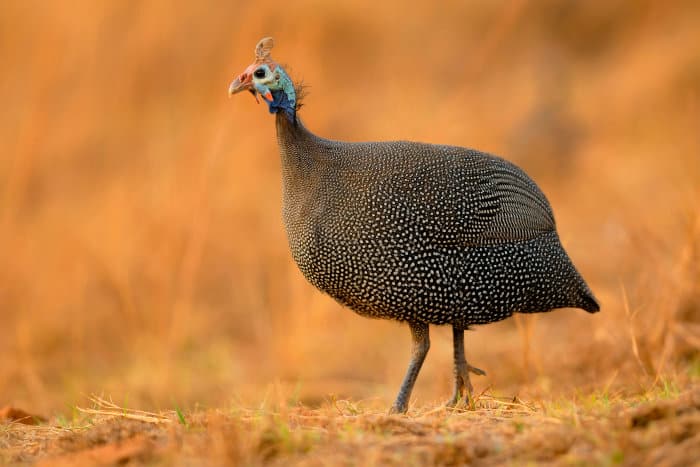
Not the most intelligent of creatures, but it is intriguing nonetheless. They are one of the most unique birds of the savanna, with several quirky traits.
The helmeted guineafowl has a ‘bead-like’ design with dark gray feathers and tiny white dots.
They boast bald faces and necks with striking blue-colored skin . Admittedly, they’re not at the top of the list of beautiful African birds .
Both helmeted guineafowl sexes have a casque on the head, though the male’s “helmet” is longer.
These guineafowls have an omnivorous diet , and while they can fly, they choose to walk unless they find themselves in danger.
Average size : 1.3 kg; 53-58 cm in length.
Call : ‘krrdii-krrdii-krrdii-krrdii’ .
Impressive, huh? Who would’ve thought in the first place that I, “Africa Freak” , could speak guineafowl language? 🙂
Disclosure – I’ve spent many mornings watching them roam outside my safari camp.
Habitat : All types of open and wooded grasslands + coastal forests.
Range : Most of Sub-Saharan Africa, except in rainforests and the Somali region.
3. Grey (southern) crowned crane
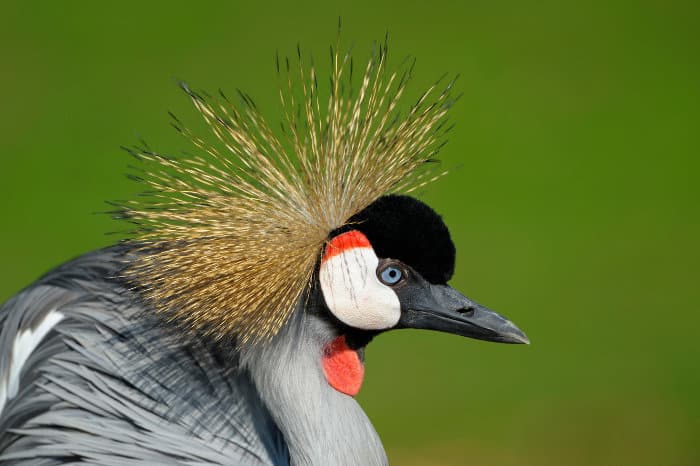
Highly characteristic of its stunning bristly crown , the grey crowned crane is a majestic bird. Safari goers wouldn’t want to miss the opportunity to catch a glimpse of this beauty.
You can find them in grassland and wetland areas in Africa. Unfortunately, the grey-crowned crane is an endangered species with a declining population.
They face threats such as the illegal removal of birds from the wild and habitat loss.
Average size : 3.5 kg; 100-110 cm in length.
Call : Trumpeting ‘may hem’ flight call (easily confused with the Norwegian black metal band).
Habitat : Grasslands, flooded plains, marshes, and agricultural land.
Range : Most of Eastern and Southern Africa.
4. Lilac-breasted roller
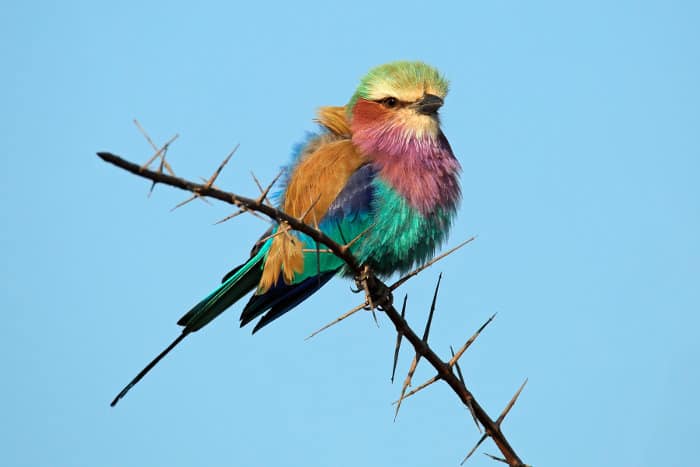
A stunningly exquisite bird that you are most likely to encounter during a game drive. “Rolls” are on display and explode into a myriad of colors when giving chase.
The lilac-breasted roller is a multicolored beauty of the roller family. Many are familiar with birds from this family for their ability to perform aerial acrobatics in flight.
Lilac-breasted rollers can breed in flight too, and they are monogamous birds believed to mate for life.
If you’re patient enough when having a picnic, say on the Serengeti , this bird may perch on your safari vehicle.
For those hoping to catch sight of birds in Kenya, safari experiences should include searching for this fascinating species.
Average size : 110 g; 36-38 cm in length.
Call : A loud guttural rak-rak sound.
Habitat : Grasslands and wooded acacia savannas . The lilac-breasted roller perches conspicuously and habitually on termite mounds, high treetops, or telephone wires from where it scans the ground for large insects.
Range : The bird’s range coincides with the great wildlife corridors of Eastern and Southern Africa.
5. Southern ground hornbill
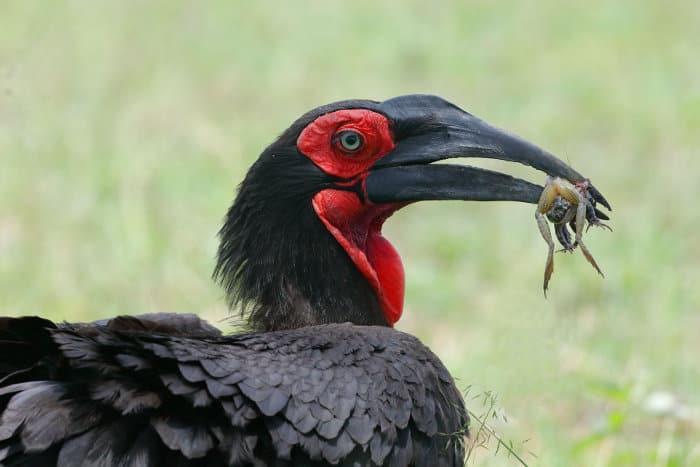
These are the turkey birds of the savannah. With its jet-black feathers and vibrant red patches , the southern ground hornbill looks a little like a turkey or vulture.
You can distinguish the female from the male, thanks to its blue throat patch .
Not necessarily a looker, but you know you are on safari when a southern ground hornbill makes an appearance.
Average size : 3.8 kg; 100 cm in length.
Call : A loud, booming duet ‘oomph-oomph,’ given on early mornings.
Habitat : Savanna, woodlands, and grasslands.
Range : Central Kenya and Southern Congo, south to Central Botswana and Eastern South Africa .
6. African hoopoe
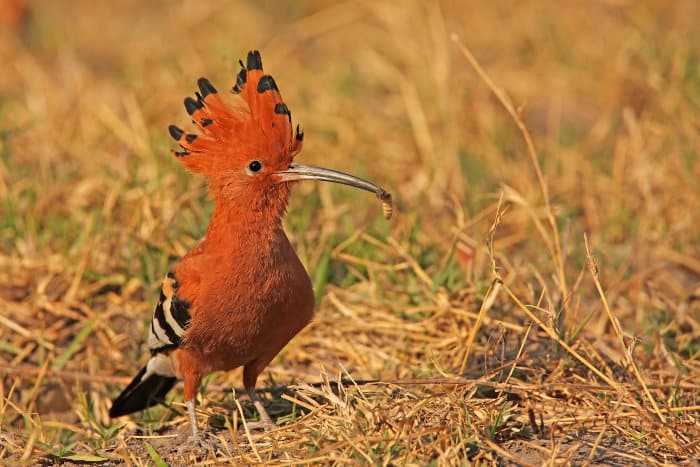
The African hoopoe is a medium-sized bird that flies impressively, like a giant butterfly with pied wings. It is one of the only African bird species with a “punk-like” crest and a long decurved bill.
These funky, exotic-looking birds of Africa mainly feed on insects like beetles, locusts, and grasshoppers. They have a few natural predators, including cats and big African birds, such as hawks and eagles .
The African hoopoe is one of the top species to see on safari for bird lovers.
Average size : 38-67 g; 25-29 cm in length.
Call : A frequently uttered ‘hoop-hoop-hoop’ .
Habitat : Wooded savannas, open parklands, and suburbs. We used to have a few of them visiting our garden in Johannesburg.
African hoopoes are very funny little birds that walk at a fast pace, probing the soil with their extended bill.
Range : Found throughout Africa.

The world’s largest and heaviest bird and the only one with just two toes. You might already know that ostriches lay large eggs, but did you know that they have three stomachs?
Another interesting fact about these big birds in Africa is that they have no teeth . Instead, they swallow pebbles to help with grinding food for easier digestion.
Common ostriches are flightless . However, they are also one of the world’s fastest animals .
Males are black with white wings , while females are dull brown with “dirty” white wings.
Sorry ladies, but in the animal kingdom, males are usually more attractive than females.
Average size : 63-140 kg; 1.7-2.8 m tall.
Call : Habitually heard at night or when displaying; a loud booming call, ‘boo-boo-booo-hooo’ (sounds like a cry when you write it down).
Believe it or not, the noise itself is very similar to the roar of a lion . Scaaary!
Ostriches can also whistle .
Habitat : Open semi-arid plains and woodlands.
Range : Southern edge of the Sahara and Sahel, and through much of East Africa. Southern races are also widespread, especially in farming areas where farmers raise them for their eggs, feathers, meat, and skin.
Oudtshoorn in South Africa is the ostrich capital, home to over half the world’s ostrich products.
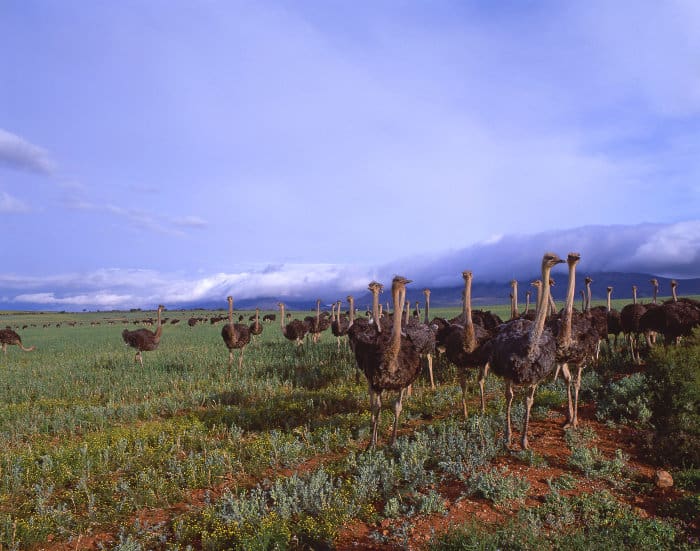
Did you know?
A single ostrich egg can provide an omelet for at least 10 people (or 12 moderate eaters).
Bon appétit!
8. Marabou Stork
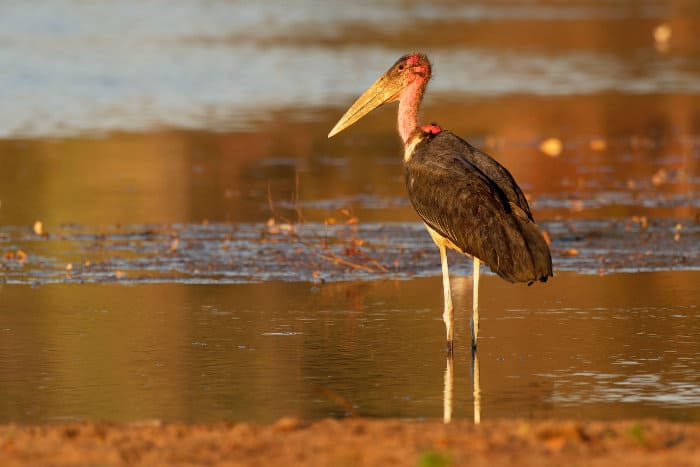
Birds don’t always come to mind when you think of ugly African animals . However, the enormous marabou stork isn’t the front runner when it comes to beauty.
They have featherless heads , scabby pink faces and a long reddish throat sac .
These large African birds have cloak-like feathers on their bodies, giving an eery appearance. It is a true scavenger that cleans out carcasses in search of bits and pieces of meat.
The marabou stork is frequently associated with African vultures but is quite different in behavior.
They can be scary .
One Africa Freak contributor used to come home to marabous picking the scraps off his verandah in Lake Naivasha , Kenya.
Average size : 4.5-8 kg; 1.2-1.3 m in length.
Call : Primarily silent, but can clap its beak during display.
Habitat : Mainly savannas and plains in the wild. They are also becoming present in towns: around dumps, fish markets, or abattoirs.
Range : From Senegal to Natal (South Africa); avoids rainforests and deserts.
9. (African) white-backed vulture

The white-backed vulture is Africa’s most widespread large vulture known as the “ garbage man ” of the savannah.
Often confused with the Cape vulture , the white-backed vulture is smaller in size and has a dark eye (Cape vultures have honey-colored eyes). Sadly, these endangered birds of Africa have a declining population .
Average size : 4.2-7.2 kg; 78-98 cm in length.
Call : Grunts and goose-like hisses and cackles .
Habitat : Open plains and wooded country where game is abundant.
Range : West Africa, Kenya, Tanzania , and throughout Southern Africa.
10. Red-billed oxpecker

The appointed beautician of the African bushveld .
The red-billed oxpecker has captivating yellow-ringed eyes that contrast with its olive-brown plumage. It is a medium-sized bird very similar to the yellow-billed oxpecker but with an all-red bill.
Red-billed oxpeckers are fairly common birds in Africa that you might spot enjoying a piggyback ride on other animals.
It is commonly mixed with large mammals ( buffalo , rhino , hippo ), as it removes unwanted parasites such as ticks and flies from the host’s body.
In fact, the red-billed oxpecker will clean the animal’s body thoroughly, even parts such as ears and nostrils.
It’s quite a spectacle to watch!
Average size : 0.5 kg; 20 cm in length.
Call : A scolding ‘churrrr’ and a hissing ‘zzzzzzist.’
Habitat : Savanna, in close proximity to cattle and game.
Range : Eritrea south through Eastern Africa to Eastern South Africa.
Admire African Savanna Birds on a Safari
These ten safari birds are relatively common and widespread. They are just an introduction , though.
To see many more small and big African birds, you should visit Africa and connect with your wild side.
Remember, you can customize safaris to your interests. So if you want to see birds in the African savanna, then tell your safari operator , so they can go searching for rare species.
About The Author
Michael Theys
Related posts.

17 fun lilac-breasted roller facts: Africa’s multicolored bird

9 cool African grey parrot facts
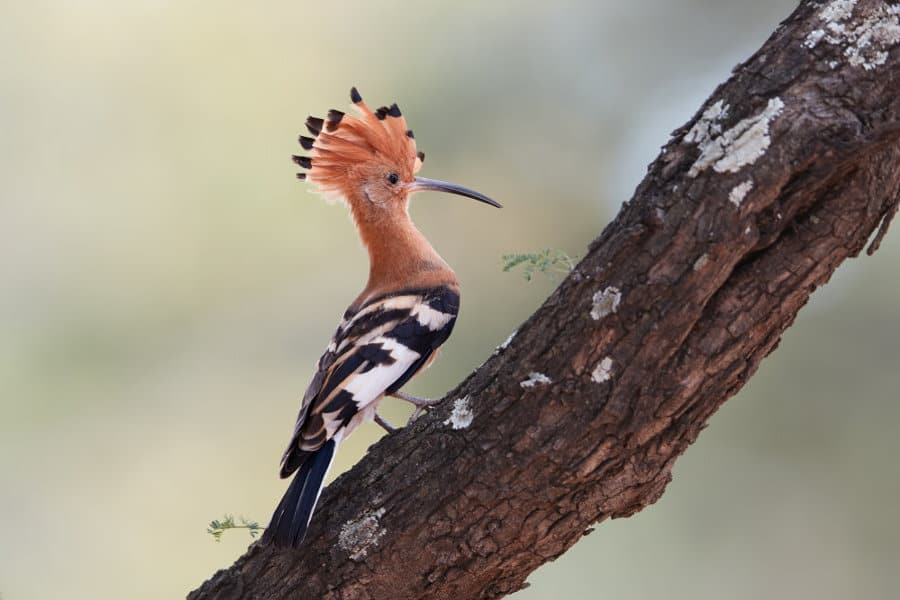
African hoopoe – Interesting facts on the striking Upupa africana species
Leave a comment cancel reply.
Your email address will not be published. Required fields are marked *

Birdwatcher’s Guide: African Safari’s Must-See Birds
Disclosure: Some links may be affiliate links. If you buy an item via links on our site, we may earn a commission. Learn more .
When most people go on safari, they look forward to seeing animals like lions, rhinos, giraffes, elephants, and many others. Of course, these are incredible creatures to spot in the wild, but did you know that there are also almost 2,500 species of birds in Africa?
The sheer diversity among African bird species is astonishing, from birds or prey to brightly colored, showy birds, aquatic birds, and everything in between. They live in a range of different habitats, including woodlands, the savanna, mountains, wetlands, and so many others so, no matter where you go in Africa, you’re sure to spot an abundance of birds.
If you love birds then this giant continent is one of the best places on the planet to spot a plethora of exciting species. In this article, I’ll provide a brief introduction to some of the most fascinating and where you can spot them.
Birds of Prey
Birds of prey, sometimes called raptors, are found in most places around the world. Their excellent hunting abilities are among the best in the animal kingdom, and Africa is home to some very interesting species.
1. Secretary Bird ( Sagittarius serpentarius )

The secretary bird is one of the most interesting bird species in Africa and has a very unique appearance. It’s a large bird, measuring up to 4.9 feet (1.5 meters) in height and has long legs with an eagle-like body. These birds are usually white with black markings including black plumage around the head and an orange mask around the eyes.
One of the most interesting things about the secretary bird is its feeding habits. These birds of prey primarily feed on snakes, but they don’t catch them in a traditional manner. Secretary birds will use their strong legs to stamp on a snake and kill it. They’ll often be seen hanging around wildfires , waiting for potential prey to flee.
Secretary birds are extremely territorial and will defend an area of up to 193 mi 2 (500 km 2 ) in breeding pairs.
Where to See Them
The secretary bird prefers open habitats where it can easily spot prey, such as savannas and grasslands. During the day, they’ll spend most of their time on the ground but will retire to roost in an acacia tree for the night.
They’re found across sub-Saharan Africa in countries like Kenya, Botswana, South Africa, and Namibia and can be seen in various national parks such as Kruger, Serengeti, Maasai Mara, and Chobe.
When to See Them
If you’re looking to spot the secretary bird then the good news is that they remain active year-round and don’t tend to migrate, save for going in search of water. However, they may be easier to spot between May and October, during the dry season, since there’s not as much vegetation for them to hide out in.
2. African Fish Eagle ( Haliaeetus vocifer )

The African fish eagle has a beautiful white head in contrast to its brown body, giving it that iconic eagle appearance. These large birds can grow up to 30 inches (76 cm) with a wingspan of up to 79 inches (201 cm). They’re often found in coastal areas where they will hunt for fish after waiting patiently in a nearby tree before swooping down on its prey.
African fish eagles have special structures on the toes called spiracles, which allow them to get a firm grip on their prey, which may otherwise slip from their grasp. However, they don’t just rely on fish for food, as their diet also consists of other birds and reptiles. Being a top predator, these birds help to control prey populations.
The African fish eagle lays two to three eggs during breeding season, and pairs form a bond, caring for two nests which they use from one season to the next.
The African fish eagle prefers a waterside habitat, so you’ll often see them around lakes and rivers, but they’re also common along the coast. They are found in sub-Saharan Africa in countries such as Botswana, Namibia, Kenya, Zimbabwe, and Tanzania.
Most people head to one of the national parks on safari, so if you’re keen to spot the African fish eagle, then try the Chobe National Park in Botswana, the Queen Elizabeth National Park in Uganda, the Maasai Mara National Reserve in Kenya, or the Serengeti National Park in Tanzania.
Being a diurnal species, your best chance of spotting the African fish eagle is by taking a daytime safari.
During the mid-morning through to the afternoon, you’ll often see African fish eagles looking for food around bodies of water. While they are active throughout the year, you’re more likely to see one in the dry season, between May and October since the water level drops, and they’re more easily able to hunt.
There’s a good chance you’ll hear this bird before you see it. It’s known for its loud call, which it makes while tossing its head backwards.
3. Martial Eagle ( Polemaetus bellicosus )

A large, majestic-looking eagle species, the martial eagle may grow up to 38 inches (97 cm) in length with a wingspan of 94 inches (240 cm)! They have mainly gray plumage with a short tail and short, hooked beak. This beak is used to rip apart the flesh of its prey.
And that’s one of the most fascinating things about this bird, which is sometimes called the leopard of the air due to its amazing hunting abilities. Not only is it equipped with a powerful beak and sharp talons , but this bird also has incredible vision, allowing it to spot prey from as far as 1.9 to 3 miles (3 to 5 km) away!
The martial eagle feeds on both mammalian and reptilian prey, with some reports of these birds going for small ungulates. But then, that’s not as much of a surprise when you consider that this is the largest eagle species in Africa.
Found across sub-Saharan Africa, the martial eagle can be spotted in some of the most well known national parks, including Etosha in Namibia, the Kruger National Park in South Africa, Chobe in Botswana, and the Serengeti National Park in Tanzania. However, these birds are also common in countries like Kenya, Zimbabwe, and Zambia.
Martial eagles tend to hunt first thing in the morning and again during the late afternoon, so this is definitely the best time to spot them.
It doesn’t matter what time of year you take your safari as these birds remain active within their habitats all the time. However, between May and October, during the dry season, the vegetation isn’t as dense, giving wildlife lovers a greater chance of spotting these amazing birds. What’s more, if you head to a water source, there’s a good chance you’ll find one there.
4. Tawny Eagle ( Aquila rapax )

Tawny eagles are one of smaller species within their genus but still grow to around 30 inches (76 cm) in length. This species is known for its complex diet consisting of both live prey and carrion, making them both opportunistic and scavengers. This behavior means that they are often spotted in urban areas around refuse dumps and slaughterhouses.
The tawny eagle is, compared to other eagle species, lacking a beautiful appearance but that’s not to say it isn’t a fascinating animal. What’s more, being a primary predator, they help to keep prey populations in check. However, they are known to take kills from smaller animals, which can be problematic.
A big problem for the tawny eagle is nest predation since they make very open nests that almost serve as an invite for predators. When they choose their nest site, monogamous pairs can become very territorial.
The tawny eagle is one of the most widely distributed birds in Africa and can be found pretty much everywhere on the continent.
They’re common in many of the national parks, including Serengeti in Tanzania, Maasai Mara National Reserve in Kenya, Etosha in Namibia, and many more. While looking for these birds, you’ll more than likely find them in grasslands, open woodlands, and on the savanna. They prefer a semi-arid habitat.
Like many birds in Africa, the tawny eagle tends to hunt in the early morning or late afternoon when the temperature is cooler and their prey, like birds, small mammals, and reptiles, are more active; this is a great time of day to spot them.
As with other birds I have discussed, the tawny eagle is likely to be found around a water source during the dry season.
5. Steppe Eagle ( Aquila nipalensis )

The steppe eagle has a very typical appearance of a raptor with rich brown plumage and a hooked yellow bill. It has a robust build and can grow to around 35 inches (89 cm), although it’s not uncommon for the females to be larger than the males, making it easy to tell them apart.
Steppe eagles breed between March and April and will often put on territorial aerial displays during this period. However, after breeding, it has been reported that this species has adapted to migrating in search of food. One of their main prey animals is the ground squirrel, which seems to become less abundant in their breeding grounds at certain times of the year.
The steppe eagle is a popular visitor to many of the African national parks, including, Maasai Mara, Serengeti, Hwange, and the Kafue National Park. However, this is a migratory species that flies over to Europe or Central Asia during breeding season. Breeding season typically begins in March or April and ends in August, so they won’t be found in Africa between these dates.
Steppe eagles typically finish their migration back to Africa around November, during the dry season, when they return to find suitable food. They can often be seen in open woodlands and on the savanna, where they’ll hunt during the early morning and late afternoon.
Birds of Wetlands & Waterways
Most people imagine Africa as a very dry continent. While much of it is arid, that’s not all there is. In fact, Africa is home to many waterways and wetlands where avian life thrives.
1. African Jacana ( Actophilornis africanus )

African jacanas are small wading birds that don’t typically get much larger than 12 inches (31 cm) in length although females are usually larger than males. They have a very distinct appearance with a chestnut colored body, white markings up the neck and towards the eyes and a bright blue strip running down the top of the bill.
The African jacana relies on a diet of floating vegetation and insects and largely remains in the same area, only moving around within short distances to look for food.
This species is known for its breeding habits, with females mating with several males. After she lays her eggs, she will leave the male to care for them alone. Because of this, male jacanas are often seen carrying the young under their wings; an adaptation not seen in all male bird species.
The African jacana is native to sub-Saharan Africa and can be found in countries that include Uganda, Zambia, Tanzania, and South Africa. They’re a common sight in many of the national parks, including South Luangwa National Park in Zambia, the Queen Elizabeth National Park in Uganda, the Maasai Mara National Reserve in Kenya, and the Serengeti National Park in Tanzania.
If you’re on the lookout for the African jacana, be sure to start your safari early in the morning, as this is when they’ll be out looking for insects. They also become active again in the late afternoon and can be spotted all year round.
That said, as is the case with many African birds, you’re more likely to see the jacana during the dry season. These birds have specially adapted feet with claws on the ends of their long toes that allow them to walk on floating water lilies, and the lower water level makes this easier for them.
2. African Spoonbill ( Platalea alba )

The African spoonbill has a very uniquely shaped bill which it uses for feeding, but I’ll go into this in more detail shortly.
This species has a very distinct appearance with white feathers and brightly colored reddish legs and patches around the eyes. Its long legs, coupled with pointed toes allow it to move easily through its aquatic habitat when searching for food, regardless of the water depth.
When it comes to breeding, the male African spoonbill develops denser and more brightly colored feathers, which it uses to attract a mate. When a pairing is successful, the birds will create a nest in the trees close to the water and wait for the 29 days it takes for the eggs to incubate. Both parents are involved in this process.
While African spoonbills are listed as being of Least Concern on the IUCN Red List , they are protected by conservation measures.
If you’re going in search of the African spoonbill then you’ll need to look around wetlands as well as coastal areas like lagoons and estuaries. However, it’s worth keeping in mind that the number of individuals in any given area may be affected by the season and availability of resources.
Spoonbills are common in several African nations, including Kenya, Zambia, Tanzania, and South Africa. Many of the national parks play host to these birds, so check out the Serengeti National Park, the Etosha National Park, and the Chobe National Park as well as the Okavango Delta in Botswana.
Spoonbills enjoy foraging in shallow waters and they can be seen doing this throughout the day. However, they’re most active first thing in the morning and again in the late afternoon. They’re equipped with a specially adapted bill, shaped like a spoon (that’s where they get their name) that allows them to sift through the sediment and the water while searching for small fish and other aquatic prey. They open their bill slightly and dip it into the water while swinging it from side to side in order to find prey.
3. Marabou Stork ( Leptoptilos crumenifer )

The marabou stork is an obscure-looking bird with a bald head and long, pointed bill. These are massive creatures that can grow up to 60 inches (152 cm) in height. Those long bills are used for feeding, mainly on carrion, but marabou storks will also clatter their beaks together as part of a mating ritual.
Marabou storks are often found around water sources but are also frequent visitors to landfill sites where they’ll look for food and don’t seem to be intimidated by humans. They’re sometimes called the undertaker bird owing to their posterior appearance that makes them look as though they’re wearing a black cloak.
These birds often gather in large groups and are not a migratory species. Although they will sometimes wander from their territory in search of better food and water opportunities. Since they feed on carrion, they’re essential to keeping the landscape clean and speeding up decomposition.
Marabou storks are a species of wading bird, so are usually found where water is present. They’re common all over sub-Saharan Africa and can be found in countries like Zambia, South Africa, Kenya, and Uganda, among others.
If you’re heading to one of the African national parks and want to spot a marabou stork, then some of the best options include Maasai Mara, Kruger, and Chobe.
The marabou stork primarily forages for a meal first thing in the morning and again during the late afternoon. This makes these times of day ideal for spotting them and, if you’re lucky, you may even be able to observe them feeding.
4. Hadada Ibis ( Bostrychia hagedash )

The hadada ibis is a bird that gets its name from its distinct four note call. In African legend, it is said that these birds make this loud call because they are scared of flying. This is further backed by their presence in human areas, particularly in private lawns.
Hadada ibis are large birds that grow to around 30 inches (76 cm) and are gray to brown in color. On the wing feathers , there are optical microstructures that give the plumage a purplish shimmer. These birds can also be identified by the white mustache-like markings on the face.
Breeding for the hadada ibis occurs during the wet season, owing to the abundance of resources. This species typically feeds on insects, worms, snails, and even some species of prawns and lizards. Perhaps owing to their breeding behavior in the wet season, the Xhosa people of Lesotho see the hadada ibis as a sign that the rains are coming.
The hadada ibis is found throughout sub-Saharan Africa in many different countries. If you’re going on safari and want to catch a glimpse of this bird, then I would recommend the following locations:
- Kruger National Park in South Africa
- Amboseli National Park in Kenya
- Chobe National Park in Botswana
- Serengeti National Park in Tanzania
The hadada ibis is mostly active during the day when it will spend its time foraging for food around grasslands and marshes. However, interestingly, this bird is also a common sight in urban areas.
As I have discussed, these birds are named after the calls that they make, which are most commonly heard in the morning and late afternoon. Although during the evening, they will return to the trees where they roost.
5. Goliath Heron ( Ardea goliath )

It’ll likely not come as much of a surprise to learn that the goliath heron is a pretty big bird; in fact, it’s the largest heron species on earth and can grow up to 4.9 feet (1.5 meters) in height! Plus, it has a wingspan of up to 7.5 feet (2.3 meters)!
These birds are mainly solitary, although they will form monogamous breeding pairs . In any case, goliath herons are very territorial of their aquatic habitat, from which they never stray too far. In fact, they’re quite often seen standing in the shallows, waiting for fish, amphibians, and other prey to swim by, before spearing it with a long, pointed bill. Since these birds have no natural predators, their presence in the ecosystem is important as they help to control fish populations.
Goliath herons have a bushy crest on the head and are largely gray with chestnut and white markings around the neck and head. While there’s no real difference in terms of coloration between males and females, they can be differentiated by their size, with females being slightly smaller.
The goliath heron prefers an aquatic habitat and can often be seen around mangroves, wetlands, and marshes. While it is found in many African nations, it’s most common in places like Tanzania, Kenya, South Africa, and Botswana.
If you’re on safari and keen to spot the goliath heron then I would suggest heading out either first thing in the morning or in the late afternoon. It’s during these times that the goliath heron will be foraging for food around the wetlands.
Colorful & Striking Birds
If you’re looking to discover some of the most beautiful birds on the planet then look no further than Africa. Here you’ll find ornate, eye-catching birds, so let’s get to know a few of them better.
1. Lilac-Breasted Roller ( Coracias caudatus )

One of the most impressive things about the lilac-breasted roller is its stunning plumage that features a variety of different hues. With greens, browns, and blues, the species is unmistakable but it’s the beautiful lilac patch on the chest that earned the bird its name.
This is a small yet robust species that grows to around 15 inches (38 cm), including the tail, and they can often be seen sitting in the trees. They’re usually alone, but it is worth noting that, once a breeding pair forms, they will remain monogamous.
Lilac-breasted rollers feed mainly on insects and small invertebrates and can often be heard flying overhead making a shrill ‘rak-rak’ call.
The lilac-breasted roller can be found in a range of habitats, from open woodlands to grasslands and is common in several countries like Botswana, South Africa, Tanzania, Zimbabwe, and Namibia.
Some of the best national parks to spot the lilac-breasted roller include the Maasai Mara National Reserve in Kenya, the Serengeti National Park in Tanzania, Chobe National Park in Botswana, and Kruger National Park in South Africa.
As I have described, the lilac-breasted roller has beautifully colored plumage which is best spotted during the breeding season. This takes place between April and September, and the males can be seen putting on some impressive aerial displays that show off their stunning coloration.
Active year round, although they may migrate to other areas in search of food, there’s always a good chance of spotting the lilac-breasted roller. However, they’re most active in the morning and late afternoon when they’re looking for food.
2. Superb Starling ( Lamprotornis superbus )

The superb starling couldn’t be any more aptly named with its beautifully colored plumage in blues and chestnut browns that shimmer in the light and its iconic black face. These small birds only grow to around 7.5 inches (19 cm) but have a very robust and strong body.
They are often seen on the ground, where they will look for fruit, grains, and worms and are typically found close to acacia trees. The great thing about the superb starling is that it is a very friendly species that’s not afraid to interact with humans.
If you’re heading out on safari in the middle of the day, you may hear the loud screeching calls of the superb starling coming from the acacia trees.
The superb starling is most common in the eastern parts of Africa in countries like Rwanda, Kenya, and Uganda. You can spot them on the savanna as well as in open woodlands, and they’re common in national parks such as:
- Queen Elizabeth National Park in Uganda
- Maasai Mara National Reserve in Kenya
A diurnal species, the superb starling is easiest to spot during the day when it is out looking for food. This typically occurs first thing in the morning and again during the late afternoon.
3. Malachite Kingfisher ( Corythornis cristatus )

Malachite kingfishers are a small species of riparian bird that only grow to around 4.7 to 5.5 inches (12 to 14 cm). However, they’re still incredibly impressive with their unique coloration; chestnut on the underside with a brilliant flash of green/blue plumage on the back. They have long red bills, although juveniles have a black bill that changes color as adulthood approaches.
The malachite kingfisher can often be seen perched on a low hanging branch over the water as it keeps a keen eye out for passing prey. When it spots something suitable, the bird will drop into the water, grab its catch, and then emerge to feed.
During breeding seasons, pairs of malachite kingfishers will work together to excavate a nest by burrowing a tunnel into the sand. They’ll line the base of the burrow with fish bones before the female lays a clutch of three to six eggs.
The malachite kingfisher is a freshwater aquatic bird that can often be found around streams, rivers, and lakes across sub-Saharan Africa. They’re common in Botswana’s Chobe National Park as well as the Maasai Mara National Reserve in Kenya and around the Okavango Delta in Botswana.
Malachite kingfishers hunt for fish in the early morning and late afternoon, but they do remain active throughout the whole day, so there’s always a chance of spotting one.
Breeding season begins in May, and it’s at this time that these primarily solitary birds will be seen together. The females make their nests in termite mounds or along the riverbank, and the male joins her in taking care of the eggs.
4. Collared Sunbird ( Hedydipna collaris )

The collared sunbird is a passerine species often recognized for its speedy flight. These small birds feed mainly on nectar but they are occasionally known to eat insects.
Growing to only 3.5-3.9 inches (9-10 cm), this is a very small species of bird that’s often mistaken for the hummingbird at first glance as it hovers over flowers to collect nectar. They also have a similar metallic green/blue coloration on their backs to some hummingbird species and a tube-like tongue for feeding on nectar, although they are in no way related.
Collared sunbirds can usually be found nesting in the trees and around areas where there is a water source.
The collared sunbird can be found in Tanzania, Malawi, Kenya, Zimbabwe, and other countries across south and east Africa. They’re often easy to spot in some of the most well known national parks, including Ngorongoro Conservation Area in Tanzania as well as the Serengeti National Park and South Africa’s Kruger National Park.
Collared sunbirds are mostly active in the early morning and late afternoon. It’s at this time that they head out in search of nectar, although they do remain relatively active throughout the day, giving you a reasonable chance of spotting one outside of these times.
5. Red-Throated Bee-Eater ( Merops bulocki )

The red-throated bee-eater is a small, brightly colored bird that grows to around 8.7 inches (22 cm). It prefers a tropical habitat and can be found on the savanna, but it is also a common sight in gardens and farmlands.
These birds nest near river banks, so will usually be found near a water source and are known for their distinct coloration of bright greens, oranges, and blues. While most individuals have an orange throat, it’s thought that around 1% have a yellow patch here.
As you can probably guess from their name, these birds feed primarily on a diet of bees; honey bees and stingless bees are their favorites. They nest in colonies and excavate burrows along the river, which can contain space for up to 50 breeding pairs.
The red-throated bee-eater is mainly found in the eastern parts of Africa and can be spotted in the Maasai Mara National Park in Kenya, the Serengeti National Park in Tanzania, and the Queen Elizabeth National Park in Uganda.
Like many African bird species, the red-throated bee-eater is a diurnal species that can often be spotted looking for food first thing in the morning. They are also very active during the late afternoon, which provides another great opportunity to spot one.
Birds of the Savanna
The savanna is one of the most well-known habitats in Africa, and many people associate it with animals like giraffes, rhinos, and elephants. However, this habitat is also home to some wonderful avian species.
1. Southern Yellow-Billed Hornbill ( Tockus leucomelas )

The southern yellow-billed hornbill is certainly an impressive, if not unusual looking bird. It boasts a large, curved yellow bill which, in males, can grow up to 3.5 inches (90 mm). This equates to around ⅙ of the bird’s body length! These birds also have long eyelashes and a long tail, red patches around the eyes, and beautiful black and white markings to the wings.
Southern yellow-billed hornbills are one of the smaller hornbill species but beautiful nonetheless. They can be heard making a wide variety of sounds, but the most common is a loud piercing sound, often used to defend their territory.
These birds are able to fly, in fact, they’re pretty powerful gliders, but they’re most commonly found on the ground, looking for food.
The southern yellow-billed hornbill is not only found on the savanna, but also inhabits some woodlands. It’s most commonly found in countries like Botswana, Namibia, South Africa, and Zimbabwe where safari goers to the following national parks have a chance of spotting it:
- Etosha National Park in Namibia
The southern yellow-billed hornbill is active throughout the day. However, for the best chance of spotting it, head out in the early morning or late afternoon when this species will be looking for food such as insects, spiders, and seeds.
2. African Grey Hornbill ( Lophoceros nasutus )

Another species of hornbill common to the savanna is the African gray hornbill. Again, it is one of the smaller hornbill species but still gets to a length of up to 20 inches (51 cm). Mainly gray in color, these birds have black and white markings to the wings and crown.
African gray hornbills have a prominent casque on the bill, which comes in handy when breeding since the females nest in a hollow within a tree, which she seals using a mixture of mud and fruit. A small opening is left so that the male can deliver food, and once the chicks have outgrown the nest, the female will peck her way out.
Found across sub-Saharan Africa, the African gray hornbill is a common sight in the Kruger National Park in South Africa. It can also be spotted in some of the other most well-known national parks, like Chobe in Botswana, Hwange National Park in Zimbabwe, the South Luangwa National Park in Zambia, and the Serengeti National Park in Tanzania.
The African gray hornbill feeds on an omnivorous diet of small reptiles, insects, and fruit and will be found looking for these foods in the early morning or late afternoon. So, if you’re hoping to spot one, these are the best times to head out on safari.
The species is considered to be of least concern by the IUCN Red List , so numbers are healthy in the wild, making spotting them much more likely.
3. Common Ostrich ( Struthio camelus )

The common ostrich is perhaps one of the most well-known birds on the savanna, if only because it is the tallest bird in the world, measuring up to 6.6 feet (2 meters) in height. These are flightless birds that are also famed for their powerful kick of up to 2,000 lbs psi, which they use as a form of self-defense.
Ostriches live in large flocks that can number up to 50 individuals, and they’re often found among grazing herbivores such as zebras. They’re also herbivores and largely feed on vegetation but will sometimes pick at the remains of a predatory kill. Through their droppings, ostriches are important seed dispersers.
Common ostriches may not be able to fly, but they can certainly run; in fact, they’ll move at speeds of up to 43.5 mph (70 km/h) to escape threats. And this seems to be a viable method since individuals are known to live for between 30 and 40 years in the wild.
The courtship displays of the ostrich are truly an impressive sight, with males performing an elaborate dance accompanied by various noises such as hissing.
Ostriches are found at many of the national parks across Africa, including Kruger National Park in South Africa, Etosha National Park in Namibia, Serengeti National Park in Tanzania, and Kenya’s Tsavo National Park. However, they’re also found in countries such as Ethiopia and Botswana.
The common ostrich is a diurnal species, so it’s best to look for it during a daytime safari. As I have mentioned, they’re often scattered among other herbivores like antelope and zebra, so you’ll likely be able to spot various wildlife together.
Like many African animals, ostriches are most active early in the morning and in the late afternoon when temperatures are cooler.
4. Kori Bustard ( Ardeotis kori )

Out of all the flying birds in Africa, the kori bustard is the largest and can grow up to 53 inches (135 cm), although the females are often markedly smaller than the males. They are mostly gray to brown in color but have black and white markings as well as a pure black crest.
Kori bustards are essential to the African economy as they attract a lot of tourists coming to see their impressive courtship displays. These birds form leks where the males gather in large numbers and perform a dance to impress nearby females. Males may puff out their necks, take large strides, and make calls.
Interestingly, outside of their courtship displays, these birds are generally very quiet. The only time they will make a noise is when they feel threatened, which is communicated with a growling sound that can go on for as long as 10 minutes.
The kori bustard is a widely distributed bird that can be found across several areas in south, east, and west Africa. Safari goers to the Serengeti National Park in Tanzania, the Maasai Mara National Reserve in Kenya, and the Kruger National Park in South Africa have a good chance of spotting one.
The kori bustard can often be seen during the early morning and late afternoon. It is most active during these times as they provide the best foraging opportunities for these birds that have a very varied diet.
They can primarily be seen looking for insects, but they’re not fussy and may also hunt for small mammals, seeds, fruits, and even small reptiles.
5. Helmeted Guineafowl ( Numida meleagris )

The helmeted guineafowl is not only found in the wild in Africa but has also been domesticated in the West Indies. This species is the only one in its genus, Numida and was discovered in the 1700s by the famous zoologist, Carl Linnaus.
Helmeted guinea fowls are ground dwelling birds that are similar in shape to a chicken. It’s their bony casque that gives them their name, but they’re also identifiable by their heavily spotted plumage, with each feather having up to a dozen individual specks.
In Africa, this species has been hunted for many thousands of years, but they’re also favored by farmers for their love of ticks, so are used as pest controllers on agricultural land.
The helmeted guineafowl is found throughout sub-Saharan Africa and can be found in most open habitats like open woodlands, grasslands, and savannas. They are known to have populations in the Serengeti, Kruger, and Chobe National Parks as well as the Maasai Mara National Reserve in Kenya.
If you’re trying to spot the helmeted guineafowl, then it’s best to look first thing in the morning or in the late afternoon. That being said, they are active throughout the day and can often be spotted in groups, called a confusion, foraging for food on the ground.
Endearing & Unusual Birds
Africa is home to a wondrous range of weird and unusual creatures, and that includes several species of birds.
1. African Pygmy Kingfisher ( Ispidina picta )

As its name suggests, the African pygmy kingfisher is a small species of kingfisher that grows to around 4.7 inches (12 cm) in length. This small size, coupled with the pretty coloration of the pygmy kingfisher, makes it a real delight for wildlife lovers to spot.
However, while its name would suggest that the species relies on a diet of fish, this isn’t necessarily the case, and these birds will also feed on amphibians, reptiles, and insects. When hunting for food, the pygmy kingfisher is often seen sitting still for long periods, waiting for prey to come closer enough before it quickly darts in to snatch it.
In some southern parts of Africa, the populations of pygmy kingfishers will migrate from their breeding grounds between April and October. However, they don’t travel far, only heading to the more northerly parts of the continent.
It may be more challenging to spot the pygmy kingfisher as these birds are not specific to any particular national park, although there have been reported sightings both in Kruger and Serengeti national parks. These birds are distributed across countries like South Africa, Kenya, Rwanda, and Tanzania and are usually found in dense woodlands and forests which is unusual among kingfisher species.
When looking for the African pygmy kingfisher, your best bet is to head out during the day. The good news is that this species is active for most of the daylight hours when it will be looking for food. Owing to its bright plumage, it’s often easy to see among the vegetation.
2. African Crowned Crane ( Balearica regulorum )

The African crowned crane, sometimes called the gray crowned crane, is one of the most impressive looking birds on the continent. It has an elegant appearance, featuring a golden crown of head feathers which is why it’s also sometimes referred to as the golden crowned crane.
The feathers are a blend between white, gray, and black, and the bird has an inflatable red throat pouch which inflates when the bird makes its honking call.
This is a large species that measures up to 3.3 feet (1 meter) in height. Because of their diet of plants and seeds, the African crowned crane is an important seed disperser within its ecosystem. However, its diet isn’t limited to this, and the bird will also eat insects, snakes, and amphibians.
The African crowned crane is found in a number of different habitats, including grasslands and savannas, wetlands, and around marshes. This gives wildlife lovers a greater chance of spotting them throughout their sub-Saharan range. For the best chance of seeing one, the following national parks are known to be home to healthy populations:
However, these birds are also common in countries like Zambia, South Africa, and Uganda.
African crowned cranes do not migrate, so can be seen in the aforementioned habitats throughout the year. They’re a diurnal species so your best chance of spotting one is during the day when they can be seen looking for food, such as insects, amphibians, and small reptiles.
3. African Hoopoe ( Upupa africana )

The African hoopoe is so named because of its call, which sounds like it’s saying hoop hoop , making it one of the most easily identifiable avian calls on the African continent. Not only is it distinct by its call, but also its appearance with a beautiful blend of colors and markings in black, white, and chestnut.
However, perhaps the most striking feature of the hoopoe is its crest, which the bird raises when startled. These birds also have a very long, slender bill used for eating berries, insects, and snails as well as feeding these to the young.
Hoopoes are also adored for their intricate flight patterns and can often be seen performing acrobatic displays in the sky, flapping their wings four to five times and then gliding.
The African hoopoe mainly inhabits savannas and open grasslands but can also be found in some wooded areas. Interestingly, this species is a common sight in domestic gardens in countries like South Africa, Tanzania, Kenya, and Botswana.
To see them in their natural habitat, head to places like the Kruger National Park in South Africa or the Serengeti National Park in Tanzania.
African hoopoes do not migrate, so you’ll be able to see them no matter what time of year you visit. Although, there are reports of some individuals making a northern migration after breeding season. However, reports are few and far between, and it’s thought that only around 100 individuals can be seen as far north as the UK.
4. Shoebill ( Balaeniceps rex )

The shoebill is definitely one of the most unique birds on the African continent, with its prehistoric appearance and large size. The bird takes its name from the shape of its bill which is one of the largest in the animal kingdom.
While the shoebill might have a menacing appearance, these are actually very docile birds. It’s been reported that humans can get within 6 feet (1.8 meters) of their nests, and the shoebill will show no aggressive tendencies. Although they are known to sit and stare at you, which can be pretty intimidating considering these birds can grow up to 55 inches (140 cm) in height.
The shoebill is just as laid back when it comes to feeding. Being a wading bird, it primarily feeds on a diet of fish but will sit patiently waiting for hours until a suitable target appears. The bird will then strike its prey with its perfectly adapted bill and be rewarded for its efforts.
The shoebill is an aquatic bird that usually inhabits swamps, marshes, and wetlands. However, they have an elusive nature and can sometimes be difficult to spot, especially when nesting.
They are found in several African countries, including Tanzania, Democratic Republic of the Congo, Rwanda, South Sudan, and Zambia. If you’re at the Murchison Falls National Park in Uganda or the Bangweulu Wetlands in Zambia, then there’s a chance of you spotting a shoebill.
To spot a shoebill, you’ll need to head out into the wild during the day since this is a diurnal species. This is great news for those on safari but, as I mentioned, they can be quite elusive and may hide out in dense vegetation. In fact, professionals and researchers often have to place cameras in order to catch a sighting of these birds.
5. Greater Honeyguide ( Indicator indicator )

The greater honeyguide is truly one of the most intelligent and impressive bird species in Africa. It gets its name from the fact that it locates honey and guides humans to it, but I’ll go into more detail on that later on.
These are small birds that grow to around 7.9 inches (20 cm) in length and have a beautiful plumage coloration consisting of olives, browns, and yellows with a brilliant white breast.
While the greater honeyguide might be a pretty-looking little bird, it does have a darker side; it’s a brood parasite. This means that these birds will trick other species into caring for their eggs and young. It’s a common survival tactic among avian species. When greater honeyguides intercept a nest and lay their eggs, they time it just right so that the host thinks they are her own. What’s more, the chicks are born with a hooked bill, which they use to kill off any of their ‘siblings’ to further ensure their survival.
The greater honeyguide is native to sub-Saharan Africa and has a wide distribution in this part of the world. It can be found in countries South Africa in the Kruger National Park as well as Tanzania in the Serengeti National Park. Greater honeyguides are common in other countries like Kenya and Botswana, where they prefer several habitat types, including woodland and open forests as well as the savanna.
Greater honeyguides are found in Africa throughout the year since they are a non-migratory species, so you’ll always have a chance of spotting one. However, they’re mostly active during the day when they’ll be out foraging for, you guessed it; honey.
How Honeyguides Work With Humans
Amazingly, these intelligent birds don’t always rely on their own foraging abilities to access honey within a beehive. In fact, they’re known for their ability to guide humans to beehives where both species get to reap the rewards. This mutualistic relationship is so successful, and it’s been reported to have been going on for at least 1500 years! They use a unique vocalization to call humans and tell them they’ve found some honey, as such, many indigenous tribes in Africa have come to love and respect these fascinating birds.
This role as a honey-hunter has placed the greater honeyguide as one of the most important players in their ecosystems. Through their collection of honey, they contribute to pollination and are also important seed dispersers, ensuring that native plant species are able to thrive.
Birds of the Forest & Woodlands
Many African birds enjoy the protection and shelter of the various woodlands and forests on this diverse continent. So, if you’re venturing into the trees, you may be lucky enough to spot some of the following species.
1. Black-Headed Oriole ( Oriolus larvatus )

The black-headed oriole, as its name suggests, has a black head atop a brightly-colored yellow body. They also have black markings on the wings and can grow to around 9.8 inches (25 cm) in length.
These birds are known for their beautiful warbling call, which can be heard as they flit between the trees. But what I find super interesting about this species is its lightening metabolism that allows it to digest food in as little as five minutes !
Black headed orioles live in many different types of forests but will favor acacia forests over all others. Since they spend a lot of time in the canopy, you’re more likely to hear them than you are to see them.
The black-headed oriole has a relatively wide distribution across sub-Saharan Africa, including in countries like Botswana, Kenya, Tanzania, South Africa, and Zimbabwe.
Many of the popular national parks for safaris have healthy populations, including the Kruger and Serengeti National Parks.
You’ll find it easier to spot these birds than some other species owing to their diverse habitat. They’re found in woodlands and forests as well as in more open areas like the savanna.
The black-headed oriole is diurnal, meaning it is mostly active during the day time. It can be seen among the trees looking for fruits, berries, and insects.
2. African Green Broadbill ( Pseudocalyptomena graueri )

The African green broadbill, sometimes called the Grauer’s broadbill after the man that discovered it, is a small species that is limited to a small region in the tropical forests of east Africa.
These birds are considered to be rare because of their limited distribution but can be spotted if you look in the right locations, which I’ll discuss in more detail later on. Unfortunately, however, they are threatened by forest clearing and mining, leading them to be classed as vulnerable .
African green broadbills survive on an omnivorous diet of insects, fruits, and larvae and can often be seen flying high above the canopy, emitting a high-pitched call. They are sometimes solitary birds but are also known to live in small flocks of up to 10 individuals.
The African green broadbill is native to eastern parts of Africa where it can be found in the montane forests of Rwanda, Uganda, and the Democratic Republic of the Congo. If you’re keen to spot one of these birds on your safari then one of the best locations is the Bwindi Impenetrable National Park in Uganda. Not only will you see the African green broadbill but many other species, as this area is renowned for its biodiversity, including 202 species of butterflies.
Being a diurnal species, your best chance of spotting the African green broadbill is on a daytime safari. They are active throughout the day but are mostly seen in the early morning and again in the late afternoon.
The dry season between June and August provides an excellent opportunity to spot African green broadbills. The forest becomes less dense at this time, making sightings much more likely.
3. Cape Glossy Starling ( Lamprotornis nitens )

The cape glossy starling is named because of its glossy, blue to green plumage that has a pretty shimmer. These are relatively small birds that grow to around 9.8 inches (25 cm) in length and are often seen around human settlements due to their gregarious nature.
These birds are also forthcoming when it comes to breeding. They nest in cavities in the trees and aren’t afraid to fight for the right to move into a nesting spot with other birds. However, there is a downside; these birds play host to the parasitic greater honeyguide that I discussed earlier in this article.
You’ll find the cape glossy starling in Botswana, Zimbabwe, South Africa, and Mozambique as well as other countries in the southern part of Africa. It inhabits both savannas and woodlands but is also a common sight in domestic gardens.
If you’re heading to the Kruger National Park in South Africa, then there’s good news. This is one of the best places to spot the cape glossy starling as well as a whole host of other bird life.
A diurnal species, the cape glossy starling is mostly spotted during the day. It loves to roost in trees, so keep an eye out among the foliage for that distinct iridescent plumage.
However, these birds will often forage on the ground for fruit and insects and, outside of the breeding season which occurs between September and March, they can be seen in relatively large flocks.
4. African Wood Owl ( Strix woodfordii )

The African wood owl, sometimes called the woodford’s owl, is a medium sized species of owl that grows to around 13.8 inches (35 cm). With a brown, mottled coloration, these owls are masters of camouflage. They can also be characterized by their dark eyes, outlined by white eyebrows.
African wood owls can often be heard singing in pairs and are often found in forested areas where they feed on insects and small mammals under the cover of darkness. The species has incredibly powerful vision thanks to rod shaped cones in the retina that allow it to spot prey in low light.
These owls breed between July and October, with females laying between one and three eggs. They do this inside the hollow of a tree, where they’ll incubate the eggs for up to 31 days.
The African wood owl can be found in various habitat types, including forests, woodlands, and open areas like the savanna. There are healthy populations in some of the top safari spots in Africa, including the Serengeti National Park in Tanzania and the Kruger National Park in South Africa.
Unlike a lot of species I have discussed on this list, the African wood owl is not active during the day. This is a nocturnal bird, so your best chance of spotting one is on a nighttime safari.
When the sun comes up, the African wood owl returns to its roost among the trees and, owing to its coloration, it’s well camouflaged and nigh on impossible to see.
5. Grey Go-Away-Bird ( Corythaixoides concolor )

The gray go-away bird is certainly one of the most interesting African avian species, if not only because of its call. These birds are named after their loud vocalizations, which make a ‘gwaay’ sound. The calls have a nasal tone, and are often used when the bird is disturbed.
However, these aren’t timid birds and are often seen in gardens. What’s more, they’re very sociable and will form flocks of around 20 to 30 individuals. Within these flocks, the gray go-away birds will look for food such as fruits and termites.
Gray go-away birds, as their name suggests, have mainly gray plumage with a distinct crest on the head. They grow to around 20 inches (51 cm), and there’s not much difference between males and females in terms of appearance.
Nests are made from thorny twigs, and both parents will remain present to care for the three eggs that are laid during breeding season.
The gray go-away bird is found in the southern and eastern parts of Africa in various habitats including savannas and woodlands.
While it can be seen in countries like Zimbabwe, Namibia and Botswana, there is a good population in the Kruger National Park in South Africa.
Gray go-away birds are diurnal creatures, so your best opportunity to spot them is during the day. You’re more likely to hear them before you see them as their loud calls that I discussed earlier, can be heard even through the vegetation.
These birds spend a lot of time on the ground, where they will dust bathe, which provides a great opportunity to watch them.
Birds of Flight
Over the African plains, forests, and wetlands, there are many species of birds that can be seen soaring in search of food. So, when you’re on safari, don’t forget to look skywards!
1. Hooded Vulture ( Necrosyrtes monachus )

The hooded vulture is a species of raptor belonging to the order Accipitriformes, which also contains species like buzzards and eagles. These are large birds that can grow up to 28 inches (72 cm) with a massive wingspan of up to 71 inches (180 cm).
Hooded vultures are not an overly vocal species and will typically only make sounds when mating and at the discovery of a food source. They feed primarily on carcasses but are sadly listed as being critically endangered on the IUCN Red List owing to habitat loss and hunting. Fortunately, there are several protective measures in place, including monitoring and providing this species with protected habitats.
These birds can be seen flying over the savanna in search of food but are also common in human inhabited areas where they are known as ‘waste collectors.’
The hooded vulture can be found in a number of different habitats, including open woodlands, savannas and grasslands, so it’s one of the easier species to spot. They’re common in many parts of Africa, including countries like South Africa, Ethiopia, the Gambia, and Senegal. If you’re on safari in the Kruger, Serengeti or Maasai Mara parks then you have a good chance of spotting one.
Look skyward during the day, and you’ll have plenty of opportunities to see the hooded vulture. However, since these birds, like most vultures, feed on carcasses, they’re a common sight on the ground as well.
This behavior is essential to the maintenance of the ecosystems the hooded vulture inhabits as it ensures things are kept clean.
You may also spot the hooded vulture during its breeding season which typically falls between November and April in the dry season. Although this can vary depending on the region.
2. White-Backed Vulture ( Gyps africanus )

White-backed vultures are in the same order as the hooded vulture and this is a large species that can grow up to 39 inches (99 cm) in height. As its name suggests, the plumage on the back of the bird is white, mixed with flecks of brown and other colors, and it has black tipped wings and a black face.
The white-backed vulture plays an essential role in maintaining the ecosystem by feeding on carcasses, often those killed by other animals.
This is a non-migratory species that breeds between November and April, with females laying a single egg. They prefer to nest in trees in riparian environments and create large nests that can be up to 39 inches (99 cm) in diameter.
Sadly, the white-backed vulture is facing threats from habitat degradation and poaching and is now listed as endangered on the IUCN Red List.
Like the hooded vulture, the white-backed vulture frequents a range of habitats like open woodlands and savannas. You’re most likely to see it soaring across the landscape in search of food in many parts of Africa, including Somalia, Ethiopia, Gambia, and Senegal.
However, the species is also a common visitor to many of the sub-Saharan national parks, including Maasai Mara, Serengeti, and the Kruger National Park in South Africa.
The great thing about spotting the white-backed vulture is that this species often moves in groups, so you’ll get to see many of them at once as they gather around the carcasses they have scavenged. This typically happens during the day when the birds are most active.
3. African Palm Swift ( Cypsiurus parvus )

The African palm swift was once considered to be the same species as the Asian palm swift, but they have since been separated. This is a small species that typically only grows to around 6.3 inches (16 cm) and can be characterized by its forked tail, as is similar to other species of swift.
African palm swifts also have a very distinct and shrill call which is often heard during flight. These birds spend most of their time in the air and, like other swift species, will typically catch their insect prey on the wing.
Their flight is also very rapid although when catching prey, they’ll often do so close to the ground.
The African palm swift is widely distributed across the continent and can be found in countries like Senegal, Gambia, Somalia, and Ethiopia. It’s also seen in many of the great national parks, including Chobe, Serengeti, and the Okavango Delta in Botswana.
These birds are found in various habitat types, including open woodlands and grasslands, but as their name suggests, they’re most commonly found where there are palm trees.
The African palm swift is a diurnal species that can often be seen flying quickly around the skies in search of food during the day. They’re incredibly agile, so watching them in flight is a very rewarding experience.
4. Ruppell’s Vulture ( Gyps rueppellii )

Ruppell’s vulture is a fascinating species because of its ability to soar at incredible altitudes . There was even a report of one individual flying so high that it sadly got caught in the engine of a jet at a whopping 37,000 feet (11,278 meters).
This ability to fly so high is thanks to a special protein that allows the bird to absorb oxygen at great altitudes. They can often be seen soaring while riding on thermal currents, which allows them to conserve energy as they look for food.
These birds are mainly found in the eastern parts of Africa, and unfortunately, their numbers are declining meaning they are now listed as critically endangered . It’s thought that there are as few as 22,000 left in the wild.
Sometimes called Ruppell’s griffon, these birds have a majestic appearance with a flecked white pattern on dark plumage. They can grow to around 41 inches (104 cm) in height and have a wingspan of up to 7.5 feet (2.3 meters)!
Ruppell’s vultures are common in open areas such as savannas and grasslands and there are healthy populations in some of the best-known national parks such as:
However, they are also common in countries like Tanzania, Zimbabwe, and Zambia, where they’re often seen at higher altitudes of up to 37,073 feet (11,300 meters)!
The Ruppell’s vulture will usually be seen first thing in the morning or in the late afternoon, soaring across the sky in search of food. If you’re lucky, you may even spot them on the ground, feeding on carcasses. This behavior, like other vultures, makes them super important to the ecosystem, keeping things clean and preventing the spread of disease.
5. African Pied Wagtail ( Motacilla aguimp )

The African pied wagtail is a small, agile bird that is well-known for its darting flight. It flits about the sky in search of insects to feed on.
While they are small (around 7.9 inches (20 cm)), these birds have a striking black and white appearance, although this doesn’t typically develop until adulthood. As youngsters, these birds tend to be grayer in color.
During the breeding season, which occurs between March and October, the male and female will cooperate in building the nest. The female then lays around 3-4 eggs which she takes care of alone.
The African pied wagtail has a healthy distribution all over sub-Saharan Africa and is a common sight in places like the Maasai Mara National Reserve in Kenya, the Chobe National Park in Namibia, and the Okavango Delta in Botswana.
This species frequents a variety of habitats like grasslands, riverbanks, wetlands, and many more, making them one of the easier species to spot. What’s more, pied wagtails are not uncommon in urban areas.
The best chance to spot the African pied wagtail comes during the day when they are most active. You’ll usually see more of them early in the morning or during the late afternoon. They have, as their name suggests, a gait that sees their tails wagging as well as a bobbing movement, so you can’t miss them.
Birds with Unique Behaviors
One of the most fascinating things about birds is that every species has its own unique behaviors. However, some of these behaviors are far from ordinary, and Africa is home to some truly incredible examples of this.
1. White-Fronted Bee-Eater ( Merops bullockoides )

The white-fronted bee-eater is an incredibly distinct looking bird with brightly colored plumage and a white forehead with black markings around the eyes. They boast a long, pointed bill, which they use to catch their prey. As their name suggests, their diet is mainly made up from bees from the honey bee family, but they’ll also eat other insects, including beetles. They also use their beaks to dig tunnels in the sand, which are used for nesting; so effective is the beak that tunnels can measure several feet in length.
Unlike a lot of bird species, white-fronted bee-eaters are extremely communal, especially when it comes to breeding and raising the young. Monogamous pairs are formed and males will perform elaborate courtship rituals. Then nest building and rearing the young is a cooperative activity undertaken by family groups. Within the colony, which can contain up to 200 birds, individuals will form bonds with other members through grooming and other social activities.
The white-fronted bee-eater is found in various habitats, such as woodlands and grasslands. A single colony may occupy several square miles of territory in countries like Botswana, South Africa, Zimbabwe, and Tanzania.
Some of the best national parks to spot this species include:
White-fronted bee-eaters are mostly active during the day, and the best time to spot them is during the cooler parts of the day, such as the late afternoon and early morning.
However, it’s worth keeping in mind that this is a migratory species, which may move around depending on what resources are available. As the seasons change, they may undertake short migrations in search of food, moving to areas where more insects are available.
2. Speckled Mousebird ( Colius striatus )

Speckled mousebirds can grow up to 13.8 inches (35 cm), making them the largest species of mousebird. This name comes from their feathers that have a hair-like appearance, but also their hopping, mouse-like movements through the vegetation.
This species is typically found in the trees, being primarily arboreal where their long tails help with balance. Up here, they form social groups that number around 20 and individuals will bond through grooming.
Within the tightly knit group, communication is essential and the speckled mousebird has a range of loud, chattering calls. Interestingly, when the weather gets cold, these groups will enter a state of torpor and use their large numbers to stay safe from predators whilst in this inactive state.
Groups will also forage together for seeds, fruits, and flowers as well as nectar produced by those flowers.
The speckled mousebird is found in various habitats across sub-Saharan Africa particularly in the Serengeti National Park in Tanzania, the Kruger National Park in South Africa, and the Maasai Mara National Reserve in Kenya. They inhabit woodlands, scrublands, and savannas but are also a common sight in gardens.
Speckled mousebirds typically breed during the wet season between November and April, making this a great time to spot them. They are known to migrate with the seasons in search of food, so spotting them can be unpredictable.
However, they’re most active during the day, especially in the early morning or late afternoon when the temperatures are cooler.
3. Brown Snake Eagle ( Circaetus cinereus )

It’ll come as no surprise when I tell you that the brown snake eagle gets its name from the fact that it feeds primarily on snakes. It is equipped with sharp talons and a strong beak that allows it to easily capture its prey. This is also a very territorial and solitary bird that has a loud call to warn others to stay away.
The brown snake eagle is a patient bird in terms of both feeding and breeding. When hunting, it will sit patiently on a high vantage point, waiting for prey to move by on the ground. When it does, this large, brown bird will swoop down and make its kill. It’s known to eat puff adders and cobras despite these species being venomous.
When it comes to breeding, the brown snake eagle is just as patient, with eggs taking around 50 days to hatch. The mother will then raise a single chick for up to 113 days.
The brown snake eagle has a wide distribution throughout sub-Saharan Africa and is found in countries like Senegal, Ethiopia, and South Africa. If you’re taking a safari in one of the following national parks, there’s a good chance of spotting one:
When looking for the brown snake eagle, you’ll find them in various habitats, including woodlands, grasslands, and savannas. They typically become more active during the dry season, which is also breeding season, as food sources are more readily available, and they can be seen hunting early in the morning or in the late afternoon.
What’s more, during the dry season, between June and October, the vegetation becomes sparser, allowing for easier sightings.
4. Red-Billed Oxpecker ( Buphagus erythrorhynchus )

You might think that the name red-billed oxpecker sounds a little strange, but it’s perfectly fitting when you consider the behavior of this species. These small, passerine birds with gray to olive plumage, yellow rings around the eyes, and a bright red beak, have a mutualistic relationship with various herbivorous mammals.
Most commonly, they are seen riding on the backs of rhinos, giraffes, and of course, buffalo, which is where their name comes from. They do this in order to feed off the ticks and parasites that would otherwise plague these mammals, making the situation beneficial for both parties.
The red-billed oxpecker is found in grasslands and savannas as well as some open woodlands across sub-Saharan Africa. For safari goers, the Serengeti National Park in Tanzania is a great place to spot them as well as the Chobe National Park in Botswana and the Kruger National Park in South Africa.
Red-billed oxpeckers are diurnal, so your best chance of spotting them is during the day. If their host animals are out grazing, then there’s a good chance that red-billed oxpeckers will also be nearby.
They’re around all year, being resident birds, but are more likely to be seen in the dry season since there is greater food availability.
5. Sociable Weaver ( Philetairus socius )

The sociable weaver didn’t get its name by chance; this is an incredibly highly social species that lives in a larger communal nest in groups that easily get into the hundreds. What’s more, each nest can contain several generations of birds, with the responsibility of caring for and maintaining the nest being passed down.
Nests are constructed from plant materials, grass, and sticks and consist of a central chamber where the colony can gather to keep warm in cold weather and remain protected from predators like pygmy falcons. Inside the nest, there are many additional chambers used by one of the 100 breeding pairs. Each member of the colony helps to build the nest, and this cooperative behavior continues to ensure the maintenance of the nest.
These birds will not only share the workload, but also any resources, including food and water.
When looking at a nest, it may resemble a large haystack in a tree. These nests contain entrances on the underside, giving them a honeycomb-like appearance. In the Etosha National Park in Botswana, it was reported that a single nest has remained intact for an impressive 199 years!
The sociable weaver is common in semi-arid regions, most notably in the Kalahari Desert. However, they may be spotted in some of the national parks, like Etosha National Park in Namibia, Hwange National Park in Zimbabwe, and the Kgalagadi Transfrontier Park in South Africa, although their populations are not limited to these parks.
If you’re looking to spot the sociable weaver during its breeding season, which is undoubtedly a treat, then you’ll need to head out on safari during the rainy season. This is when there will be much more nest activity, but these birds are active around the year, regardless.
Sociable weavers are diurnal birds so they’re more active during the day. Your best chance of spotting one is in the early morning or the late afternoon.

Karen writes professionally, and she is also a published author. She has a passion for the outdoors and tries to spend as much of her free time out in nature.
Similar Posts

Africa’s Lesser-Known on Safari: Little, Shy, Ugly Five
Africa is a huge continent that is home to a diverse range of wildlife. It’s no surprise that people head here to go on safari…

Africa’s Safari Stars: A Guide to the Big Five
Tourism is big business around the world, but when it comes to wildlife, Africa is perhaps the most visited place on the planet. Keen to…

Exploring Fynbos Flora (Species, Adaptations, & Conservation)
In the south-western corner of South Africa, the Cape Floristic Region boasts a unique ecosystem that is renowned for its remarkable biodiversity. At the heart…

African Safari Tree Species: A Deep Dive
The African Savanna covers a whopping 5 million square miles (12.95 million square kilometers) and here, you’ll find an abundance of animals. But often the…

Beyond the Big Five: Lesser-Known African Safari Animals
While the allure of the Big Five draws many to Africa, the continent’s wild beauty extends far beyond these renowned creatures. Join us as we…

- Jungle Safaris
a guide to jungle safaris in Africa
Jungle safaris offer the optimal safari experience for those who enjoy getting up close and personal with nature – experiencing both flora and fauna first-hand. There’s always the hope of something of interest lurking on the other side of tall grass or hanging in the branches above.
And African jungles, in particular, are world-renowned for their primates, offering the opportunity to see all sorts of African monkeys , and perhaps more excitingly chimpanzee and gorilla trekking experiences .
What exactly is a jungle?
Nearly everyone has an idea about how they’d define the biome, and most of them probably do have some correct information.
The best way to think of a jungle would be a densely forested area with tangled vegetation and underbrush in a tropical climate. Jungles are very similar to rainforests, but are drier than their relatives and don’t have as much skyscraping vegetation.
They are areas completely unhampered by humans and thus provide one of the most exhilarating opportunities to see jungle animals in their natural habitat. Read more about jungles .
Where are Africa’s jungles?
As you might imagine, jungle safaris can take you into the heart of some of Africa’s most exotic locales. The majority of Africa’s jungles are focused close to the center of the continent, between the Sahara and Kalahari deserts, but pockets of jungle can also be found in Uganda and Tanzania in East Africa.
As with most wildlife, jungle animals are dependent on nourishment from water to live. Because of the difficulty of spotting wildlife in dense jungles, the majority of jungle safaris focus on wildlife spotting from or around water sources. This usually means spending time close to one Africa’s rivers or the surroundings of one of the many great lakes dotting the Rift Valley which form part of the borders between the Democratic Republic of Congo and Uganda, Rwanda, Burundi, and Tanzania. The one significant exception here is when taking a jungle safari to enjoy an ape trekking experience where venturing deep into the jungle – and even up mountains or volcanos – is required.
Here’s our pick of the top national parks to experience a true jungle safari:
Parc National Des Volcans is a dense, wet jungle on the upper reaches of towering volcanos. Made famous by Dianne Fossey and her life’s work on the resident gorilla families.
Nyungwe National Park Dense, mountainous virgin forests with waterfalls, chimpanzees, and a host of smaller monkeys. There’s also a snazzy new jungle canopy walkway which gives a whole new take on the jungle safari.
Murchison Falls National Park has the Murchison Falls and Nile river running through thick forest and savanna with wildlife viewing not limited to the big five. A classic jungle safari whether you’re in a jeep or trekking.
Bwindi Impenetrable Forest National Park Steep mountain rain forest with wide altitude span offering the ultimate jungle safari with the chance of coming face to face with a gorilla.
Kibale Forest National Park is made up of lush tropical rain forest in an area of outstanding natural beauty and habituated chimpanzee families to enliven your jungle safari trek.
Gombe National Park
Mahale Mountains National Park
What to see on a jungle safari
There are all manner of jungle-dwelling animals in Africa – from the bongo to the African forest elephant. But probably the most alluring aspect of a jungle safari is the presence of our primate relatives. Monkeys, gorillas, and chimpanzees can all be seen in jungle environments in Uganda , Tanzania , Rwanda , and the Democratic Republic of the Congo.
Gorilla trekking on a jungle safari

Spot mountain gorillas on your jungle safari
There’s no creature on the face of the earth that has piqued more human interest than our evolutionary ancestors, the gorilla. Gorilla trekking is the best opportunity to observe the majesty of our primate relatives up close and personal, and in their natural habitat.
With dwindling numbers and habitat, gorilla safaris where you’re virtually guaranteed a sighting of a habituated gorilla are limited to just three national parks in Uganda and Rwanda. Gorilla trekking in the Democratic Republic of Congo is possible, but an on/off affair, and not advised at this time due to security conditions in the country.
Tips for gorilla trekking
- A jungle environment tends to bring out even more bugs and flying insects than other types of safari , so be sure to have enough insect repellent.
- The trek to find gorillas can be a long and tiring one through dense rain forest, so ensure you’re well prepared – strong waterproof footwear and long sleeves and trousers are recommended to avoid scratches from plant life and the ever-present jungle ants.
- Garden gloves may sound silly but will prove useful when trekking through overgrown brambles and thorns.
- The hour that you get to spend with a gorilla family when you finally encounter them goes incredibly fast. Make sure you take time out of photographing them to simply watch and admire them.
- If you’re ill you won’t be allowed to trek to the gorillas, as illnesses can be shared. You’ll need to arrange a doctor’s note for a full permit refund in Uganda or a 50% permit refund in Rwanda.
- In order not to be viewed as a potential threat you should speak only very quietly when in the presence of a gorilla and don’t make any sudden movements.
- If a gorilla charges at you the advice is to crouch down in a submissive position until they calm down – never turn your back and run!
Best time to enjoy a jungle safari
If you’re heading to central Africa for a safari you should do so between December and March, during the dry season. The rainy season from May to September makes travel extremely difficult, with most dirt roads closed due to rain and mud. Flooding is common in the rainy season (particularly around rivers), and the risk of getting malaria is increased.
Jungle safari tips
Bloodborne illnesses are extremely common from mosquitos, flies, wasps, spiders, and other jungle insects. Companies that offer jungle safaris may request specific immunizations before your safari. Either way, you should seek professional medical advice and take proper medical precautions before you travel to Africa.
A jungle environment tends to bring out even more bugs and flying insects than other types of safari , so be sure to be well-stocked with insect repellent.
If you’re planning to do any walking in the jungle, long sleeves and trousers are recommended to avoid scratches from plant life. Read more on what to wear on safari .
Never travel alone in the jungle – always travel in groups and hire a guide.
Avoid using a flash on your camera if taking photos as it can ward off the wildlife. Want to know how to take the perfect wildlife photo ?
Jungle safari resources
Safari inspiration.
- Canoe Safaris
- Desert Safaris
- Family Safaris
- Fly In Safaris
- Gorilla Safaris
- Honeymoon Safaris
- Horseback Safaris
- Hot Air Balloon Safaris
- Luxury Safaris
- Night Safaris
- Photo Safaris
- Self Drive Safaris
- Walking Safaris
Safari guides by country
- Botswana safaris
- Kenya safaris
- Namibia safaris
Rwanda safaris
- South Africa safaris
- Tanzania safaris
- Uganda safaris
Zimbabwe safaris
African safari companies
Botswana safari companies
Kenya safari companies
Namibia safari companies
Rwanda safari companies
South Africa safari companies
Tanzania safari companies
Uganda safari companies
That’s our round-up of jungle safaris done. Any useful tips? Or any questions or additions you think we should make to the article? Let us know in the comments section below.
Top countries for safaris
Safari basics.
- Safari animals
- How to find the right safari company
- When to go on safari
- What to take on safari
- Safari clothing – what to wear
- Safari rules & etiquette
- Wildlife spotting tips
Most read articles
- All about the ‘big five’ animals
- Collective nouns for animals
- Safari movies to watch before you go
- The world’s fastest land animals
- Apex predators
- 10 Fascinating African tribes
- The biggest animals in the world
- 17 Epic hybrid animals
- The world’s ugliest animals
- Why are flamingos pink?
Africa’s best game reserves
- Chobe National Park, Botswana
- Etosha National Park, Namibia
- Kruger National Park, South Africa
- Masai Mara National Reserve, Kenya
- Moremi Game Reserve, Botswana
- Okavango Delta, Botswana
- Serengeti National Park, Tanzania
Session expired
Please log in again. The login page will open in a new tab. After logging in you can close it and return to this page.
You will be redirected to your dashboard shortly. We will also call you back in 24 hrs .
- Tips For Jungle Safari For An Adventure-Laden Trip Into The Wild
A jungle safari is one of the most coveted experiences to sight wild animals, birds, and exotic flora in a natural habitat. But there are certain rules and tips for jungle safari that one needs to keep in mind before and during the safari tour to ensure it’s an enjoyable and safe experience. While traversing in a jungle is fun and adventurous, it can turn into a disaster if not planned and executed properly .
Whether you are going on your tenth safari or first, preparing for it beforehand cannot be taken lightly. Right from booking well in time, packing the right safari luggage, wearing proper clothes, preparing for the unexpected, to maintaining one’s safety and welfare inside the park, everything needs to be spick and span for a memorable time inside the jungle. Thus, we have compiled for you some essential safari tips that will let you have the most fabulous time inside the world’s biodiversity hotspots teeming with exotic flora, fauna, and avifauna.
Find Below The Best Tips For Jungle Safari
Leave your worldly pleasures and flashy gadgets back home and experience the magic of being one with nature. The more time you spend in the midst of the world’s most primitive parts, the more connected you’ll feel with your inner self. All you need to do is make sure you respect the given rules of the jungle and follow the mentioned hacks for a better safari experience.
1. Planning & Research
The best tips for jungle safari would be to do proper research about the forest reserve you’re visiting and plan your trip accordingly. A well-planned jungle safari in India and abroad can help you have the best safari experience as well as cut down on unnecessary costs.
Know About The Safari Reserve

Do a proper research about the place you wish to explore through your safari tour – everything from the distance, area, best time to visit, type of flora and fauna you’ll encounter, to the rules and regulations set down by the respective forest authorities. One should be well aware of what the place holds, not only to enjoy a great safari experience but also to determine what to carry.
Set Down A Budget
From the transport you’re using to get to the location, to services like a guide, safari vehicle (jeep, canter, elephant, trek), safari duration, entrance fee, food, and accommodation, you will be required to pay for a lot of things, especially during India safari tours. So set down a limit to your expenditures. At the same time, try and be flexible with your expenditures as the cost may fluctuate.
Plan Your Safari In Dry Season

Must Read: Best Safari In South Africa: Adrenaline Pumping Experiences In The Wildest Corner Of The World
It is always advised to plan your safari in the dry season as the heat during this time forces the animals to lurk around waterholes more often. Other than that, there is hardly any vegetation around water holes which ultimately exposes the fauna and enhances the chance to spot them. Besides, many wildlife sanctuaries and reserves remain closed for tourists during the monsoon season since the chances of landslides and marshy terrains increases during this time.
Be Open To Staying Primitive
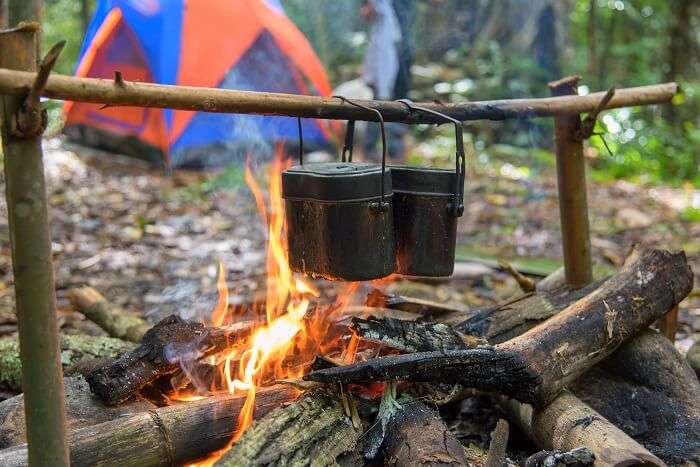
Too addicted to your tech? A jungle safari and camping is probably not a good idea for you then! One can only enjoy a jungle safari when they allow themselves to blend in with nature, disconnecting from the outside world, and forgetting about the worries of life and work. A safari trip takes you deep into the heart of nature, amid everything serene and secluded, so that you might be able to get a taste of how peaceful life was before urbanization and industrialization set in.
Be Prepared For Temperature Fluctuations
While the afternoons would squeeze the last drop of sweat out of you, the evenings might freeze you to death. It is always a good idea to keep a constant check on the temperature variations and predictions about the reserve area you’re visiting and prepare yourself likewise. Thanks to Google, it is ever so easy to stay up to date on such information so that you may not have to suffer nasty surprises on your trip into the wild.
Pre-Book Your Safari And Accommodation
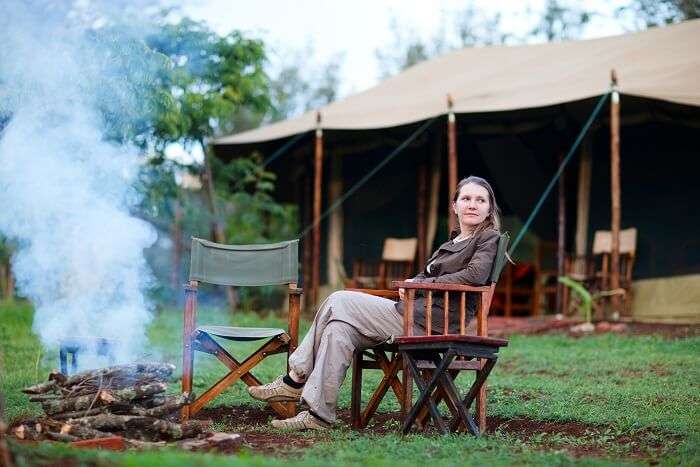
Suggested Read: Things You Ought To Know Before Traveling #PackingHacksIncluded
Most African safari tips would tell you to pre-book safaris so as to avoid last minute hassles of waiting outside the ticket counter in long queues. If you’ve pre-planned your vacay, then booking your safari in advance is the best idea. Indian wildlife reserves and nature parks too offer online booking facilities these days to spare visitors the trouble of standing in long queues before slow ticket counters.
Bookings start way before the onset of summer. With limited safari tours per day in a limited number of vehicles per wildlife sanctuary, your chance of taking your family on that much-awaited safari tour will grow lesser with every delay. So make sure you book well in time to reserve yourself and your loved ones a seat on the vehicle of your choice and a room in the best hotel, lodge, or eco stay in the area.
Opt For Guided Organised Safari Tours
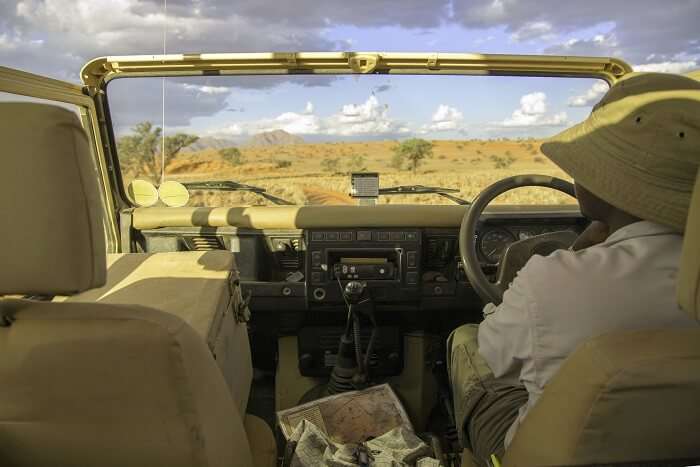
If you’re a pro at wildlife safaris, you can surely opt for a private tour. But then there’s no way you can know more than the (government authorized) forest guides who spend half their life inside the jungle you’re visiting. They are well equipped with the who, what, when, why, and how of every animal and bird in that jungle so that they’ll get you to the right place at the right time well before the beast has even graced the spot with his presence. All it takes them is a glance at that footprint to tell you which animal had crossed your path, and how long ago!
Book A Dawn Or Dusk Safari
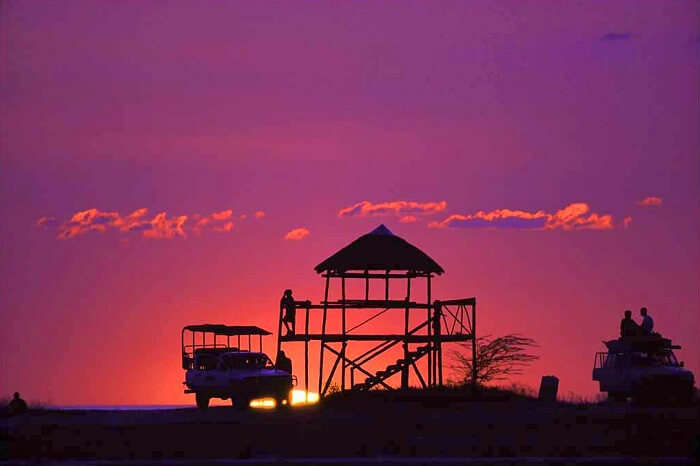
Image Source
Suggested Read: 18 Places You Need To Visit For The Best Wildlife Experience in India
The animals and birds are most active at this time, which is why most tips for jungle safari would tell you to book a dawn or dusk safari, or a full day safari beginning at dawn and ending at dusk. Don’t forget to leave very early in the morning for a dawn safari so as to avoid waiting at the entrance gates for things like permit checks.
2. What To Carry

Image Source Packing right is essential for a jungle safari in India and anywhere overseas. If you’re wondering what to take on safari, here are the things that we’d suggest:
- Electronics: A charged camera, extra batteries, extra memory cards, binoculars (ideal – 8X40 or 10X50)
- Sun Protection: A sunscreen lotion, sunshades, a wide brimmed hat, scarf (for dust)
- Personal Safety: Antiseptic cream, insect repellent cream, medication (if allergic to dust or certain flora type), antiviral hand wash, first aid kit, flashlight
- Important Documents: ID proof, tickets, booking confirmation (scanned beforehand)
- Food: Packed snacks like glucose biscuits, energy bars food (only to be eaten during break time), sufficient water
- Clothes: Thin layers (since the weather can be unpredictable)
- Some handy cash
Now, here are some things that ought NOT be in your safari luggage:
- A radio or any other musical item
- Perfume, deodorant, or any other kind of body fragrance
- Unwrapped, pungent food items
3. Dressing Up
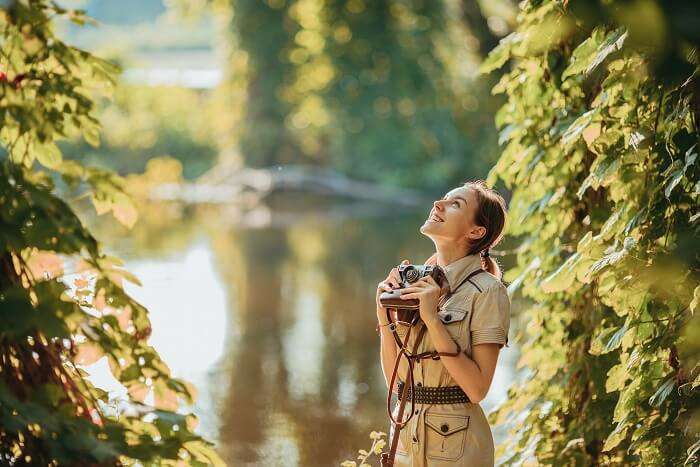
Suggested Read: Kruger National Park In South Africa Is Your Ultimate Date With The Wild
You may be a fashionista back home, but here, you have to dress up according to the norms of the jungle. Following are some basic things you need to keep in mind while dressing up for your safari. Abiding by these tips for jungle safari will ensure your safety and that of others.
- Wear comfortable, airy t-shirts, convertible cargo pants (preferably waterproof), fleece jackets
- Wear colours like Greens, Browns, Olives, and Khakis to blend in. Some African safari clothing tips tell visitors to avoid loud colours & bold prints
- Pick cloth material that is lightweight and breathable, like cotton
- Dress in layers to avoid plant allergies and beat the changing weather
- Avoid wearing flashy things like jewelry
- Cover your arms and legs. Sleeveless tops & capris won’t protect against insect bites
- Wear strong, comfortable, and covered sports shoes (or sneakers) with socks
- Mask your face to protect from the dust
- Wear a hat or a cap to keep the heat away
A jungle safari will surely take you on a joyride amid the wild and let you get up and close with nature. Though filled with exotic flora and fauna, a jungle can be dangerous if one isn’t cautious. It is imperative to stay safe as one wrong move can turn your ‘fun’ into a disaster. Any general safari advice will always include the below mentioned safety tips.
Follow these DOs and DON’Ts of jungle safari in India and abroad for an enjoyable and safe time inside the jungle.
DOs Of Jungle Safari
- Familiarise yourself with the park’s rules and regulations beforehand and make sure you follow them when inside the park
- Follow the safari guide’s instructions at all times like your life depends on it (and it does!)
- Maintain silence during the safari
- Drive slowly and cautiously to avoid hitting animals as they might appear suddenly
- Maintain a safe distance from the animals
- You must follow the park timings
- Allow the animals to cross first while driving through the forest
- Honour safari timings. Reach on time and leave on time
- Keep the camera flash off
- Bring a flexible camera cover to protect it against the dirt and dust
- Empty your bowels and bladders before you set off on the safari or wait for the toilet break
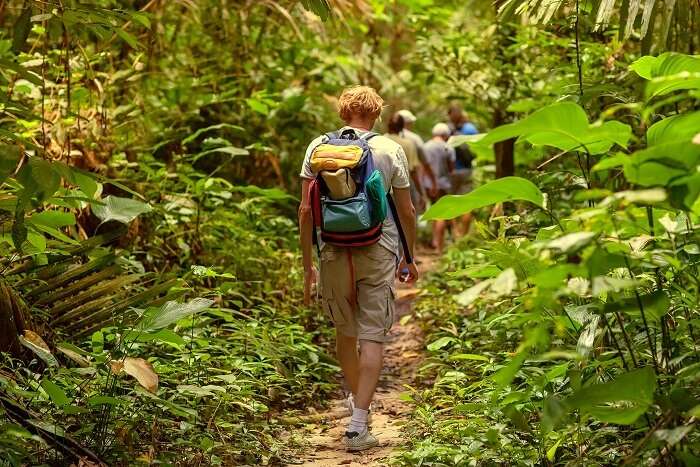
DON’Ts Of Jungle Safari
- Speak loudly or play music inside the park reserve
- Use your mobile phone as much as possible
- Drink or smoke in the forest
- Leave combustibles in the car
- Offer eatables to birds and animals
- Tease, disturb, or hit animals
- Eat at any time other than the allotted break time
- Litter around
- Get off your vehicle unless asked to
- Wear bright and exposing clothes
- Wear deodorants and perfumes
- Bring infants or children with dust and fur allergies
- Enter restricted and prohibited areas

Suggested Read: 10 Packing & Luggage Hacks For The Smart Traveler
The forest may be a tourist attraction for you, but it’s the home of the wild animals and birds you find inside it. They rule it, not you! If you expect your guests to respect the rules and regulations of your house, then you also need to follow the norms of the jungle where you are the guests. There can’t be better tips for jungle safari to make one understand the importance of abiding by the guidelines set down by wildlife sanctuaries across the world.
5. Wildlife Spotting
You’ve planned your trip well, you have all you need for your safari by your side, and you are also following the forest rules. But, alas, you still haven’t been able to spot a single wild animal or bird. Where then, did you go wrong?

There are certain factors you need to consider before embarking on a jungle safari so that you have the maximum chance of spotting the beast of the jungle that you came all the way to see. The following tips for jungle safari will help you while you’re planning and executing your safari ride so that you can make the most of your visit to the jungle.
- Read about the animals and birds in the park to know where you are most likely to spot them on your tour
- As established, visit the jungle in the dry season. During summers, most of the animals can be found lurking near the water holes, exposed owing to the less amount of vegetation at these spots
- Start the safari at dawn and end it by dusk as most of the animals can be found outside their shelters during this time. Reptiles and crocodiles can be spotted during midday
- Stay longer at the hotspots, like canals, river banks, lakes, ponds, etc
- Pick a good guide. Safari guides always stay in contact with each other, so if one spots the highlight animal of the park, it will be communicated to the others and everyone will get a chance to witness it
- Make use of your binoculars (or your camera’s zoom lens). They can help you identify animals hiding in the bushes
- Familiarise yourself with the sounds of different birds if you’re into bird watching and photography
- Be still and maintain silence while observing or photographing fauna, especially birds
In the end, let’s wrap up with a very important safari advice – respect wildlife and do your bit to conserve nature .
Further Read: 15 Best Wildlife Resorts In India For A Thrilling Experience
We hope these tips for jungle safari will help you have an adventure of a lifetime when you traverse deep into the mighty jungle. Follow these guidelines to make the most of your trip and also stay safe at the same time. Know of any more safari tips? Let us know in the comments below.
Recent Posts

2024 में रोमांच चाहने वालों के लिए 10 दार्जिलिंग में एडवेंचर स्पोर्ट्स

Parachutisme en Inde: 9 meilleurs endroits pour explorer le ciel en 2024

12 Parcs aquatiques à Hyderabad pour profiter à nouveau de vos vacances d’été à l’ancienne en 2024
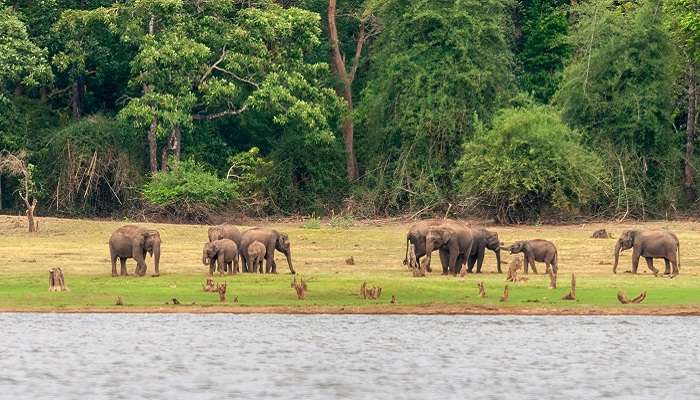
Kabini Wildlife Safari: A Comprehensive Guide For Your Next Adventure

7 Essential Tips For Solo Travellers To Enjoy A Hassle-Free Travel Experience
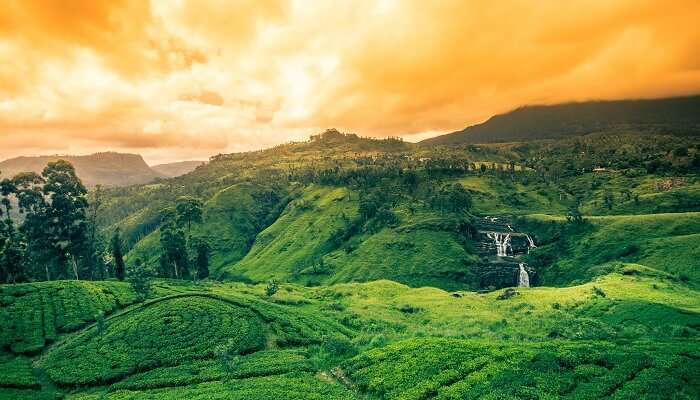
Sri Lanka Bike Tour: Adventurous Encounters On A Road Trip
Trending Blogs

20 Mysterious Places In India To Visit In 2023 More Bizarre Than The Bermuda Triangle

10 Scariest Roads In India That Are A Driver’s Nightmare

101 Places To Visit In India Before You Turn 30 in 2024

35 Exotic Places To Visit In December In India 2024 To Enjoy A Surreal Vacation

60 Best Honeymoon Destinations In India In 2024

95 Best Honeymoon Destinations In The World In 2023 For A Romantic Escape!
Best Places To Visit In India By Month
Best places to visit outside india by month.
- TravelTriangle
- Wildlife »
- Tour Packages
- Honeymoon Packages
- Family Packages
- Budget Tour Packages
- Luxury Tour Packages
- Adventure Tour Packages
- Group Tour Packages
- Kerala Tour Packages
- Goa Tour Packages
- Andaman Tour Packages
- Sikkim Tour Packages
- Himachal Tour Packages
- Uttarakhand Tour Packages
- Rajasthan Tour Packages
- Tour Packages From Delhi
- Tour Packages From Mumbai
- Tour Packages From Bangalore
- Tour Packages From Chennai
- Tour Packages From Kolkata
- Tour Packages From Hyderabad
- Tour Packages From Ahmedabad
- Kerala Tourism
- Goa Tourism
- Sikkim Tourism
- Andaman Tourism
- Himachal Tourism
- Uttarakhand Tourism
- Rajasthan Tourism
- Hotels in Kerala
- Hotels in Goa
- Hotels in Sikkim
- Hotels in Andaman
- Hotels in Himachal
- Hotels in Uttarakhand
- Hotels in Rajasthan
Sundarban Wildlife Blog
- +91 7003625631
A Detailed Guide to Sundarban Jungle Safari

- Date - 28 February, 2024
Located in the deltaic region of the Bay of Bengal, the Sundarban mangrove forest is a testament to nature’s raw beauty and untamed wilderness. Traveling on a Sundarban Jungle Safari is a journey into the heart of one of the world’s most diverse ecosystems, offering a tremendous experience for traveling jungle safari. The ecosystem of Sundarban is matched perfectly for humans, reptiles, birds, and animals. So, there are many kinds of wild animals and wild birds available in the mangrove forest. Therefore, it is most dangerous to live or spend valuable time in Sundarban. But, you can visit Sundarban Safari safely anytime now because of the availability of an experienced and strong tour guide team. Apart from this, a set of rules is also made by various departments of the government of West Bengal for smooth and safe visiting.
Many Sundarban tour operators offer many Sundarban tour packages to suit different preferences and budgets like Sundarban tour 2 nights 3 days , Sundarban tour 1 night 2 days , and 1 day Sundarban tour . Apart from this, many tour operators allow their tourists to make a customized tour packages for their family and friends according to their budget. So, you can make a Sundarban trip from Kolkata easily at any time.
Sundarban tour 2 Nights 3 Days:-
For those looking for an immersive experience, the 2 Nights 3 Days Sundarban tour package is a perfect choice for all of us. This tour package allows you to explore the labyrinthine waterways, dense mangrove forests, and abundant wildlife that call the Sundarbans home. You can enjoy your tour comfortably will cover all the sightseeing.
Family Tour Package is also available for making a Sundarban tour with a full family from child to older person. The Sundarban family tour package is an excellent opportunity for building strong bonds among all the family members and nature. With activities suitable for all ages, including wildlife spotting, bird watching, and village visits, families can create lasting memories while reconnecting with each other and the environment. But you should make your family tour to Sundarban with an experienced Sundarban tour operator or travel agency for smooth execution.
Sundarban Tour Guide: A knowledgeable and experienced tour guide is essential to complete the Sundarbans experience. From spotting wildlife to navigating complex waterways, a skilled guide balances the safari with insight and anecdotes, enriching travelers’ understanding of this unique ecosystem.
Sundarban Trip from Kolkata: Conveniently located near Kolkata, Sundarbans is easily accessible, making it an ideal destination for a quick getaway. Be it by road or waterway, the Sundarbans journey sets the stage for adventure, promising excitement and discovery at every turn.
Conclusion: A Sundarban jungle safari offers a perfect blend of adventure, relaxation, and exploration. Whether traveling on a family vacation or seeking solitude amidst nature, the Sundarbans beckons with their mystery and charm, promising an experience that lingers in the memory long after the trip is over. So pack your bags, embark on an unforgettable adventure, and let the unknown beauty of the Sundarbans captivate your senses.
SEND ENQUIRY
Jungle Crocodile Safari
- (506) 8993 5348
- (506) 8888 8900
- [email protected]

- Jungle Crocodile Safari Tour
- Tarcoles River Birding Experience
- Wildlife Photography Cruise
Jungle Crocodile Safari & Bird Watching
Jungle crocodile safari & bird watching tour.
Embark on a journey through the renowned Tarcoles River, and encounter the formidable American Crocodile, Costa Rica’s top predator, up close. This expedition offers an amazing experience to witness crocodiles and immerse yourself in the wonderful wildlife thriving along the river. And for bird enthusiasts, this journey is a fantastic opportunity to spot a variety of species, with a wide array to discover. Experience the magic of nature in all its glory!
Description
- 1 hour and a half Approximately
- Private dock
- Motorboat 4 Stroke outboard
- Hand sanitizer
- Antibacterial soap and water for washing hands
- Certified Captain
- Bilingual Certified Guide (Spanish/English)
- Safety equipment
- Private parking
- Brochure showing all 60 birds species commonly sighted along the river
- Water bottle refill station
- You can also enjoy our souvenir shop
- Restaurant service and souvenir photo (additional)
Live the experience so that no one else tells you
Some photos.

- GOOGLE MAPS
- Tarcoles river Birding Experience
- +(506)89935348
- +(506)88888900
- [email protected]
Copyright © 2023 Jungle crocodile safari | Developed by Tico Manager
- Terms and conditions

Rajaji Jungle Safari

- JHILMIL SAFARAI PACKAGE
- MOTICHUR SAFARI PACKAGE
- RANIPUR SAFARI PACKAGE
- CHILLA SAFARI PACKAGE
- RAMGARH JUNGLE SAFARI PACKAGE
RAJAJI TIGER SAFARI DEHRADUN
- MOHAND RANGE JUNGLE SAFARI
- MOUNTAIN JUNGLE JEEP DRIVE
- RAJAJI PEBBLE RIVER JEEP DRIVE
- WILDLIFE PHOTOGRAPHY
- RAJAJI NATIONAL PARK SAFARI PACKAGE
- TICKETS & ENTRIES
- BOOKING FORM
RAJAJI JUNGLE SAFARI
Jungle safari.
Jungle Safaris at Rajaji Tiger Reserve is a awesome experience. It needs a lots of patience for facing the wild encounter. During the Safari everyone can see many wild animals like leopard, black bear Asian elephants, king cobra, Spotted deer, Chital & Sambar etc. animals.
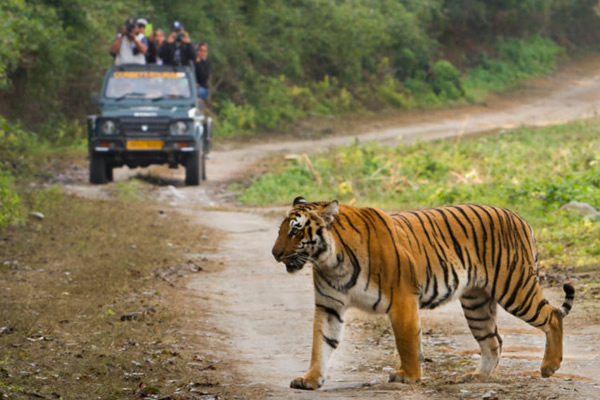
Perfect bird watching destination, more than 350 species of endemic and resident birds, passage and migratory birds. The bird diversity in Rajaji National Park is very rich. 9 types of Woodpeckers, Great Hornbill, Pied Hornbill, Winter migrated birds are main among all.
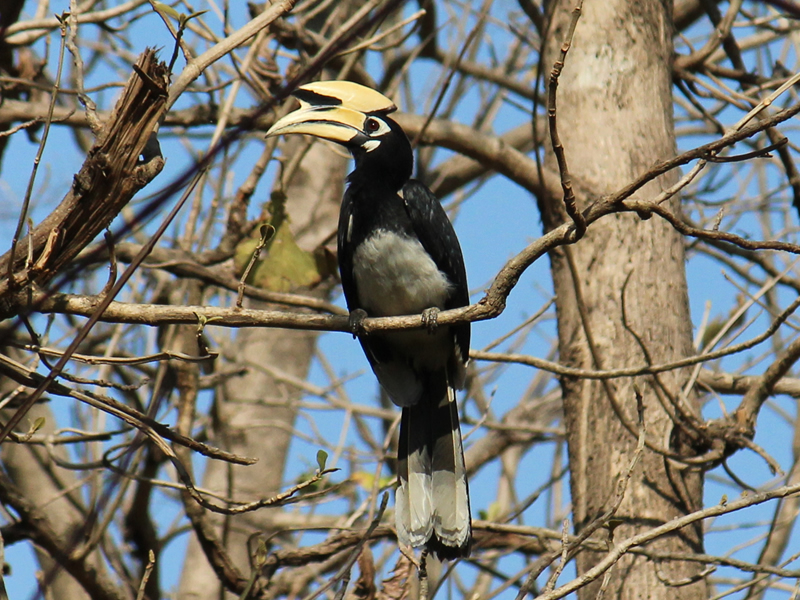
STAY IN RAJAJI
If the mystery and the excitement of an authentic wildlife tour is part of your travel itinerary, when you spend a night at Rajaji Tiger Reserve. 1 Night, 2 Nights, 3 Nights with extensive wildlife safari tours packages available with us. Satisfaction Guaranteed.

Rajaji National Park Haridwar
Rajaji National Park Haridwar is dedicated to the conservation and protection of its diverse wildlife. With dedicated conservation initiatives and awareness programs, the park plays a pivotal role in safeguarding the endangered species and preserving the delicate balance of the ecosystem, ensuring a sustainable future for the region’s natural heritage.
Rajaji National Park Haridwar Timings and Reservations
Understanding the park’s timings and reservation procedures is crucial to make the most of your visit to Rajaji National Park Haridwar . With proper planning and timely reservations, visitors can ensure a seamless and enjoyable exploration of this picturesque natural haven, creating lasting memories amidst the untamed beauty of the Himalayan wilderness.
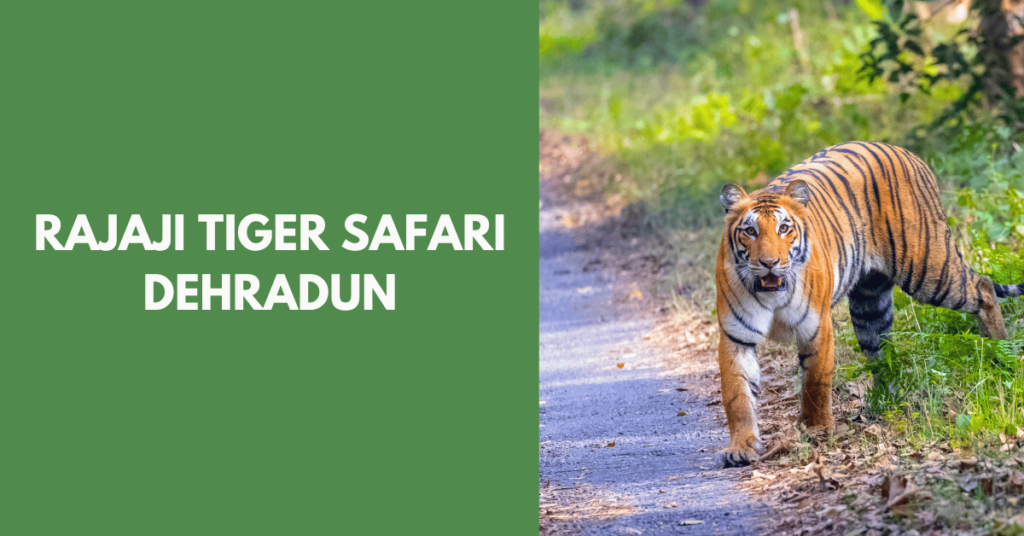
Discover the unique biodiversity of Uttarakhand’s Rajaji Tiger Reserve without disturbing its tigers. Explore Rajaji National Park’s woodlands and grassy meadows with a jungle safari guide while searching for leopards and sloth bears. The best time to visit is between November and June when migratory birds flock to Rajaji’s habitats. After enjoying a jeep safari or trekking through the Shivalik Ranges near Dehradun, head back to Haridwar or Rishikesh for some white-water rafting.
Read More >>
ABOUT RAJAJI TIGER RESERVE
On 15th April, 2015, the final notification of Government converted Rajaji National Park as Rajaji Tiger Reserve (2nd Tiger Reserve of Uttarakhand and 48th of India) and area has been increased from 820.42 sq.km to 1075.17 sq.km. It is located in the Shivalik Range of Himalaya and spread over three districts of Uttarakhand, i.e. Dehradun, Haridwar and Pauri Garhwal.
The unique habitat and rich biodiversity of the reserve attracts nature lovers, birders and photographers.
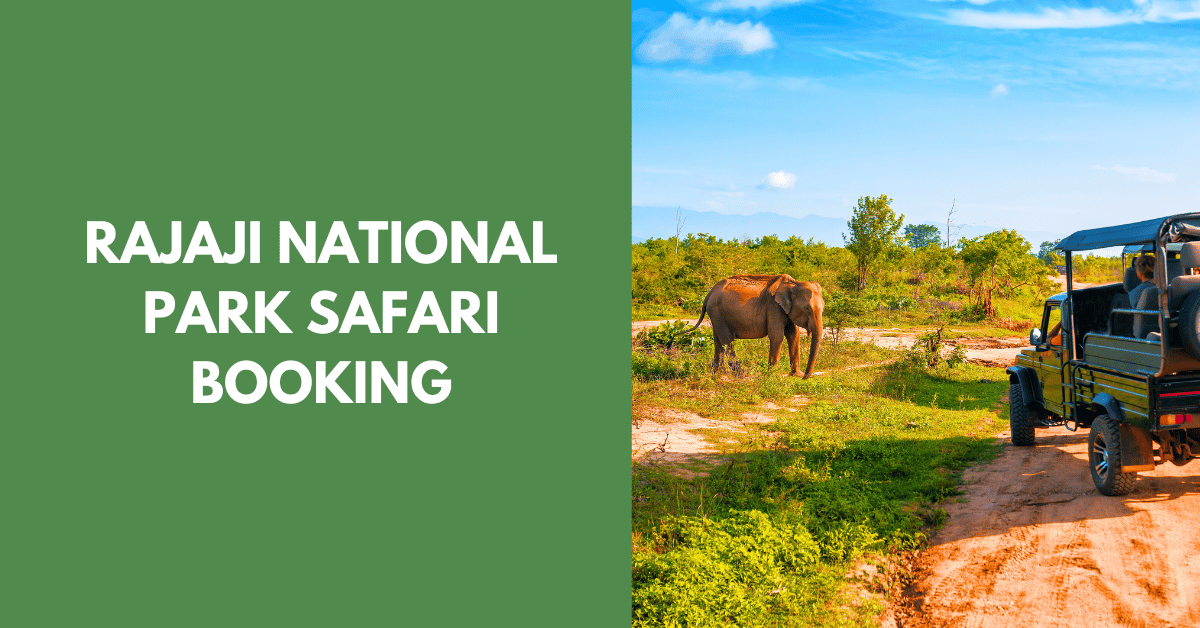
Rajaji National Park Safari Booking
If you’re interested in booking a safari in Rajaji National Park, you have two convenient options to choose from. The first option is to make an online booking through the official government website. This allows you to secure your permit ahead of time and ensures a smooth and hassle-free experience.
Alternatively, if you prefer a more spontaneous approach, you can also make your safari booking directly at the park’s entrance gate. This allows you to check availability on the spot and make immediate arrangements for your wildlife adventure.
Whether you choose online or counter booking, it’s important to note that permits are required for entry into Rajaji National Park. These permits not only help manage visitor numbers but also contribute to the conservation efforts within the park.
Rajaji National Park boasts a diverse range of flora and fauna, making it a popular destination for nature enthusiasts and wildlife lovers alike. From majestic elephants to elusive tigers, the park offers ample opportunities for wildlife sightings and stunning photography.
During your safari, experienced guides will accompany you, providing valuable insights into the park’s ecosystem and pointing out unique features along the way. They are well-versed in spotting animal tracks and understanding their behavior, ensuring an exciting and informative journey through Rajaji National Park.
It’s advisable to plan your safari well in advance, especially during peak seasons when demand is high. Online booking allows you to secure your preferred dates and timeslot, guaranteeing an unforgettable wildlife experience without any last-minute disappointments.
So whether you decide to book online or opt for on-the-spot counter booking, don’t miss the chance to explore the wonders of Rajaji National Park – its breathtaking landscapes and incredible biodiversity await your discovery!

Rajaji National Park Safari Cost
The cost of a safari in Rajaji National Park varies depending on several factors. Firstly, there is a per-person charge of 150 rupees. In addition to this, there is an entry fee of 250 rupees for each gate you enter through. Lastly, there is the cost of hiring a jeep or gypsy for the safari.
The expenses associated with the jeep fare also vary based on the number of gates you plan to visit. Each gate charges a different fee for jeep hire, adding to the overall cost of the safari. The combined amount for all these charges makes up the total cost of a safari in Rajaji National Park.
It’s important to note that these costs are subject to change and it’s advisable to check with the park authorities or tour operators for the most accurate and up-to-date pricing information before planning your visit.
A safari in Rajaji National Park provides visitors with a unique opportunity to explore its diverse wildlife and natural beauty. From majestic elephants and tigers to various species of birds and reptiles, this national park offers an unforgettable experience for nature enthusiasts.
The park is located at the foothills of the Shivalik range and spreads across three districts: Haridwar, Dehradun, and Pauri Garhwal in Uttarakhand, India. It covers an area of approximately 820 square kilometers, making it one of India’s largest national parks.
To enhance visitors’ experience, Rajaji National Park offers expert guides who accompany tourists during their safaris. These guides are well-versed in local wildlife and provide valuable insights into conservation efforts and sustainable practices within the park.
In conclusion, while planning your visit to Rajaji National Park for a safari adventure, keep in mind that there are multiple costs involved such as per-person charges, entry fees for each gate visited, as well as jeep fares which differ based on gate locations.
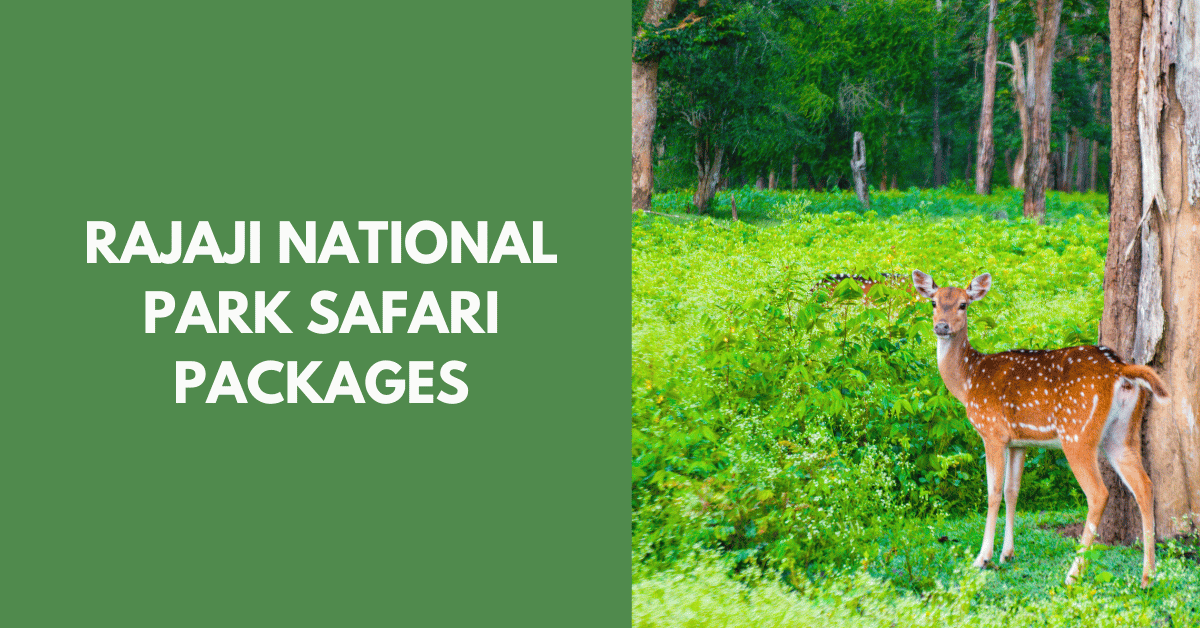
Rajaji National Park Safari Packages
Rajaji National Park offers two slots for jungle safaris: a morning and an evening slot. The park also provides different safari packages for guests to choose from. One option is for those who wish to solely enjoy the jungle safari, while another package includes an overnight stay in a guest house.
The Rajaji National Park Safari Package includes a one-night stay combined with two jungle safaris. For those who opt for only one jungle safari, there is also a package available that includes a one-night stay with three safaris.
Guests have the flexibility to select their preferred combination of activities and accommodations based on their interests and preferences. Whether it’s exploring the wilderness during the day and returning to a comfortable guest house at night or immersing oneself in multiple safaris, there are options suitable for all.
During the jungle safaris, visitors can witness the diverse flora and fauna that call Rajaji National Park their home. From majestic elephants to elusive tigers and vibrant bird species, there’s always something captivating to encounter.
Additionally, Rajaji National Park boasts picturesque landscapes comprising dense forests, gushing rivers, and serene meadows. The opportunity to experience these breathtaking surroundings makes the park a popular destination among nature enthusiasts and adventure-seekers alike.
With its strategic location near major cities like Delhi and Dehradun, access to Rajaji National Park is convenient for travelers seeking an unforgettable wildlife experience without venturing too far off-track.
Overall, booking a safari package in Rajaji National Park ensures not only memorable encounters with wildlife but also comfortable accommodations amidst nature’s splendor. Whether it’s through witnessing magnificent creatures or embracing the tranquility of the park’s natural beauty, this destination promises an unparalleled adventure in every way.
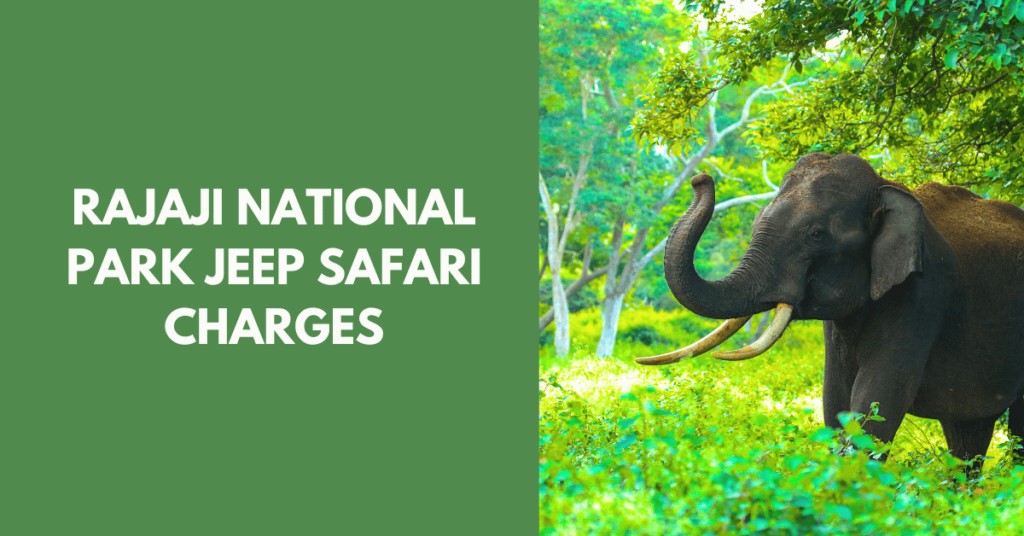
Rajaji National Park Jeep Safari Charges
The charges for jeep safaris in Rajaji National Park vary depending on several factors. For Indian visitors, the government permit fee is 150 rupees per person, and there is an additional entry fee of 250 rupees. The fare for the jeep ride varies at each gate within the national park.
Foreigners, on the other hand, are required to pay a higher government permit fee of 600 rupees per person. They also need to pay an entry fee of 500 rupees. Just like for Indians, the jeep fare for foreigners also differs based on the chosen gate for the safari.
For instance, let’s take a closer look at Chilla Gate. The exact charge for a jeep safari at this specific gate may slightly differ from other gates within Rajaji National Park.
It is important to note that these charges serve as a means to support the maintenance and conservation efforts of Rajaji National Park. By paying these fees, visitors contribute to safeguarding this beautiful natural reserve and its wildlife.
Before planning a jeep safari in Rajaji National Park, it is recommended to inquire about the specific charges at your desired gate. This will ensure that you have accurate information regarding pricing and can make appropriate preparations for your visit.
Overall, be prepared for varying costs when embarking on a jeepride through Rajaji National Park depending on whether you are an Indian or foreign visitor and which gate you choose to enter through.
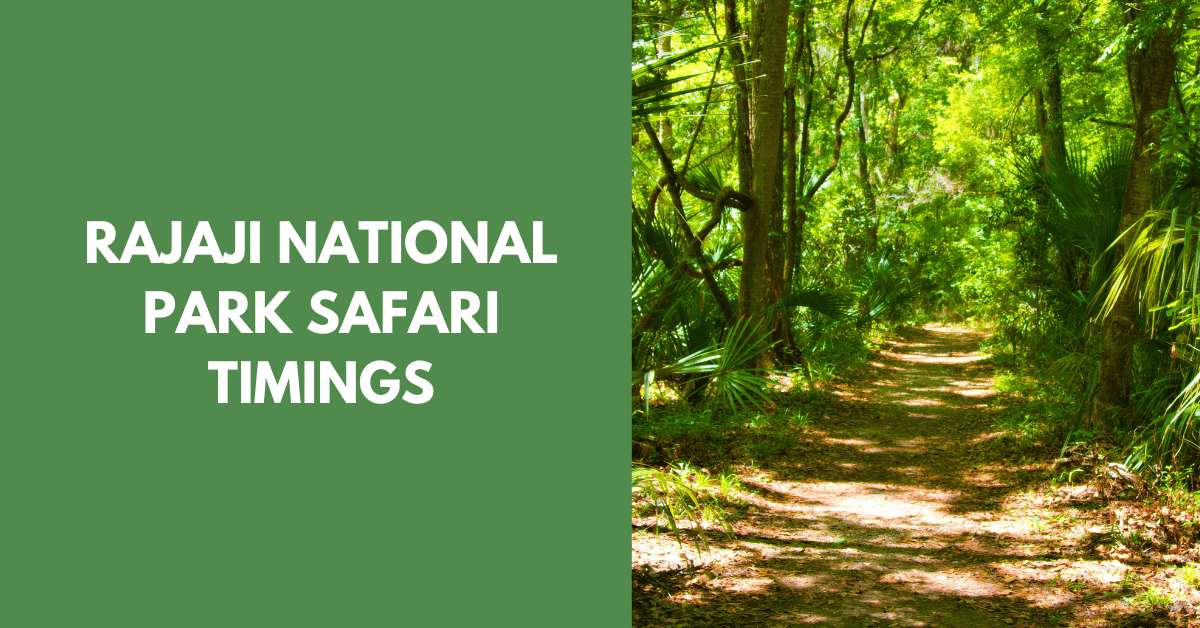
Rajaji National Park Safari Timings
Rajaji National Park offers safari experiences to nature enthusiasts and wildlife lovers throughout the year. However, the timing of these safaris varies depending on the season. During the winter months, when the weather is pleasant and mild, visitors can embark on a safari from 7:00 am to 10:00 am in the morning or from 2:00 pm to 5:00 pm in the evening.
In contrast, during the summer season when temperatures tend to rise, it is advisable to head out for a safari early in the day. The morning safaris begin at 6:00 am and conclude at 9:00 am, allowing visitors to enjoy the coolness of the morning hours while observing various species of animals and birds in their natural habitat.
For those who prefer a more leisurely afternoon excursion through the park during summer, there is also an evening safari option. From 3:00 pm to 6:00 pm, visitors can experience exciting encounters with wildlife accompanied by knowledgeable guides.
It’s important to note that Rajaji National Park remains closed during the monsoon season due to safety concerns and potential adverse weather conditions. Therefore, it is crucial for prospective visitors to plan their trip accordingly and avoid planning a visit during this period.
Whether exploring vibrant flora or catching glimpses of majestic fauna such as elephants, tigers, leopards, or deer species like chital or sambhar, Rajaji National Park promises an unforgettable safari experience. Visitors are advised to book their safari in advance and familiarize themselves with safety guidelines provided by park authorities to ensure an enjoyable and responsible journey through this breathtaking wilderness.
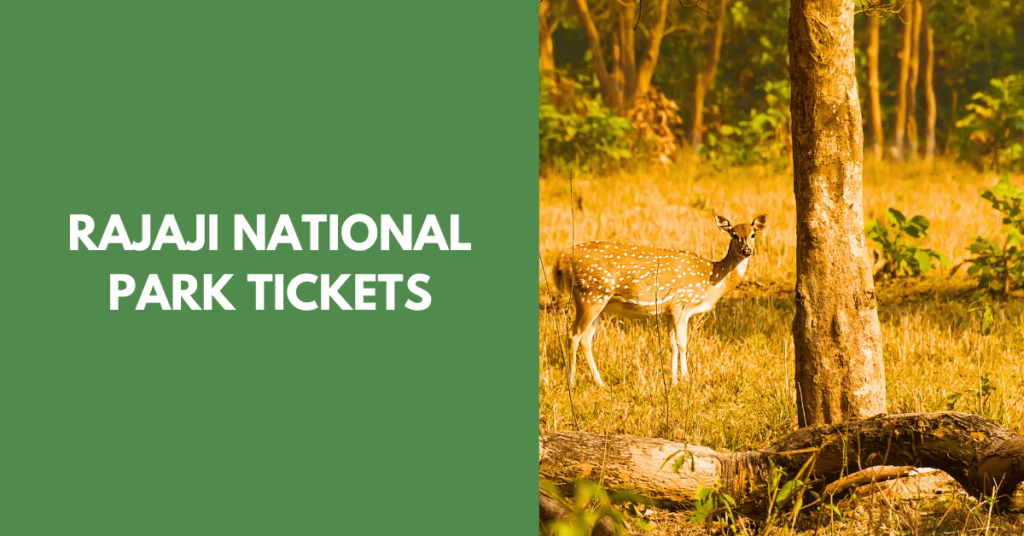
Rajaji National Park Tickets
Rajaji National Park offers a variety of ticket options for visitors to explore its natural wonders. For Indian nationals, the entry fee is 150 rupees per person, while foreigners are charged 600 rupees. Additionally, there is an additional fee of 250 rupees for Indians and 500 rupees for foreigners if you wish to avail the jeep safari experience within the park.
It’s important to note that the jeep safari fee is not included in the Rajaji National Park tickets and needs to be booked separately. The park offers different rates for jeep safaris at each gate, allowing visitors to choose from various routes and experiences. To make things more convenient, Rajaji Tiger Reserve provides an online booking facility on their official website for those interested in securing a spot on a safari jeep.
By booking your safari jeep online, you not only ensure your place in one of these exciting adventures but also have the opportunity to select from available options based on your preferences and time constraints. Exploring Rajaji National Park through a jeep safari provides an up-close encounter with its diverse wildlife and stunning landscapes, making it a memorable experience worth adding to your itinerary.
Whether you’re an Indian or foreign visitor, don’t miss out on this chance to immerse yourself in the beauty of Rajaji National Park. With affordable ticket prices and easy online booking for Safari jeeps, planning your visit has never been easier. Embark on an unforgettable adventure into nature’s paradise at Rajaji National Park today!
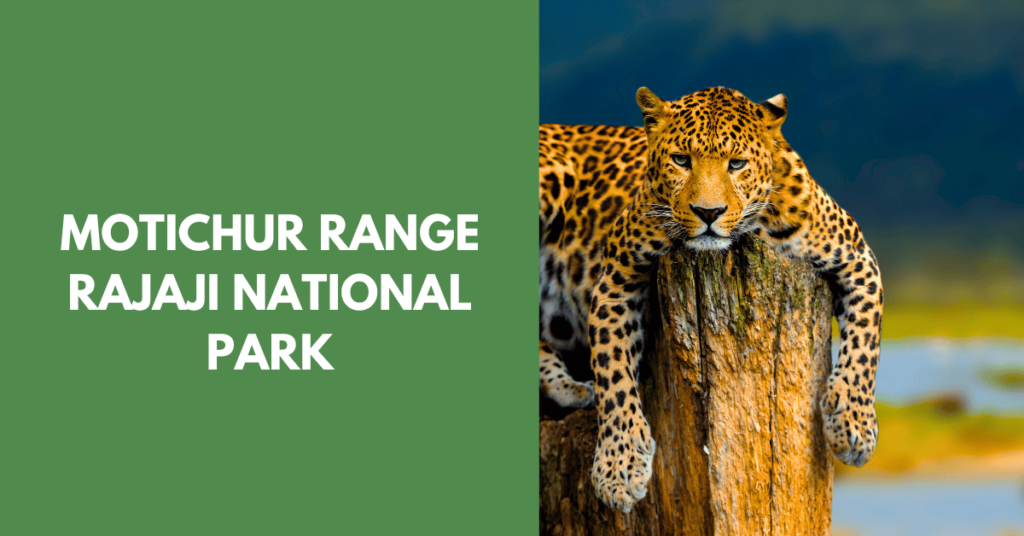
Motichur Range Rajaji National Park
The Motichur Range is widely regarded as the prime gateway for jungle safari enthusiasts visiting the Rajaji National Park. It offers an immersive experience, allowing visitors to embark on a thrilling 20 to 25 km long safari through its verdant forests. The most notable feature of this jungle is its dry riverbeds and dense sal forests, which add an element of mystery and beauty to the surroundings.
Anyone hoping to catch a glimpse of some of the park’s iconic wildlife won’t be disappointed. Motichur is home to majestic creatures such as tigers, leopards, and elephants that roam freely within their natural habitat. Additionally, animal lovers will also find deer, sambhar, nilgai, wild boar, and many other fascinating species dwelling amidst this diverse ecosystem.
For bird enthusiasts or those with an affinity for avian creatures, Motichur Safari Zone is a must-visit destination. It is famous for being a haven for exotic birds like the hornbill and woodpecker. Their captivating colors and melodious calls fill the air with a symphony of nature’s finest sounds.
Situated in close proximity to Shivaliks’ foothills, Motichur Safari Zone provides an ideal setting for adventure seekers looking to escape into the wilderness. Its strategic location makes it easily accessible for both domestic and international tourists eager to explore India’s rich biodiversity.
As one journeys through Motichur Range during their safari expedition, they are sure to encounter breathtaking landscapes that encapsulate the raw beauty of Rajaji National Park. Lush greenery blankets vast stretches of land while sunlight filters through dense canopies creating mesmerizing plays of light and shade.
During the safari tour, experienced guides accompany visitors providing them valuable insights about forest preservation efforts and interesting facts about the park’s flora and fauna. They ensure both safety and education go hand in hand throughout this exhilarating experience.
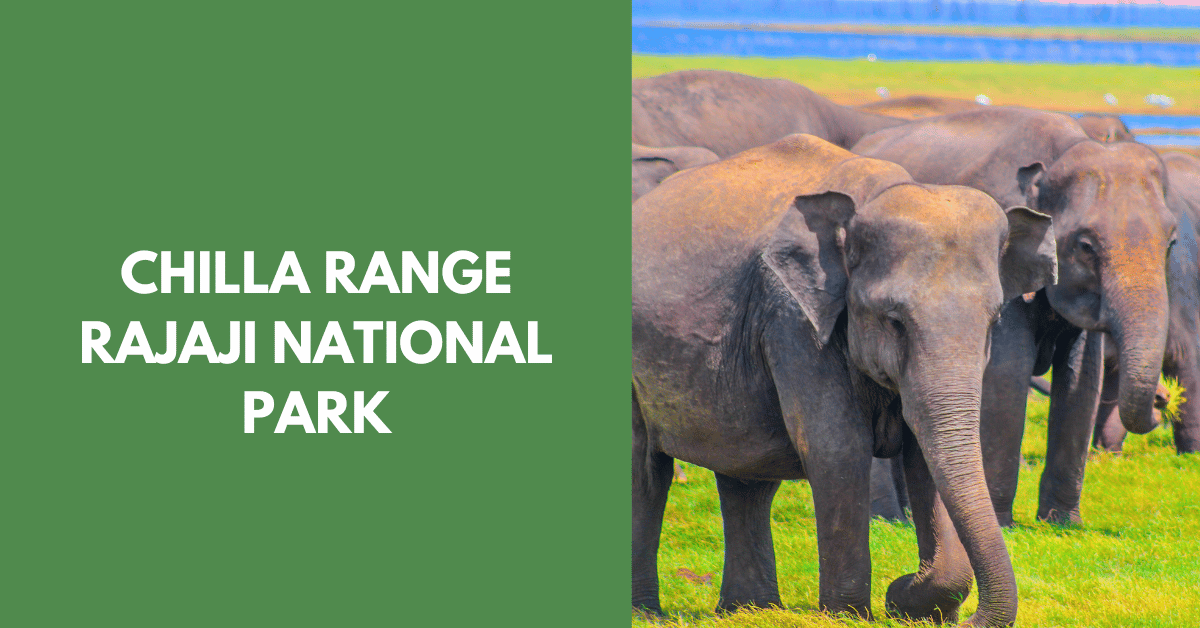
Chilla Range Rajaji National Park
The Chilla Range at Rajaji National Park is widely recognized as the most popular jungle safari gate. Known for its abundance of wildlife, this region boasts the highest number of tigers within the park. Spanning an area of 36 kilometers, visitors can explore the Chilla Safari Zone through open jeeps, providing an immersive and exciting experience. Alongside tigers, other impressive sightings include leopards, elephants, wild boar, nilgai, hyenas, and jackals. In addition to these enchanting animals, over 150 species of birds can be found in the Chilla range. These include the striking hornbill and various mesmerizing wood species. Exploring this diverse range promises encounters with captivating wildlife and stunning avian life at every turn.
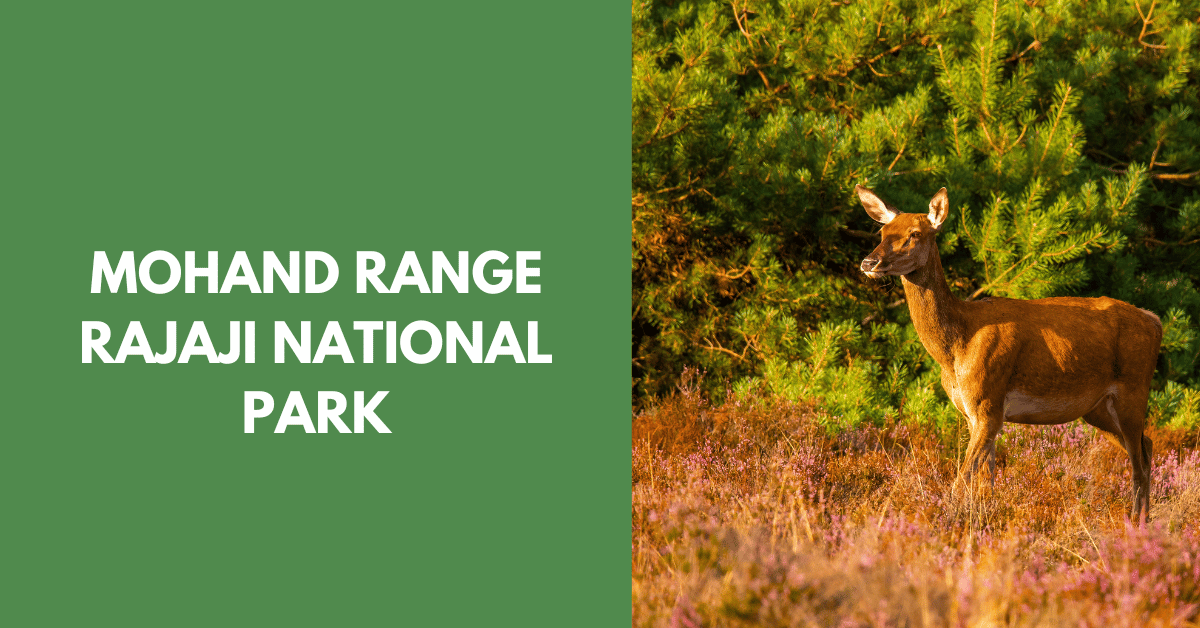
Mohand Range Rajaji National Park
Mohand Rajaji National Park, located just 20 kilometers away from Dehradun, is a popular attraction for wildlife enthusiasts. Situated near the town of Mohand, this national park can be easily accessed through the Saharanpur to Dehradun National Highway. One of the main highlights of this park is the exciting jungle safari that spans approximately 35 kilometers in the Mohand Gate area. Taking around two hours to complete, this safari provides visitors with a thrilling opportunity to explore the diverse flora and fauna in the region.
The Mohand Safari Zone within the national park is particularly renowned for its leopard sightings. It is not uncommon to spot three to four leopards during your safari experience here. To maximize your chances of encountering these majestic creatures, it is recommended to dedicate at least three hours for your visit.
Apart from leopards, the Rajaji National Park also boasts a rich variety of other wildlife species such as elephants, tigers, spotted deer, sambar deer, and langurs. Bird enthusiasts will also be delighted with over 300 avian species found in this sanctuary.
The dense forests and hilly terrain make the Mohand Rajaji National Park an ideal destination for nature lovers and adventure seekers alike. The vast expanse of greenery offers numerous hiking trails and camping sites where visitors can immerse themselves in the tranquility of nature.
For those who prefer a more relaxed experience, there are beautiful picnic spots scattered throughout the park where families and friends can enjoy some quality time together while reveling in the scenic surroundings.
Visitors planning a trip to Mohand Rajaji National Park should note that early mornings or late afternoons are considered optimal times for wildlife sightings. Additionally, it is advisable to hire a guide who can provide valuable insights about the park’s history and ensure a safe exploration of its wilderness.
In conclusion, Mohand Rajaji National Park serves as an incredible getaway for nature enthusiasts seeking a thrilling wildlife experience.
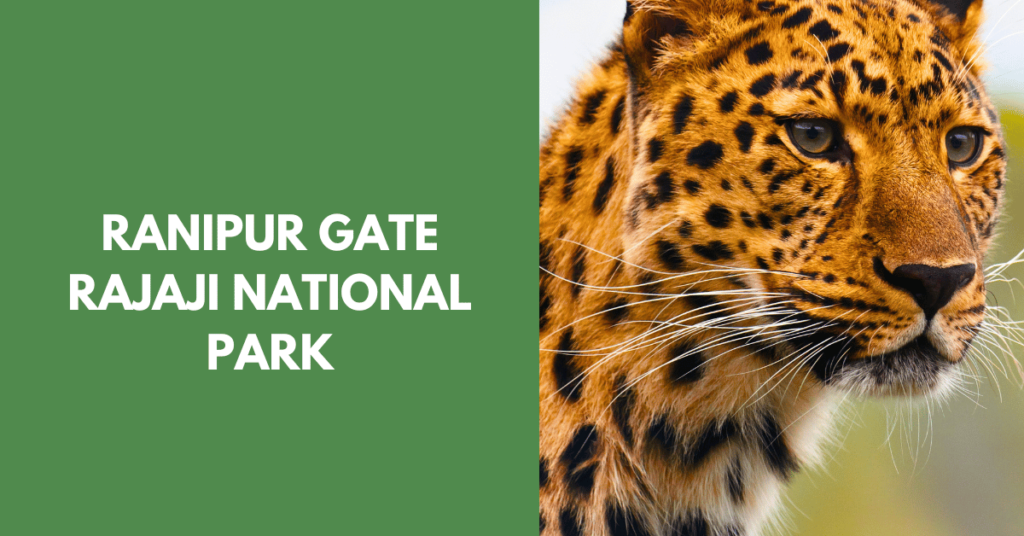
Ranipur Gate Rajaji National Park
Situated near the BHEL Sector 5, within the Ranipur Range of Rajaji National Park, lies the enchanting Sureshwari Devi Temple. What makes this location even more special is its proximity to Ranipur Gate, a renowned spot for safari enthusiasts. Here, visitors are treated to a breathtaking spectacle of wildlife, with abundant sightings of Deer, Sambhar, Nilgai, Peacock, Wild Boar, and majestic herds of elephants. For those seeking an exhilarating experience with the elusive Leopard, Ranipur Safari Zone is a must-visit destination.
The Forest Department has designated an expansive area spanning approximately 30 kilometers solely for safari purposes. This carefully crafted safari zone guarantees an immersive experience in nature’s lap where tourists can marvel at the rich biodiversity that Rajaji National Park offers.
Venturing into the Ranipur Safari Zone promises encounters with both common and rare wildlife species. The park is teeming with graceful Deer bounding through verdant landscapes while mighty Sambhar proudly grace the scenery. Visitors may also catch glimpses of Nilgai roaming freely alongside elegant peafowl flaunting their iridescent plumage.
Wild boars occasionally make appearances during safaris as well, adding to the excitement and diversity of encounters in this unique habitat. However, it is truly the grandeur of herds of elephants that captures everyone’s attention in this part of Rajaji National Park.
Located at such close proximity to Ranipur Gate further enhances visitors’ chances of spotting these gentle giants majestically traversing their natural realm. Whether one chooses a jeep or elephant safari, exploring Ranipur Safari Zone promises unforgettable sights and memories.
Finally yet importantly, this region within Rajaji National Park holds significant allure for wildlife enthusiasts due to its reputation as a haven for leopards. The elusive spotted cat finds solace in these dense forests and rocky terrains of the park’s Ranipur Range.
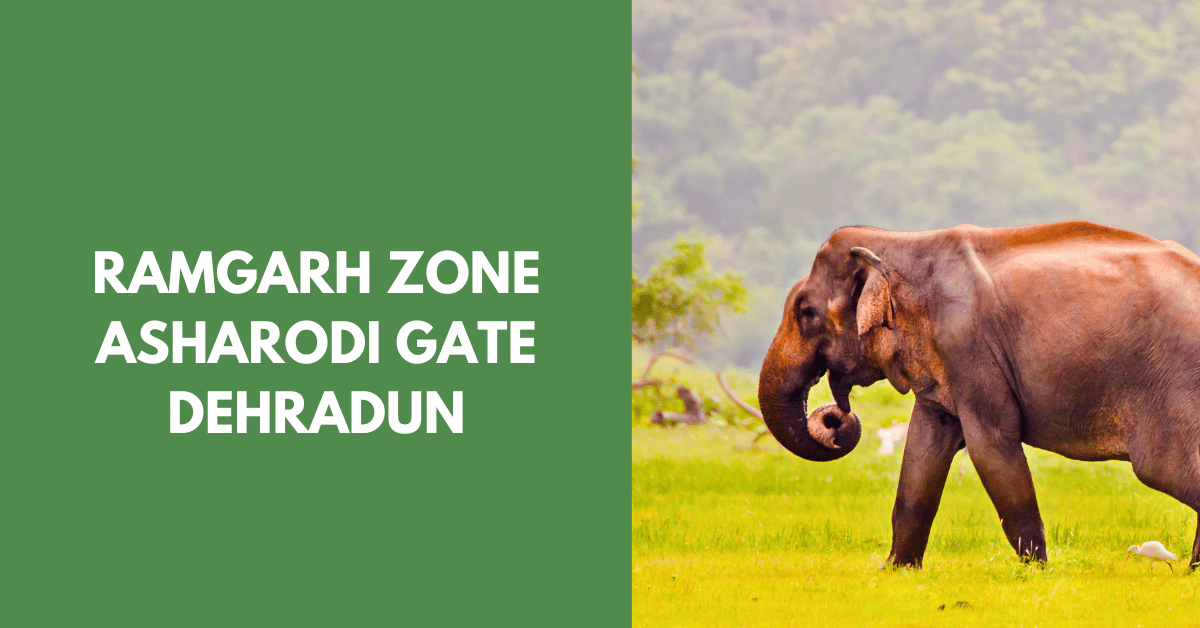
Ramgarh Zone Asharodi Gate Dehradun
Ramgarh Zone, located in close proximity to Dehradun, serves as a gateway to Jungle Safari. Despite being relatively new, it is not widely recognized yet. The forest within this zone primarily consists of Sal trees and serves as a natural habitat for various wildlife species. Visitors often have the opportunity to witness herds of elephants, leopard deer, sambhar, nilgai, monkeys, langur, and wild boars in the Ramgarh forest. Renowned for its dense foliage, the picturesque Ramgarh Zone offers a captivating sight to all who visit. Occasionally, sightings of Kakar (Indian muntjac) can also be witnessed here.

Jhilmil Jheel Safari Haridwar
Jhilmil Jheel Safari offers a unique and enjoyable experience for nature enthusiasts. Located within the Haridwar Forest Division in Uttarakhand, this conservation reserve is known for its abundant wildlife and beautiful surroundings. One of the main highlights of Jhilmil is the presence of Barasingha, also known as swamp deer, which can only be found in this region of Uttarakhand.
To reach Jhilmil, visitors need to travel approximately 18 km from Haridwar. The journey takes you through expansive forests of Eucalyptus trees, adding to the allure of the safari. As you explore the area, you’ll come across a mix of forest types and witness the contrast between the lush lowlands along the river Ganges and dense woodlands.
The diversity of wildlife at Jhilmil is truly captivating. Apart from spotting Barasingha, lucky visitors may even catch a glimpse of crocodiles during their safari adventure. These reptiles can occasionally be seen basking in the sun or lazily swimming in the nearby water bodies.
For those interested in birdwatching, Jhilmil offers a treat with its plethora of avian species. From colorful kingfishers to majestic eagles soaring high above, there’s no shortage of feathered friends to marvel at during your visit.
Exploring Jhilmil Jheel Conservation Reserve allows individuals to immerse themselves in nature’s beauty and observe firsthand how dedicated efforts are being made to protect its unique flora and fauna. It provides an excellent opportunity for both education and relaxation amidst stunning natural landscapes.
Overall, a visit to Jhilmil Jheel Safari promises an unforgettable experience filled with adventure and discovery. Whether it’s encountering elusive wildlife or reveling in breathtaking scenery, this conservation reserve offers something special for every nature lover.

Gohri Range buffer area Rajaji National Park
The Vindhyavasini temple area and Bayali forest area are two distinct sections within the Gohri Range of Rajaji National Park. Each area is renowned for its unique forest habitats, offering visitors diverse experiences. The Vindhyavasini area boasts a lush riverine landscape, enriched by the flowing waters and vibrant vegetation along the banks. In contrast, the Bayali forest area stands out due to its dense mixed forests, comprising a harmonious blend of various tree species.
During the monsoon season, both areas offer the opportunity to embark on safaris that provide an exhilarating experience amidst nature’s grandeur. These safaris take visitors through the heart of these breathtaking landscapes, allowing them to witness the natural splendor that flourishes during this time of year.
It is worth mentioning that these monsoon safaris become particularly popular when all other gates leading into Rajaji National Park Safari are closed. This is when local guides step in and organize safaris exclusively in the Vindhyavasini and Bayali areas of Gohri Range.
For those seeking an immersive encounter with the riverine ecosystem, exploring Vindhyavasini temple area will be an ideal choice. The serene surroundings combined with sightings of various aquatic species create a remarkable setting for nature enthusiasts and photographers alike.
On the other hand, adventure-seekers may find themselves drawn towards the Bayali forest area within Gohri Range. The densely packed trees provide ample opportunities for wildlife enthusiasts to spot elusive creatures while immersing themselves in this enchanting habitat.
In conclusion, Vindhyavasini temple area and Bayali forest area within Gohri Range present visitors with contrasting yet equally captivating forest ecosystems within Rajaji National Park. Whether one seeks tranquility or thrilling wildlife encounters amid dense foliage, these areas offer something truly extraordinary – especially during monsoon season when alternative gateways to the park are closed off.
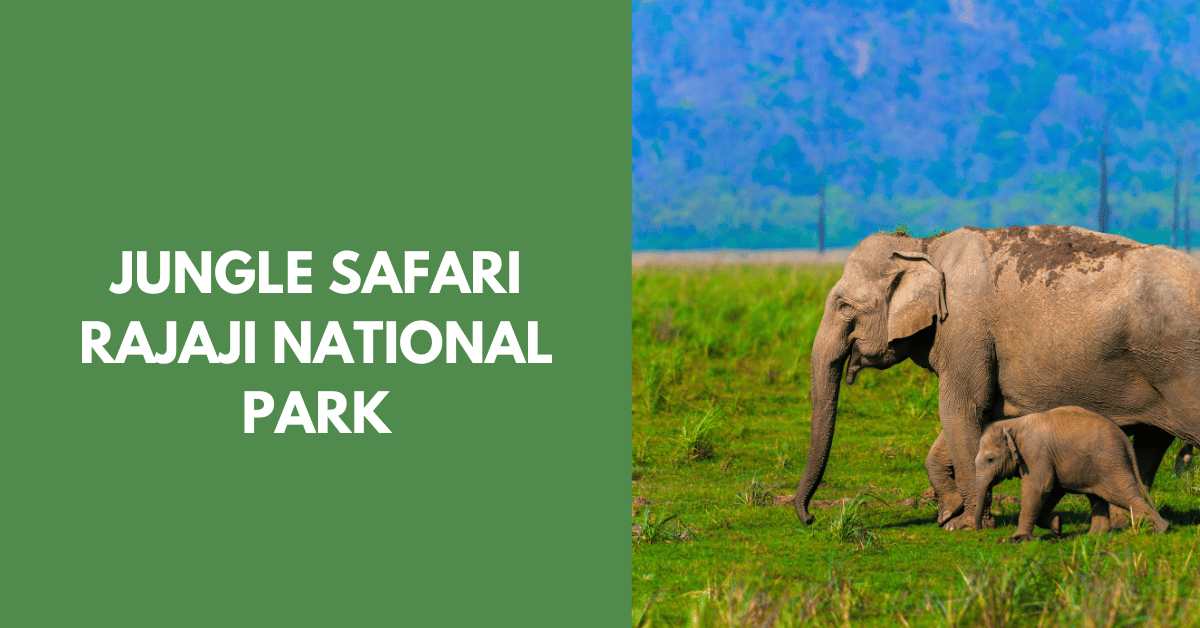
Jungle Safari Rajaji National Park
Rajaji National Park offers numerous opportunities for jungle safaris, allowing tourists to immerse themselves in the enchanting wilderness. With a variety of gates available, visitors can choose from five different locations to embark on their thrilling adventure: Chilla Safari Gate, Motichur Safari Gate, Ranipur Safari Gate, Mohand Safari Gate, and Ramgarh Safari Gate. Additionally, there is also a gate specifically dedicated to accessing the Jhilmil Jheel Conservation Reserve.
At Chilla Safari Gate, tourists can experience the park’s diverse wildlife and admire the beauty of the Ganges River flowing through it. The area is renowned for its population of majestic elephants, whose presence adds an element of excitement and awe to the safari experience.
Motichur Safari Gate offers visitors a chance to witness fascinating wildlife such as leopards and tigers roaming freely in their natural habitat. This area boasts stunning landscapes with verdant forests and crystal-clear streams, providing an unforgettable safari experience.
For those looking for a peaceful escape amidst nature’s tranquility, Ranipur Safari Gate is an ideal choice. Here, travelers can explore dense forests teeming with deer species like sambar and chital while listening to the harmonious melodies of birds fluttering overhead.
Mohand Safari Gate provides adventurers with a unique opportunity to encounter animals like wild boars, jackals, and langurs in their element. The picturesque surroundings complete with hilly terrains and lush greenery enhance the overall safari experience.
Lastly, Ramgarh Safari Gate caters to those seeking a diverse range of experiences within Rajaji National Park. This gateway allows tour-goers to observe both avian wonders like vultures and terrestrial creatures such as sloth bears in this mesmerizing ecosystem.
In addition to these gates within Rajaji National Park itself lies another entrance leading directly towards Jhilmil Jheel Conservation Reserve.
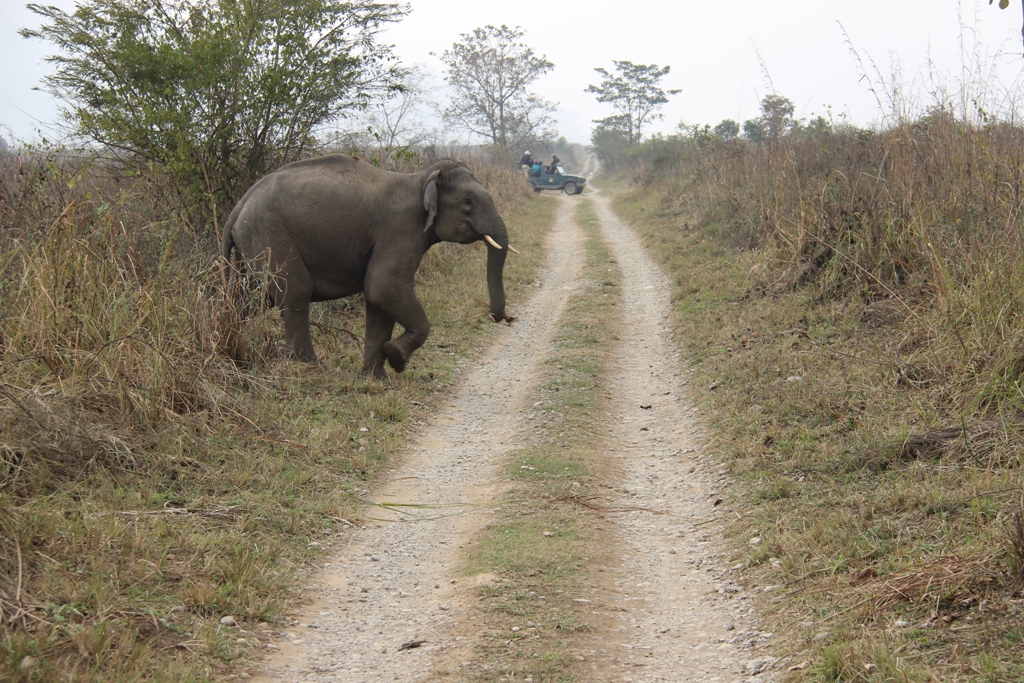


Jungle Safari

3 KM to SOU

Visiting Hours
8:00 AM to 5:00 PM

Every Monday

Tickets Other Tickets Professional Video camera (DSLR camera) ₹3500 Professional Camera (DSLR Camera) ₹200 Amateur Video Camera (Photography) (Except Mobile) ₹125 Amateur Camera (Photography) (Except Mobile) ₹40
Adult - ₹200, Child (3-15 Yrs.) - ₹125

Suitable For
Family with Childrens

key Facts & Attractions
The Jungle Safari Near Statue of Unity Kevadia is a major Tourist Destination at Kevadia in Narmada district of Gujarat State, spread over an area of around 375 acres with extremely undulating topography. The Jungle Safari has 4 Bird aviaries. These two aviaries are having state of the art geodesic design designated for Indian and exotic Birds. The geo domes of Bird aviaries are going to cover an area of 1.5 hectares with complex architectural design to create a structural marvel. The Project has 16 different enclosures for animals including carnivores and herbivores. Enclosures for different Indian and exotic species are made catering to habitat requirements of different species.
The main focus of this Jungle Safari at Statue of Unity is to provide education of the rich biodiversity of our planet, as well as a recreational place for all. Enjoy the roaring of lions and the elegant stride of the tigers and leopards on the prowl. Take a walk through the raised walkway of the Fly High Aviary and enjoy seeing the colorful birds like Red Jungle Fowl, Partridge, Pelican, Ibis, Parrots and many more. A unique experience with Exotic Birds at Jungle Safari like Macaw, Cockatoo, Pheasants, Black Swan, Gray Parrot, Cape Crowned Crane and more colors from South America, Australia, South East Asia and Africa and other parts of the globe. A beautiful souvenir shop to buy souvenirs to carry back home as gifts and remember the wonderful time that you have spent at the Jungle Safari. The Jungle Safari is located in the beautiful hills near the dam. You can enjoy the scenic beauty of the hills surrounding the zoo.
- Gallery Item

The best time to visit Jungle Safari is during the October to February months.
The different types of birds and animals are there and you can view their activities, spot reptiles and watch birds and animals in their natural habitats.
Bring a camera to capture beautiful memories at Jungle Safari of Statue of Unity, But note that you need a separate ticket for carrying cameras. Avoid any type of alcoholic or tobacco substance & Harmable weaponry.
You can book a tickets online as well as offline, But we prefer to book tickets online for hasslefree experience.
Things To Carry
- Print Out of Ticket
- Professional Camera
- Sun Glasses
- Cap, Hat, Umbrella,
- Extra Pair of Shirt/T-Shirt
- Empty Water Bottle
Things To Not Carry
- Outside Food
- Drone Camera
- Pet Animals
- Pan, Gutkha
- Cigarettes, Tobacco
- Inflammable Objects
- Harmable Weaponry
- Suitcase, Big Bags, Luggage
Nearby Foodstall
- Free Drinking water stall

Jawai Leopard Safari – The Hidden Gem (Best Time To Visit, Things to Do)
Overview: Jawai leopard reserve is a beautiful tourist place in Pali. With stunning scenery and abundant wildlife, it is a great place to visit in Rajasthan for those who are interested in nature, wildlife, and photography.
Watching Leopards in a gypsy climbing rocky hills is a unique experience. Isn’t it?
Jawai leopard reserve is a hidden place where you can get an unforgettable experience of Leopard sightings.
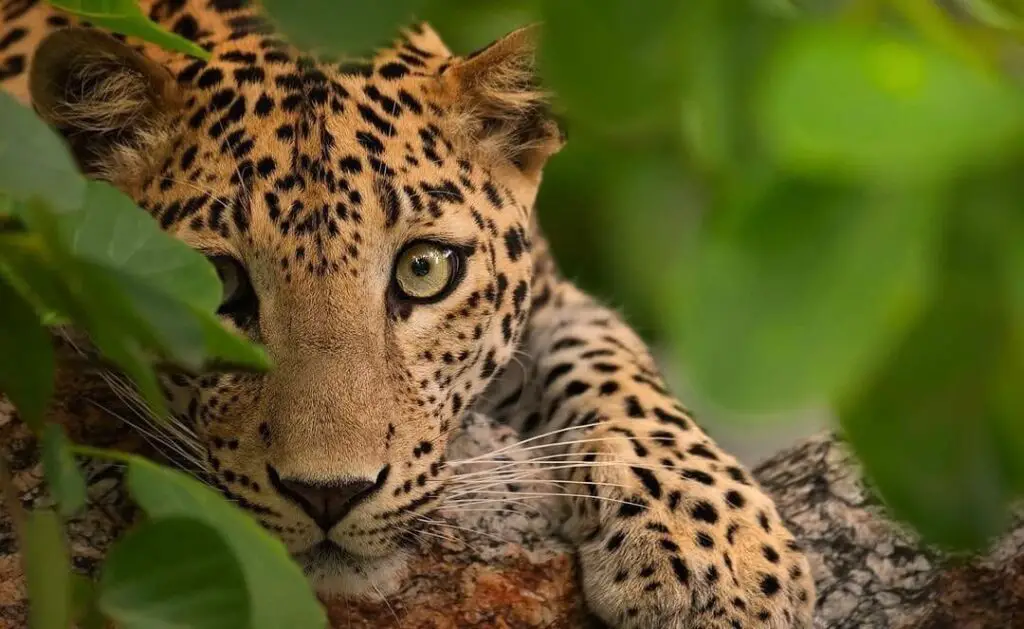
Over the past decade, I’ve had the privilege of exploring some of the most adventurous destinations, but Jawai holds a special place in my heart.
Let me take you on a virtual journey to this stunning leopard sanctuary that seamlessly weds nature’s beauty with the wild charm of leopards.
Read: Great Monsoon Places in Rajasthan
Jawai Leopard Reserve – Best Place to See Leopards in Rajasthan
Jawai Leopard Reserve is located near Jawai dam in Pali district. The Jawai landscape is a blend of rocky hills, lush greenery, and serene water bodies. All these makes Jawai bandh leopard reserve a beautiful tourist places to visit in Rajasthan.
Jawai sanctuary is a home to approximately 60 leopards. The rocky terrain provides a natural camouflage to the leopards. This makes it challenging to spot them. But that’s where the excitement live. Right?
But, a guided Jawai leopard safari increases your chances of a wonderful leopard sighting.
The magnificent Jawai dam adds feathers to the beauty of the whole region. The mighty Aravalli hills surrounding the area makes Jawai a perfect habitat for leopards.
🙏 Sorry to disturb you in the middle.
95% of our website visitors read our article, get the benefit and leave, without saying thanks. I am sure you are not one them. Show your love. Share the article with your friends!
Over the years, I’ve been fortunate to witness these majestic leopards lounging on the rocks, their amber eyes shining in the daylight. Believe me, it is a memorable experience that you should not miss.
Check: Jaipur Travel
6 Exciting Reasons to Visit Jawai
Jawai is an undiscovered tourist place in the north-western region of Rajasthan. It is a vast area of over 60 square kilometers that has 16 villages and the Jawai Bandh (English: Dam).
1. Leopard Reserve & Wild Animals
There is a Jawai leopard reserve where you can find many leopard safari points. Apart from leopards, you can see hyenas, sloth bears, wild boars, jackals and foxes in the Jawai forest.
2. Rich Birdlife (Migratory Birds)
The area of Jawai also features a rich birdlife. There are 100+ species of birds including 60+ migratory species (Flamingos, cranes etc ). The foreign birds stay at the Jawai Dam area from November to April.
Read: Shocking Facts About Bhangarh Fort
3. Jawai Dam
Jawai Dam is a 62-foot-deep water reservoir. It stretches for 5 kilometers. Jawai Dam is one of the largest dams in Rajasthan. The surrounding area is stunning to see due to the water and lush green land.
4. Beautiful Landscape
Jawai has dense forest and rocky hill formations. The water spread through the Aravali hill range makes Jawai a picturesque sight to visit in Rajasthan.
Read: Upcoming Bird Sanctuary in Jaipur
5. Crocodiles- King of Chambal River
In the waters, you can see hundreds of crocodiles swimming and resting. Jawai’s surroundings and weather support crocodiles and their growth.
Each year, tourists come to Jawai for leopard sightings. Besides, they also enjoy watching birdlife, wild animals and crocodiles.
6. Ranakpur Jawai Bandh Festival
Every year in December month, the tourism department of Rajasthan organizes a three-day “Ranakpur Jawai Bandh Festival”. This festival is a heart-pleasing experience for tourists visiting Jawai, Pali.
- Date of “Ranakpur Jawai Bandh Festival” in 2023: 21 & 22 December
- Main Activities: Camel polo, horse race, matka race, goat competition, mustache competition, and tug of war etc.
At the festival, you can enjoy folk dance and singing performances by local artists. You can also be a part of Kite flying, parasailing, and hot air balloon competition.
Read: Rajasthan Tourism Festivals
Jawai Leopard Safari – Timings
The Jawai Leopard Safari is an amazing experience. It allows tourists to see leopards in their natural habitat.
With an expert guide there are better chances of spotting leopards. The early morning and evening safaris are ideal times to witness the leopards when they are most active.
Morning Safari
Morning Leopard safari in Jawai start at around 5 AM. Leopards are most active before sunrise. So it is the best time to see leopards.
Read: Exciting Bundi Travel
Evening Safari
The evening safari for Jawai leopard sighting starts at 4 pm. Evening safari time can change in winter and summers. Evening leopard safari is a fantastic opportunity to spot leopards, as they often come to quench their thirst during this time
Watching the sun setting below the horizon at the Jawai Dam is also a great moment that you can cherish in evening leopard safari at Jawai sanctuary.
Upto 40% Off, Travel Gears & Essentials ➛ Deals
Things to Do at Jawai, Safaris and Activities
There are many adventure and outdoor activities organized by Jawai travel operators. These activities provides great fun and boost your adrenaline. 😉
Some of the great Jawai activities are:
Jawai Leopard Reserve – Best Time to Visit
The best time to visit the Jawai leopard reserve is during winter season (October to March). The weather in winter season is pleasant and perfect for jungle and leopard safari. Friendly weather during winter supports your journey and you don’t get tired easily.
Read: Kota Travel Guidebook
Jawai Leopard Safari Booking
You can book Jawai leopard safari tickets via various safari booking providers. These Jawai safari booking operators are convenient option to enjoy the Leopard safari in Jawai.
There are many hotels, resorts and lodges that provide Jawai safari tours. You can also book your safari tour through them.
Read: Places to visit near Jaipur
Jawai Leopard Safari Price
The ticket price for Jawai leopard safari depends on the tour operators or you contact. Different hotels, lodges, tour operators offer different safari packages for Jawai leopard tour.
The cost for Jawai leopard safari ranges from ₹2000 to ₹5000 per person. Different travel operators provides different facilities with their offered package.
Also Read: Jhalana Leopard Safari
Jawai Leopard Reserve – Hotels
Jawai leopard sanctuary is a hidden tourist attraction. Not many tourist visit here often. Despite that, Jawai offers a range of accommodations to suit different budgets.
Upto 60% OFF on Jawai Resort & Hotels ➛ Check Deal
From luxurious tented camps, resorts, lodges, homestays to hotels there’s something for everyone.
Jawai Leopard Safari – Things to Remember
Please be aware that camping in Jawai reserve or any solo jungle activity in this wildlife-rich area is risky. To avoid any mishaps, it is always best to go with a reputable Jawai safari camp operator.
Other things to keep in mind before going for a Leopard safari in Jawai:-
- Loose fitting clothes can create problem, don’t wear them.
- Summer at Jawai leopard sanctuary is hot, wear covered clothes to protect yourself
- Apply sunscreen to protect your skin from sunlight
- Wear UV protected sunglasses
- Wear a hat or cap
- Don’t get off the vehicle unnecessarily
- Don’t provoke wild animals
Upto 70% Discount on OYO Hotel ➛ Search
How to reach Jawai Leopard Sanctuary?
The nearest airport to Jawai safari is Jodhpur airport which is 153 Km away from Jawai. Another airport is the Maharana Pratap Airport in Udaipur. This airport is 160 km away.
✈️ 25% OFF on Flights ➛ Search
Reaching Jawai by train is another option. The nearest railway station Mori Bera, which is 4 kms away. There are many trains run to Jawai several cities like Delhi, Jaipur, Mumbai, Udaipur etc.
Jawai leopard sanctuary is well-connected many cities via national and state highways. Places like Udaipur, Mount Abu, Kumbalgarh are well within a distance of 150 km.
Jawai Leopard Reserve – Celebrities’ Favorite
Celebrities are fond of Jawai Leopard Safari. Every year many Bollywood celebrities visit the leopard safari of Jawai. Recently, Katrina Kaif and Vicky Kaushal enjoyed their vacation at Jawai.
Some time ago, Ranbir Kapoor and Alia Bhatt also stayed at Jawai and enjoyed leopard sightings. Few years ago, Salman Khan the Bollywood actor also visited Jawai Bera leopard reserve.
The Jawai Leopard Reserve in Pali is a hidden tourist destination in Rajasthan.
It provides mesmerizing travel experience that stays in your head for a long time.
Leopards, migratory birds, crocodiles, and local communities makes the Jawai safari visit unforgettable.
If you’re seeking a perfect weekend getaway with unique wildlife encounter, Jawai should be at the top of your list.
Show Your Love by Sharing:
- X (Twitter)
Related Posts
Jaipur to bisalpur dam – amazing trip in rain, bundi travel – less popular but tempting (don’t miss it), best jaisalmer desert camps – sleep under the stars.


The Best Travel & Tourism Blog of India
India Tours
- International Tours
- Destination Wedding
- Medical Tourism

Plan Your trip
15 Best Jungle Safari Destinations in South India
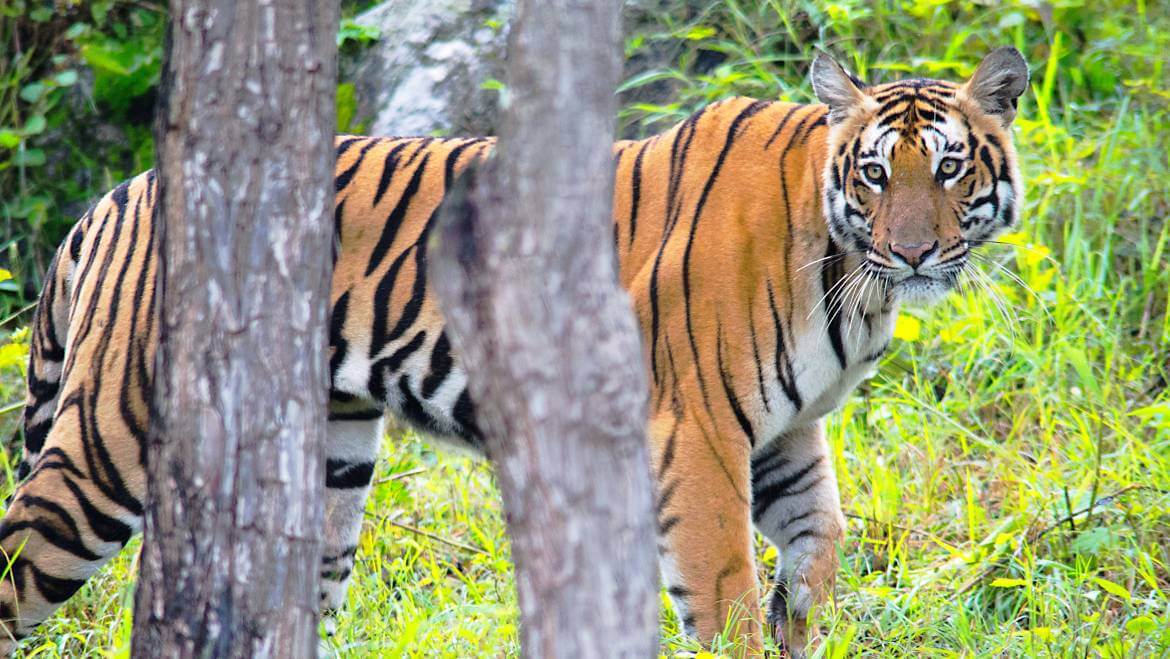
Wildlife sanctuaries, national parks and biosphere reserves are the places where animals as well as plants are protected from disturbance and provided a comfortable living. These places are established to protect and maintain natural habitats and wildlife populations. And, India has become one of the top countries in protecting the natural habitats of our planet. Being famous for its vast and varied geographical features, India is indeed a paradise for an incredible number of wildlife species.
You can find a huge number of national parks all across India. However, South India has been playing a crucial role in attracting hordes of wildlife enthusiasts throughout the year. The densely populated forests of the South Indian states (Karnataka, Kerala, Andhra Pradesh, Tamil Nadu and Telangana) located in the lap of the Eastern and Western Ghats mountains are the main reason behind this popularity.
Compared to North India, the national parks in South India are untouched and their beauty is unparalleled. These parks have been taking a major part in creating South India the best for wildlife tourism. We have created a list of the best national parks and wildlife sanctuaries in South India below. Without travelling to these places your South India wildlife tours could not be completed.
- Bandipur National Park
- Periyar National Park
- Silent Valley National Park
- Mathikettan Shola National Park
- Guindy National Park
- Eravikulam National Park
- Mudumalai National Park
- Dandeli Wildlife Sanctuary
- Nagarhole National Park
- Bannerghatta National Park
- R. Hills Wildlife Sanctuary
- Kudremukh National Park
- Ranganathittu Bird Sanctuary
- Wayanad Wildlife Sanctuary
- Viralimalai Wildlife Sanctuary
Most Popular South India Jungle Wildlife Safari Tour Packages
Bandipur National Park, Karnataka
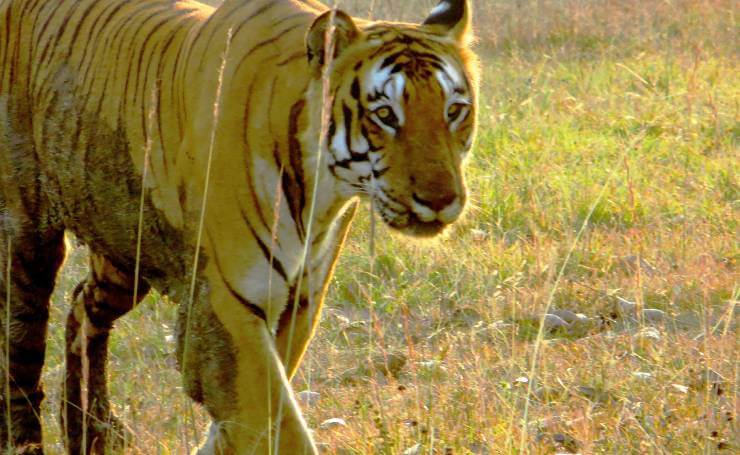
Previously treated as the private hunting grounds for Britishers and the kings, Bandipur National Park is now an important part of the Nilgiri Biosphere Reserve. It is located in the lap of Western Ghats and is regarded as one of the most popular national parks for Jungle Safari in South India. Bandipur National Park covers an area of around 872 square kilometres located in Karnataka on the Mysore-Ooty highway.
Bandipur National Park is the home to endangered Asiatic wild elephants, tigers, sloth bears, sambar, mouse bear, spotted deer, flying lizards and over 200 species of birds. You can explore the diverse flora and fauna of Bandipur National Park by availing of jeep safari tours.
How to Reach Bandipur National Park?
- The nearest airport to Bandipur is Mysore Airport from where you have to take a bus or car to cover a distance of 215 kilometres.
- The nearest railway station to Bandipur is Mysore City Junction (80 kilometres) and you have to hire a car to reach the national park.
- The park is located on the highway and can be reached via bus from various cities such as Bangalore, Coimbatore, Mangalore and Cochin.
Best Time to Visit Bandipur National Park for Jungle Safari
- Winter is the best time to visit Bandipur National Park during the months between November and February. It is the best time to watch migratory birds like Warblers, Peregrine Falcon and Flycatchers.
- However, for tigers sighting, the best time is during the months between March and June, because it is the best time tigers step out of their zones.
Other Interesting Blogs to Read
- 12 National Parks, Sanctuaries & Wildlife Places to Visit During Monsoon Season
- Wildlife Conservation: Reasons Why We Need to Save Wildlife
Periyar National Park, Kerala
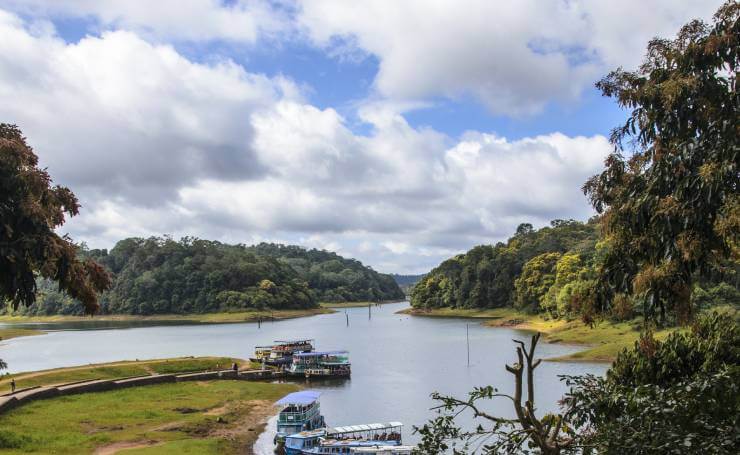
Periyar National Park , Thekkady, is surrounded by the banks of a huge lake and located in a dense hilly forest, famous for serving as a haven for a diverse variety of flora and fauna. Also known as a tiger reserve, the park is one of the best places for jungle safari in South India. Internationally acclaimed for its unfathomable natural beauty, it is blessed as being home to rich biodiversity across the country.
Periyar National Park is one of the popular national parks in South India and one of the places where you can avail your own jungle safari. There are several options for a river cruise, hiking trip and tiger safari and you must pay an entry fee when you arrive and take a guide along with you. The park is famed for over 30 species of mammals, especially Asian Elephants, Sambar, Gaur etc., butterflies, birds, fish and Royal Bengal Tigers.
How to Reach Periyar National Park?
- There are two nearest airports to Periyar National Park – Madurai and Kochi. The distance of the park from the airports is 146 kilometres and 190 kilometres, respectively.
- The nearest railway station is Kottayam and the distance between the park and the station is 114 kilometres.
- The park is also connected with the major cities of India by road. Travellers can take bus service to Thekkady from Kochi, Madurai and Kottayam.
Best Time to Visit Periyar National Park for Jungle Safari
- Summer (March to May) is the best time to visit Periyar National Park as it is the ideal time to spot various flora and fauna.
- Travellers can also choose one of the months between October and February as a preferred option owing to pleasant weather.
- 50 Top National Parks, Tiger Reserves and Wildlife Sanctuaries in India
- Top 13 Places for Wildlife Safari Holidays in India
Silent Valley National Park, Kerala
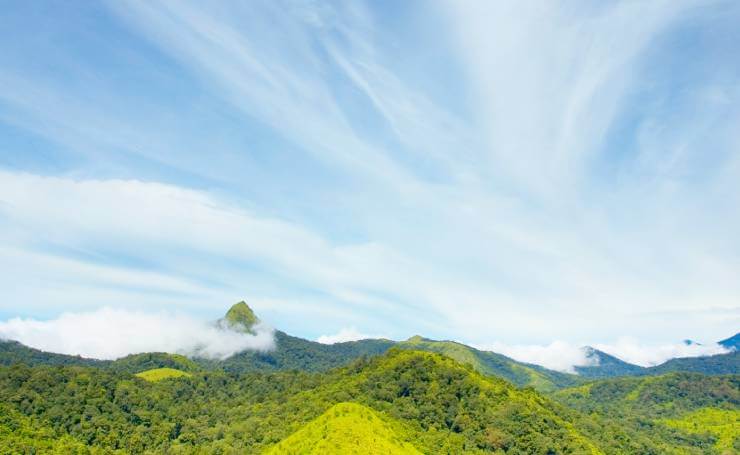
Being the central part of the Nilgiri Biosphere Reserve, Silent Valley National Park is famed for offering a perfect undisturbed ecosystem to a huge variety of flora and fauna. It is located in the Palakkad District of Kerala and bordered by Nilgiri Plateau in the north and Mannarkkad Plain in the south. An ideal place for trekkers and wildlife explorers, the national park was called Sairandhrivanam centuries ago as it was believed to be the hidden space for Sairandhiri along with her five husbands (the tale of Mahabharata).
It was declared a national park in 1984 for being home to a rich collection of biodiversity. A jungle safari in Silent Valley National Park will let you see animals from tigers, snakes, elephants, and leopards to more than 1,000 species of plants including 110 species of orchids. As per the official data, there are more than 400 species of moths and over 200 species of butterflies are found in the Silent Valley National Park.
How to Reach Silent Valley National Park?
- Peelamedu Airport is the nearest airport to Silent Valley National Park, located at a distance of around 155 kilometres.
- The nearest railway station is Olavakkode Railway Station at a distance of around 75 kilometres.
- Travellers can take a bus to Palakkad and reach Mukkali from where they have to take entrance tickets and a guide to enter the park.
Best Time to Visit Silent Valley National Park for Jungle Safari
- You can plan a jungle safari trip to the Silent Valley National Park during the period between December and February as the weather becomes pleasant this time.
- However, one can also visit the park in the months of March and April.
Also Read: Wildlife Tourism in Kerala
Mathikettan Shola National Park, Kerala
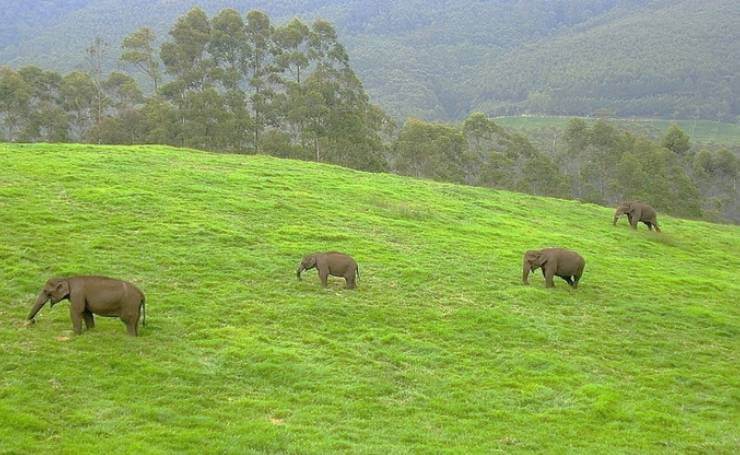
Mathikettan Shola National Park is located in Poopara Village in Kerala. A tropical rainforest, and an important elephant strip, this park was declared a national park in 2008. Home to a wide variety of endangered species, Mathikettan Shola National Park is located about ten kilometres from Munnar.
The varying heights of the terrain house dense verdant forests, which are fed by the streams like Mathikettan Puzha, Uchillkuthi Puzha and Njandar. The aftermath is a perfect ecosystem as a shelter for a rich collection of flora and fauna. The wildlife enthusiasts love to visit the park for animals like gaur, sambar, langur, and many more birds.
How to Reach Mathikettan Shola National Park?
- The nearest airport to Mathikettan Shola National Park is Kochi International Airport, which is connected to all the major cities and countries across the globe. It is located at a distance of 142 kilometres from the park.
- The nearest railway station to the park is Theni Railway Station, which is connected to other cities in India via Madurai Railway Station.
- There are several state-run bus services available that connect the park with the cities like Cochin and Madurai.
Best Time to Visit Mathikettan Shola National Park for Jungle Safari
- The best time to visit Mathikettan Shola National Park is between April and September.
- However, you can also visit the park throughout the year.
Other Interesting Blog to Read
- The Best 10 Tiger Safari Holiday Destinations in India
Guindy National Park, Tamil Nadu
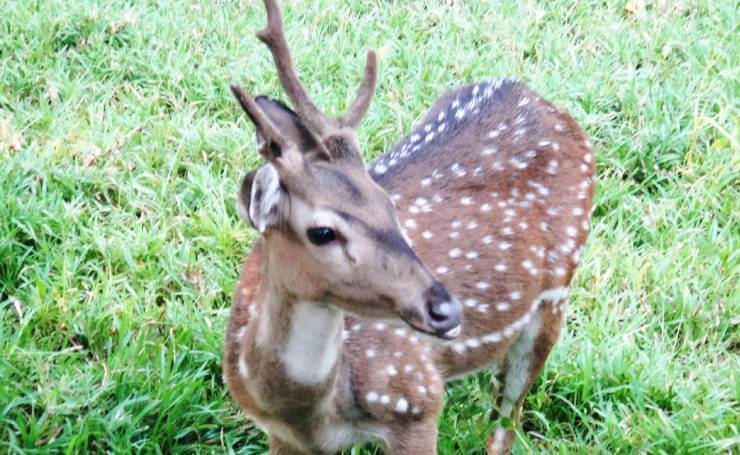
The eighth smallest national park in India, located in the middle of Chennai City, Guindy National Park was established back in the year 1978. It is 2.70 square kilometres protected area that houses a rich collection of biodiversity. The park is an extended part of the grounds enclosing Raj Bhavan (residence of the governor of Tamil Nadu), which was previously known as the ‘Guindy Lodge.’
The authority takes utmost care to protect the park and its ecosphere. A wide variety of flora and fauna found in Guindy National Park attract over seven lakhs of travellers throughout the year. The park houses 2,000 chitals, 400 blackbucks, various snakes and turtles. There are also more than 130 species of birds, over 60 species of butterflies and 14 species of mammals, which make the trip to the park memorable for a lifetime.
How to Reach Guindy National Park?
- The nearest airport to the Guindy National Park is Chennai Airport, which is eight kilometres away and has domestic and international terminals. It is connected with all the major cities in India as well as across the world.
- Guindy National Park can also be reached via train. The nearest railway station is just one kilometre away. Moreover, there are two stations near the park, Chennai Central Station and Chennai Egmore and respectively, they are 12 kilometres and 9 kilometres away.
- Guindy National Park in Chennai is also connected with the major cities via bus services. So, you can also reach the park by road.
Best Time to Visit Guindy National Park for Jungle Safari
- The best time to visit Guindy National Park is between October and May. You can expect soothing weather this time and see various animals in their habitat. Moreover, this is the time when migratory birds come to the park from different corners of the world.
- It is recommended not to visit the park during monsoon as the surroundings become muddy and slippery.
Also Read: Wildlife Tourism in Tamil Nadu
Eravikulam National Park, Kerala
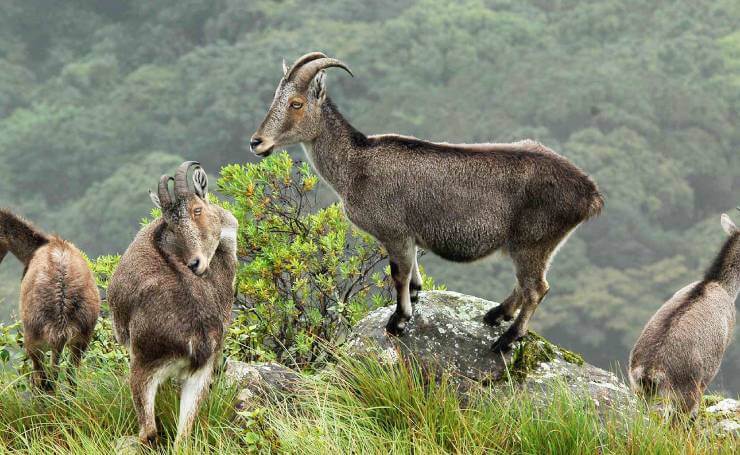
Kerala’s first-ever national park, also known as Rajamalai Wildlife Sanctuary, Eravikulam National Park is located in Idukki. Previously treated as a game reserve till 1971 under Kannan Devan Hill Company, the area was declared a national park in1975 in order to protect the endangered species of Nilgiri Tahr. It is situated at the top of a hill in the Western Ghat range, covered by verdant grasslands and shola forests.
Eravikulam National Park attracts thousands of scientists, ornithologists, wildlife enthusiasts and photographers throughout the year for being home to a plethora of flora and fauna. Apart from the Nilgiri Tahr, you can also see other animals like dhole, leopard, sambar, golden jackal, Nilgiri marten, Indian porcupine and many more. There are also more than 132 species of birds including Nilgiri pipit, black and orange flycatcher, Kerala laughingthrush and many more.
How to Reach Eravikulam National Park?
- The nearest airport to Eravikulam National Park is Kochi International Airport, which is 135 kilometres away from the park.
- The nearest railway station is Aluva Railway Station, which is 115 kilometres away from Munnar, from where you have to take a bus or taxi or private car to reach the park.
- The park is located at a distance of around 15 kilometres from Munnar City Centre, which is connected to the major cities of India via bus services. You can reach the entry point of the park, Rajamalai by road and then need to travel on foot.
Best Time to Visit Eravikulam National Park for Jungle Safari
- The months between September and October are the best time to visit Eravikulam National Park as it is the ideal time to spot Nilgiri Tahr amidst the full-blooming grasslands.
- April to May is also a preferred time to view various indigenous animals in the park.
- Top Tourist Places in Kerala
Mudumalai National Park, Tamil Nadu
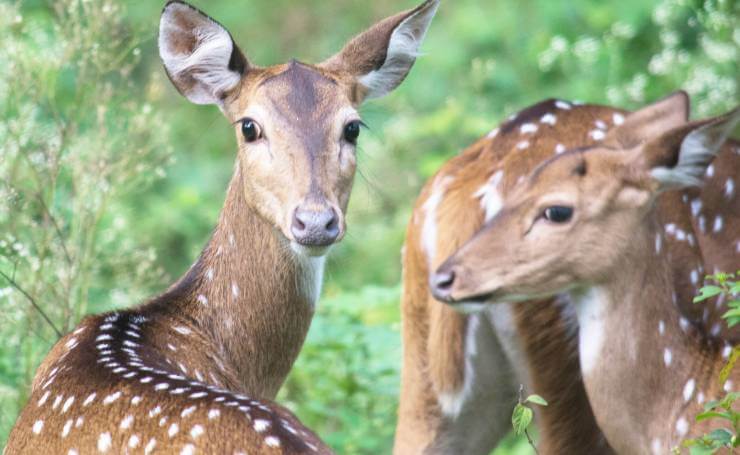
One of the best places to see tigers in South India, Mudumalai National Park is situated on the Northwest side of Nilgiri Hills. Being an important wildlife corridor in the Nilgiri Biosphere, the national park is adjoined by other parks and wildlife reserves such as Wayanad Wildlife Sanctuary, Silent Valley National Park, Bandipur National Park and Mukurthi National Park.
Mudumalai National Park offers a balanced ecosystem, which makes it a perfect place for being home to over 13 per cent of total mammal species and 8 per cent of bird species in India. It houses some rare medicinal plants like Mangifera indica, Terminalia arjuna, Pongamia glabra and many more. Moreover, you can expect to see various animals like leopards, tigers, jungle cats and many more species. This national park is also an amazing place for night safari. The connecting roads to the adjoining national parks and forests are the places where you can expect the wildlife during the safari.
How to Reach Mudumalai National Park?
- The nearest airport to the national park is Coimbatore International Airport, which is 127 kilometres away from the park.
- There are two railway stations near Mudumalai National Park, Mysore Railway Junction and Coimbatore Railway Junction. The stations are located at a distance of 90 kilometres and 120 kilometres away from the park, respectively and are well-connected with most of the major cities in India.
- There are several bus services operating between Thepakadu (the main bus stop for the park) and the cities such as Mysore, Coimbatore, Ooty, Bengaluru etc. So, you can also reach the park by road.
Best Time to Visit Mudumalai National Park for Jungle Safari
- The best time to visit Mudumalai National Park is between the months of October and May. The weather remains favourable this time and you can expect to spot various kinds of flora and fauna in the park.
Also Read: Anamalai Tiger Reserve Information
Dandeli Wildlife Sanctuary, Karnataka
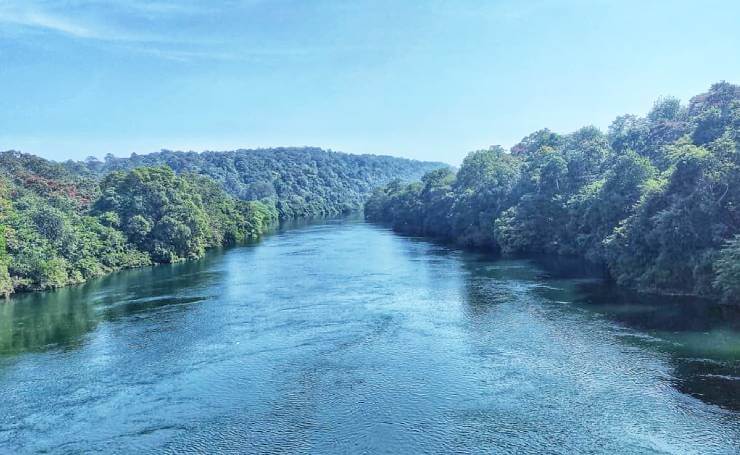
Dandeli Wildlife Sanctuary , located in the North Kannada District of Karnataka is an ideal place to experience the activities like river rafting, trekking, bird watching, and other water adventures. The sanctuary is home to over 200 species of birds, which attract thousands of bird-watchers and wildlife enthusiasts over the years.
Apart from the birds, Dandeli Wildlife Sanctuary is one of the places for tiger sighting in South India. As per the official data, there are around 40 tigers living in the core part of the sanctuary. Moreover, you can also spot animals like monkeys, leopards, elephants and birds like falcons and some exotic species in Dandeli Wildlife Sanctuary.
How to Reach Dandeli Wildlife Sanctuary?
- The nearest airport to Dandeli Wildlife Sanctuary is Belgaum. It is connected with cities like Mumbai and Bangalore.
- The nearest railway station is at Dharwad from where you have to travel 57 kilometres to reach Dandeli Wildlife Sanctuary.
- You can also travel to the sanctuary by road. There are several bus services operating between the sanctuary and the cities like Hubli, Dharwad, Belgaum, Goa, Bengaluru and Karwar.
Best Time to Visit Dandeli Wildlife Sanctuary for Jungle Safari
- Similar to other popular national parks in South India, Dandeli Wildlife Sanctuary is also surrounded by shola forests. Though it offers a moderate atmosphere throughout the year, October to May is the ideal time to visit the sanctuary.
Also Read: Wildlife Tourism in Karnataka
Nagarhole National Park, Karnataka
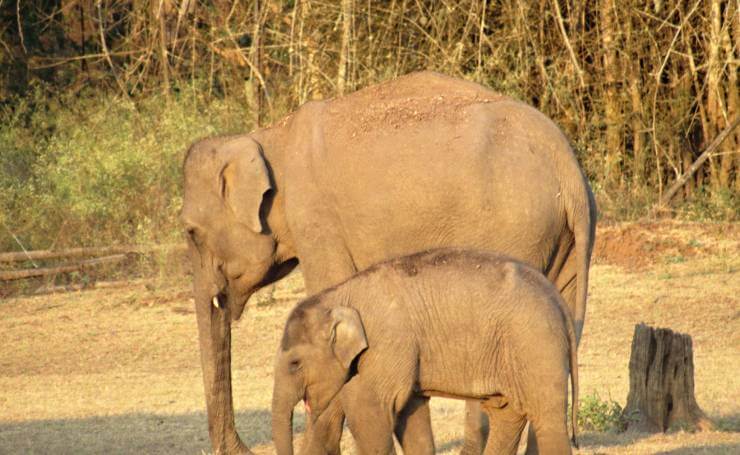
Previously known as Rajiv Gandhi National Park, Nagarhole National Park and Tiger Reserve is a nationally acclaimed tiger reserve for its high-density tiger population in the country. The park is spread across an area of 850 square kilometres in Mysore and Kodagu districts in Karnataka. It is enclosed by Wayanad Wildlife Sanctuary to the south and Bandipur Tiger Reserve in the southeast.
Nagarhole National Park lies as a connecting corridor for tigers and elephants to the Western Ghats and the Eastern Ghats. It is one of the major hubs of conservation under Project Elephant and Project Tiger. The park is famous for being one of the best places for exploring wildlife. Apart from tigers and elephants, one can also see gaur, sambar, chital, antelope and other animals in Nagarhole National Park.
How to Reach Nagarhole National Park?
- The nearest airport to the Nagarhole National Park is Bangalore Airport, at a distance of 220 kilometres.
- You can also reach the park via rail. The nearest railway station is Mysore Junction, located at a distance of 89 kilometres away from the park.
- There are regular bus services available to reach the national park from nearby major cities like Bangalore, Mysore etc.
Best Time to Visit Nagarhole National Park for Jungle Safari
- Summer, during the months of April and May, is the best time to visit Nagarhole National Park as the waterholes in the park are dry and the animals come out for water at the lake.
- However, to explore in a better weather condition, one can also visit the park between November and February.
Also Check Out: Complete Karnataka Tourism Guide
Bannerghatta National Park, Karnataka
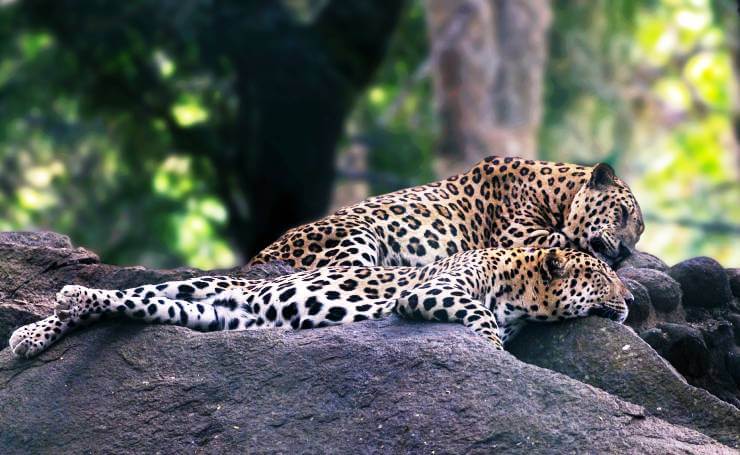
Bannerghatta National Park is undoubtedly one of the best national parks to explore in South India. The park is located near Bangalore (25 kilometres south) in the Anekal range, Karnataka and is regarded as home to a wide variety of wildlife. It was declared a national park in 1974 and in 2002, a small portion of the park was turned into a biological park or zoo.
Bannerghatta National Park spreads across an area of around 261 square kilometres and is bordered by 16 villages. Being a part of the wildlife corridor for elephants connecting Sathyamangalam Forest and BR Hills, the Bannerghatta National Park is one of the ideal places for a jungle safari tour. It offers a guided bus tour along a six-kilometre stretch to spot various species of animals such as elephants, leopards, gaur, peacock, Royal Bengal Tiger and many more.
How to Reach Bannerghatta National Park?
- The nearest airport to Bannerghatta National Park is Bengaluru or Bangalore Airport, which is around 46 kilometres away.
- The nearest railway station to the park is Yeshwantpur Junction, which is connected to all major cities via rail.
- You can also reach the park via metro railway. The nearest metro railway station is Yelachenahalli.
- There are also bus services available to reach Bannerghatta National Park from cities like Bengaluru, Mysore etc.
Best Time to Visit Bannerghatta National Park for Jungle Safari
- The best time to visit the park is during the months between October and June owing to the perfect weather conditions.
- Best Places for Wildlife Safari Tours in Karnataka
B.R. Hills Wildlife Sanctuary & Tiger Reserve, Karnataka
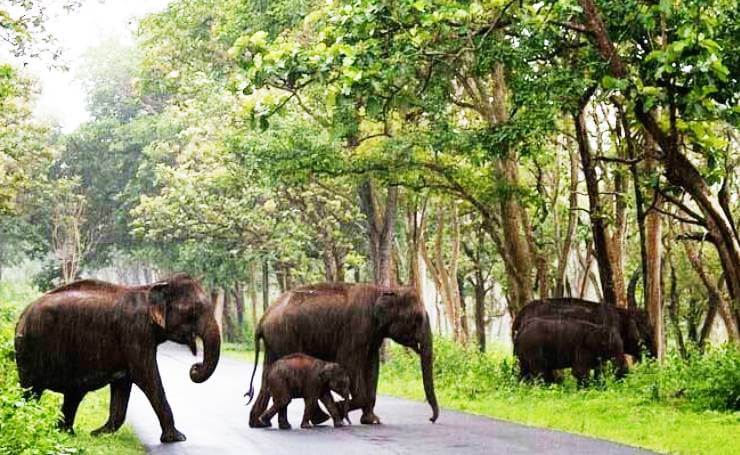
BR Hills Wildlife Sanctuary, also popular as BR Tiger Reserve is considered to be the wildlife corridor that connects the Western Ghats to the Eastern Ghats. It is located at a height of about 1,551 metres from sea level and spread across an area of 540 square kilometres in a hill range in Karnataka (Chamarajanagar District).
The sanctuary was declared a tiger reserve by the Karnataka State Government in 2010. Apart from being a tiger reserve in South India, B.R. Hills Wildlife Sanctuary is also home to a huge variety of animals. Some of them are elephants, deer, bison, sloth bears etc. A place for tiger sighting in South India, BR Tiger Reserve is also covered with more than 250 species of birds. It is one of the best places in South India to experience bird watching, elephant bathing and jungle safari in one place.
How to Reach B.R. Hills Wildlife Sanctuary?
- The nearest airport to the wildlife sanctuary is the Mysore airport, which is about 80 kilometres away.
- One can also reach the sanctuary by rail. The nearest railway station is Mysore Railway station (around 89 kilometres).
- You can also reach BR Tiger Reserve by road. Bus service is available from cities like Bangalore and Mysore.
Best Time to Visit B.R. Hills Wildlife Sanctuary for Jungle Safari
- The best time to visit BR Hills Wildlife Sanctuary is between the months of October and March as the weather this time becomes pleasant and perfect to enjoy various adventurous activities.
- Best Wildlife Jungle Resorts Near Bangalore for Weekend Breaks
Kudremukh National Park, Karnataka
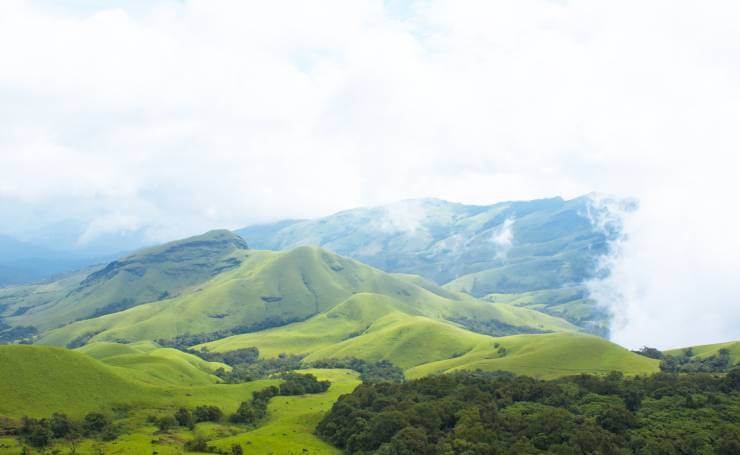
Home to a wide variety of wildlife, spread across an area of around 600 square kilometres, Kudremukh National Park is located at a junction of Chikkamagaluru, Udupi and Dakshina Kannada districts in Karnataka. The park has derived its name from a hilltop which looks like the shape of the head of a horse. Entirely covered by dense forests, the park includes four ranges, named Kudremukh, Kalasa, Kerekatte and Shimoga.
Being a popular wildlife destination in South India, Kudremukh National Park is home to several species of birds like the imperial pigeon, Malabar trogon, great pied hornbill and many more. There are several options for bird-watching available here. Apart from the birds, Kudremukh National Park is also a renowned ecospace for jungle safari in India, as well as South India. You can get some glimpses of leopards, tigers, common langurs, sloth bears, Malabar giant squirrels and many more species in the park.
How to Reach Kudremukh National Park?
- Travellers can reach Kudremukh National Park by air. The nearest airport to the park is Mangalore International Airport, which is 95 kilometres away from the park.
- The nearest railway station is also 95 kilometres away, Mangalore Railway Station.
- One can also travel to Kudremukh National Park via bus from nearby cities.
Best Time to Visit Kudremukh National Park for Jungle Safari
- The best time to visit the park is during the months between October and May, after the monsoon.
- Best Places to Visit Near Bandipur National Park
Ranganathittu Bird Sanctuary, Karnataka
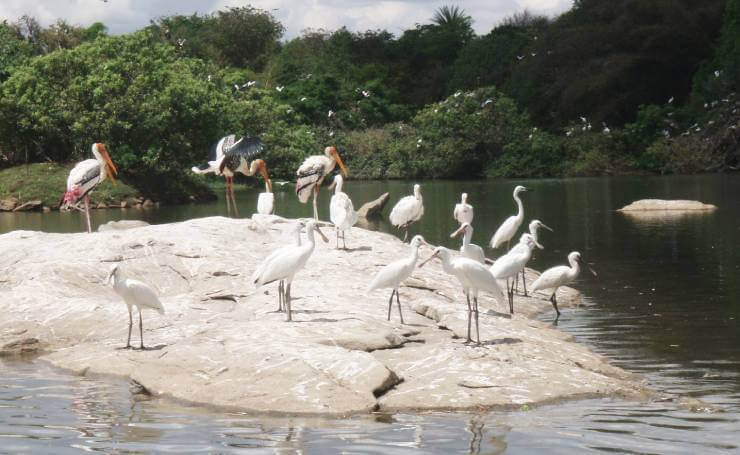
The largest bird sanctuary of Karnataka, Ranganathittu is located in the district of Mandya, in the historic town of Srirangapatna. The bird sanctuary, comprising six islets, situated on the bank of River Kaveri, is popularly known as ‘Pakshi Kashi,’ which means birds’ paradise. Due to the ideal location of the islets and the presence of aqua insects in abundance, the bird sanctuary has become a perfect place for the migratory birds that come from countries like Siberia, Australia and North America. The place has been referred to as one of the popular tourist attractions in South India.
Ranganathittu Bird Sanctuary was declared a sanctuary after famous ornithologist Dr Salim Ali pressured the government to do so in the year 1940. It has been regarded as a haven for wildlife enthusiasts across the globe. The sanctuary is home to the largest population of marsh crocodiles in Karnataka. Apart from the crocodiles, you can also get glimpses of about 170 avian species such as Oriental darter, river tern, Indian shag, painted stork and kingfishers.
How to Reach Ranganathittu Bird Sanctuary?
- The nearest airport to the bird sanctuary is Mysore International Airport, which is around 30 kilometres away.
- The nearest railway station to Ranganathittu is Srirangapatna at a distance of five kilometres.
- You can also reach the sanctuary by bus from cities like Bangalore and Mysore.
Best Time to Visit Ranganathittu Bird Sanctuary for Jungle Safari
- The best time to go to Ranganathittu Bird Sanctuary is between the months of June and November. These months are the best time for bird-watching as these are the nesting months for the birds.
- Most Popular Bird Sanctuaries in India
Wayanad Wildlife Sanctuary, Kerala
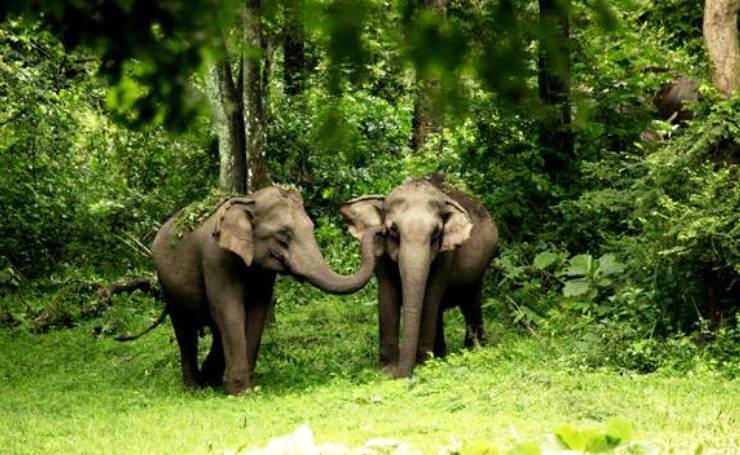
The second-largest wildlife sanctuary in Kerala, Wayanad Wildlife Sanctuary is one of the important regions of the Nilgiri Biosphere Reserve. It is located between Bandipur, Nagarhole and Mudumalai reserve forests and is home to a huge variety of flora and fauna. The perfect environment in an evergreen setting along with a favourable climatic condition has made this place a perfect place for the species.
Home to several species of mammals, wildlife enthusiasts and photographers love to explore Wayanad Wildlife Sanctuary. You can easily spot elephants, deer, panthers, jungle cats and especially tigers here. It is also popular as a home to a large number of endangered species of birds. There are several options for jungle safari in Wayanad Wildlife Sanctuary. One must pay an entry fee and take a forest guide for the safari.
How to Reach Wayanad Wildlife Sanctuary?
- The nearest airport to the sanctuary is Karipur International Airport in Kozhikode at a distance of 125 kilometres. There are several bus services available between the airport and the sanctuary.
- Travellers can also reach the sanctuary via rail. The nearest railway station is Kozhikode at a distance of 100 kilometres.
- Wayanad Wildlife Sanctuary is also connected to other cities via bus service. One can avail buses from cities like Kasargod, Calicut, Cochin and Trivandrum.
Best Time to Visit Wayanad Wildlife Sanctuary for Jungle Safari
- The ideal time to visit the best jungle safari destination in South India is between August and February. However, the place remains open throughout the year.
Top 15 Wildlife Sanctuaries and National Parks in Kerala
Viralimalai wildlife sanctuary, tamil nadu.
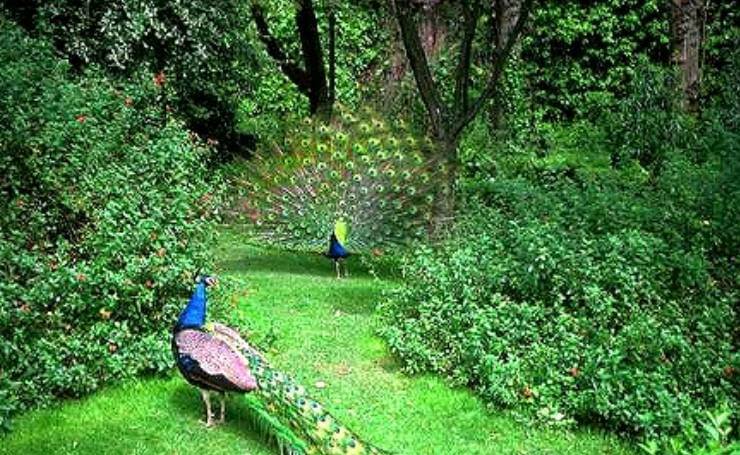
Viralimalai Wildlife Park is one of the best places to explore our national bird, the peacock. It is a renowned wildlife destination in Tamil Nadu and attracts a huge number of tourists to watch varied species of peacocks closely in their natural habitat. It is located in a town at a distance of 30 kilometres from Trichy.
Apart from the peacock sanctuaries, there is also a Murugan temple, where the eminent form of dance, Bharatnatyam flourished. The temple is located at the top of a hill and travellers need to climb about 210 steps to reach there. There are a total of six species of peacocks in Viralimalai and the Murugan temple along with its surroundings is the main region where they are found mostly.
How to Reach Viralimalai Wildlife Sanctuary
- The nearest airport to Viralimalai Wildlife Park is Tiruchirappalli International Airport at a distance of 30 kilometres.
- The nearest railway station is Tiruchirappalli Junction, which is connected to all the major cities of South India, as well as India.
Best Time to Visit Viralimalai Wildlife Sanctuary
- The best time to visit the wildlife park is during the months of October to April because one can find pleasant weather at this time.
- However, if you want to see the peacocks tapping their feet in the rain, then the monsoon (July to September) is the best time to go.
- Top 20 Wildlife Safari Destinations in Asia
- Top 111 Wildlife Photographers in the World
- 12 Best National Parks for Jungle Safari Experience in India – Love and Conserve Our Wildlife
Wildlife holidays in South India cannot be completed if you do not add one of these places to your itinerary. These are some of the places where you will have the best jungle safari experience of your life. However, one needs to take permission, book rooms in hotels or resorts, safari cars and many more in advance to plan South India Jungle Safari wildlife holidays. This might become hectic for you.
So, if you need any assistance in booking your holidays, you can call us or browse our website for some best packages for the best jungle safari experiences in South India.
Other Important Tourism Links
- Wildlife Safari Tour Packages
- Popular Tiger Safari Tour Packages
- Popular Bird Watching Tour Packages
Like & Follow our social media accounts at Twitter , Facebook , Linkedin & Instagram for getting the latest updates & offers on holiday packages .
Disclaimer: We do not take credit for some of the licenced paid images used in our blogs, whether from Google Images, Fotolia & Shutterstock. All such images are the copyrights of their respective owners and we try to provide credit for them wherever we can. If, however, any copyright image has been used on our blog, the concerned person can either mail us directly to remove the image or provide credit to whomsoever the image may belong to.
Frequently Asked Questions
Which are the best places for jungle safari tours in south india.
South India is home to some amazing untouched forests filled with a rich collection of flora and fauna. Some of them are the best places for jungle safari tours. The best time for jungle safari in South India is between September and November or from April to June.
Some of the best places for jungle safari tours are:
Which is the best destination for Tiger Safari in Karnataka?
Wildlife tourism in South India has been getting popular over the years. Tiger safari is one of the reasons behind this popularity. South India, especially Karnataka boasts of around 524 Royal Bengal Tigers and it has some of the best places to see tigers in South India. Some of them are:
- Bandipur National Park and Tiger Reserve
- Nagarhole National Park and Tiger Reserve
- Bhadra Tiger Reserve
- Kali Tiger Reserve
- BRT Tiger Reserve
Which are the top destinations for Wildlife safari tours in Tamil Nadu?
Tamil Nadu has some of the best wildlife sanctuaries in South India. A wildlife tour in South India cannot be completed without visiting these parks and sanctuaries. The top destinations for wildlife safari tours in Tamil Nadu are:
- Mudumalai Wildlife Sanctuary
- Anamalai Tiger Reserve
- Mukurthi National Park
- Kalakad Mundanthurai Tiger Reserve
Which are the best destinations for night jungle safari in South India?
There are some wildlife sanctuaries in South India which can also be explored at night. The authorities allow night safari tours and it is worth experiencing. Some of the best destinations for night jungle safari are:
- Chinnar Wildlife Sanctuary
- Tholpetty Wildlife Sanctuary
Published: 17 Jun, 2022
About the author

Nandini Bhattacharya
From the ‘City of Joy,’ Kolkata, Nandini Bhattacharya is a Travel Writer by profession and traveller by passion. She loves to explore places around the world, new cultures, different cuisines and all new things that one can learn outside the home. She also loves to document her journey so that people can be inspired and travel more. Nandini is a nature lover and talks about sustainable tourism. She wants to make this world a good place where people can live healthy and happily.
Recent Trending Posts

25 Places to See and Things to Do in Pune, Maharashtra

Top 10 Trails in Sikkim for High Altitude Trekking Adventure

April 23,2024
15 Most Famous Festivals in North East India
- Hill Stations
- Travel Deals
- Amazing Facts
- Travel Experience
- Travel Tips
- Travel Alerts
- Travel Videos
- Edu-Tourism
- Inspirational People
Popular Posts

May 30,2014
20 Highway Dhabas that You Must Stop By

February 12,2014
Top 15 Places for Honeymoon in North East India

September 6,2014
12 Best Beaches in Maharashtra

October 31,2013

August 27,2014
Best 15 Destinations in India for Solo Women Travellers
International posts.

November 8,2023
10 Best Beaches in Thailand

November 3,2023
Tourism Update – Enjoy Visa Free Holiday Travel in Sri Lanka

Thailand Tourism Update- Indian Travelers Now Get a Visa-Free Entry to Thailand!
Explore best places to visit in india by month.

Best Places in January

Best Places in February

Best Places in March

Best Places in April

Best Places in May

Best Places in June

Best Places in July

Best Places in August

Best Places in September

Best Places in October

Best Places in November

Best Places in December
India tourism important information resources, north india.
- Uttarakhand
- Jammu & Kashmir
South India
- Pondicherry
- Andhra Pradesh
- Mahararashtra
- Dadra Nagar Haveli
- Daman & Diu
Luxury Trains
- Maharaja Express
- Palaces on Wheels
- The Golden Chariot
- The Deccan Odyssey
- Majestic Tourist Train
Quick Links
- Kumbh Mela Haridwar 2021
- MICE Tourism

9 best jungle safaris in India
I ndia is a country renowned for its rich cultural heritage, ancient history, and stunning natural beauty. Along with these, the country also has a diverse range of wildlife, which makes it a popular destination for nature enthusiasts.
Going on a jungle safari is an unforgettable experience that allows one to witness the wild heart of the country up close.
9 JUNGLE SAFARIS IN INDIA THAT CATER TO DIFFERENT INTERESTS AND BUDGETS:
1. Ranthambore National Park, Rajasthan: This iconic park is famous for its majestic tigers, offering excellent chances of spotting them. Explore the ruins of Ranthambore Fort while encountering a variety of mammals, reptiles, and birds.
2. Kanha National Park, Madhya Pradesh: Known for its vast grasslands and dense forests, Kanha National Park inspired Rudyard Kipling's "The Jungle Book." It's famous for its tiger population, as well as barasingha (swamp deer) and leopards.
3. Bandhavgarh National Park, Madhya Pradesh: This park boasts a high density of tigers, making it a prime location for tiger sightings. Bandhavgarh also offers picturesque landscapes with hills, valleys, and meadows.
4. Sundarbans National Park, West Bengal: The Sundarbans is the largest mangrove forest in the world and a UNESCO World Heritage Site. It's home to the Bengal tiger, saltwater crocodile, and numerous bird species.
5. Jim Corbett National Park in Uttarakhand: Established in 1936, Jim Corbett National Park is India's oldest national park and offers a chance to spot tigers, elephants, leopards, and a variety of bird species.
6. Satpura National Park, Madhya Pradesh: Embark on unique safaris here, including jeep safaris, boat safaris on the lake, and even safaris on the elephant's backs. Spot tigers, leopards, sloth bears, and diverse bird species.
7. Sasan-Gir National Park & Wildlife Sanctuary, Gujarat: This park is the last refuge of the Asiatic lion, a majestic species found only in India. Explore the dry forests and grasslands in search of lions and other wildlife.
8. Tadoba Andhari Tiger Reserve, Maharashtra: This tiger reserve is known for its beautiful Tadoba Lake and diverse wildlife. Besides tigers, the park is home to leopards, wild boars, and over 200 species of birds.
9. Kaziranga National Park, Assam: A UNESCO World Heritage Site, Kaziranga is renowned for its one-horned rhinoceros population. The park also shelters tigers, elephants, and various bird species, offering a unique blend of grassland and riverine ecosystems.
Remember, choosing the right safari depends on your specific interests and preferences. Consider factors like the type of wildlife you want to see, the time of year you plan to visit, and the budget you have in mind. With proper planning, a jungle safari in India can be an unforgettable adventure, leaving you with memories that will last a lifetime.
Watch Live TV in English
Watch Live TV in Hindi
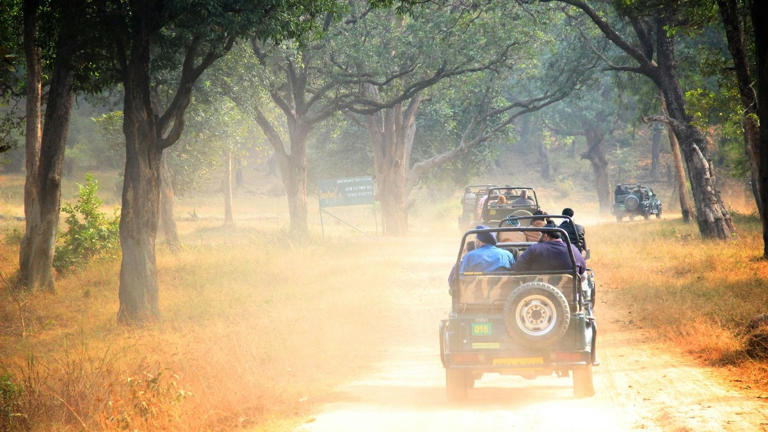
- Group Enquiry? NEW
- 20 Wildlife Sanctuaries near Pune
- Maharashtra
Wildlife Sanctuaries Near Pune
Here is the list of best wildlife sanctuaries near pune:, quick navigation, karnala bird sanctuary.

Mayureshwar Wildlife Sanctuary

Best of Mumbai

Bhimashankar Wildlife Sanctuary

Koyna Wildlife Sanctuary

Best of Goa

Phansad Wildlife Sanctuary

Radhanagari Wildlife Sanctuary
.jpg.jpg?w=753&h=450&dpr)
Are you a wildlife lover? Add Radhanagari Wildlife Sanctuary in your list of tourist Places in Kolhapur as this is just the perfect place for you. Ranging from the variants of mammals, reptiles, and countless species of birds here you can witness each one of them and it is one of the amazing places to visit in Kolhapur The Sanctuary is situated in Radhanagari and several rivers flow through it namely Bhogavati River, Dudhganga River, Tulsi River, Kalama River, and Dirba River. Boasting the exotic collection of flora and fauna, here you can witness sambar, giant squirrel, barking deer, mouse deer, and sloth bear in the majority. Essential Information
- Location: New Ambabai Temple Main Road, Radhanagari, Maharashtra 416212
- Best Time: June to September, Monsoons.
- Timings: 7:00 am to 2:30 pm
- Price: Starting INR 120 per person.
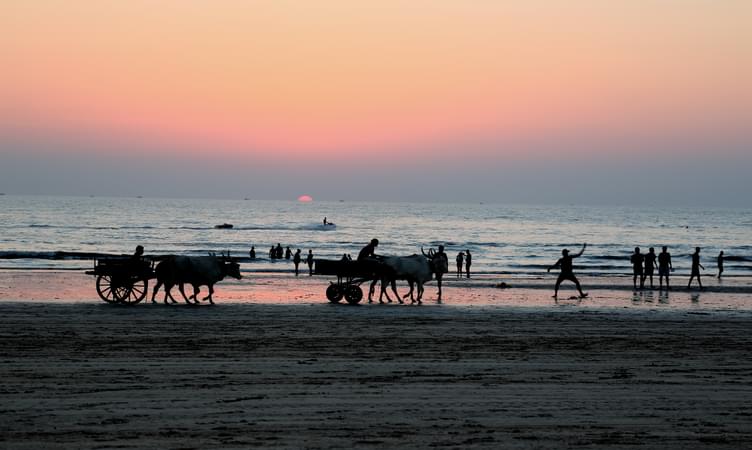
Best of Alibag

Sagareshwar Deer Sanctuary
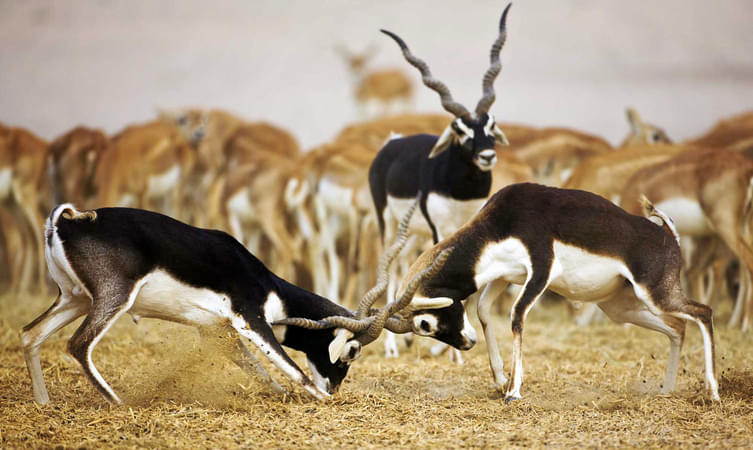
Another one in the array of sightseeing places in Kolhapur is the Sagareshwar Deer Sanctuary and is a protected area of the Kolhapur district. This is a man-made forest that sprawls over a region of 11 square kms where the wildlife was introduced. Whether you are looking for an exotic collection of flora or fauna, this is just the perfect place for you to be.
Essential Information
- Location: Tupari, Maharashtra 415313
- Best Time: June to February
- Timings: 8:00 am to 5:30 pm
- Price: None
Bhigwan Bird Sanctuary

Best of Mahabaleshwar
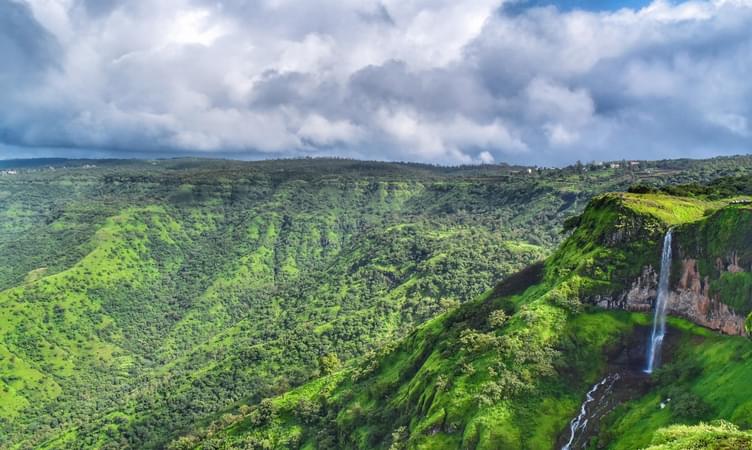
Sanjay Gandhi National Park
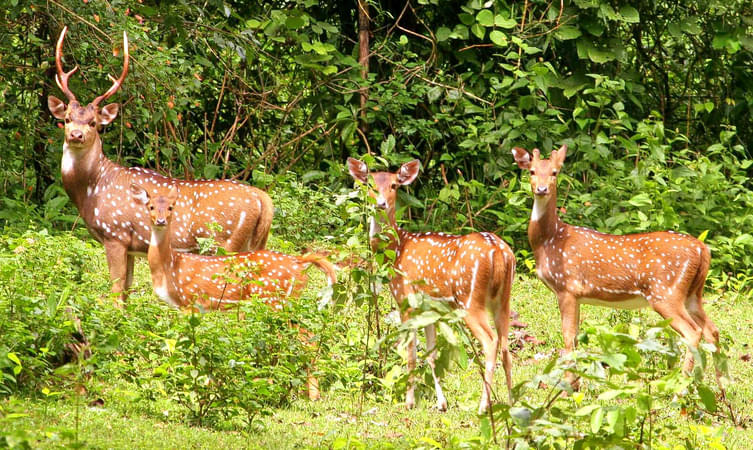
Sanjay Gandhi National Park, previously known as Borivali National Park in Mumbai is one of the popular picnic spots for locals as well as visitors of the city. The park covers about 20% of Mumbai’s geographical area and invites nature lovers to experience greenery, wildlife, rocky cliffs, caves and a number of tourist attractions located inside the park.
With an area of 103 square kilometres, Sanjay Gandhi National Park is one of the largest parks situated within the city limits and is also believed to be one of Asia’s most visited parks. The national park is home to a surprising number of two hundred and fifty-four species of birds, forty species of mammals, seventy-eight species of reptiles and amphibians, about one fifty species of butterflies and over a staggering 1,300 species of plants.
The park houses animals like leopards, deer, flying fox, boars along with beautiful birds like butterflies, kingfisher, sunbirds. Inside the forest, there are two artificial lakes. These lakes invite a number of migratory birds every year and also have crocodiles wandering at its shore.
Likewise, the park has Kanheri caves inside its premises. Kanheri caves are carved out of rocky cliffs and are over two thousand years old. These caves make for one of the major tourist attractions at Sanjay Gandhi National Park. Landscape wise, the national park offers the best views during the monsoons when the trees are lush green and streams of water flow in full swing.
On other days, a cycling tour here is the best way to go around the park and explore the nooks and corners; as walking could bring about restrictions after a certain point.
Kutch Great Indian Bustard Sanctuary
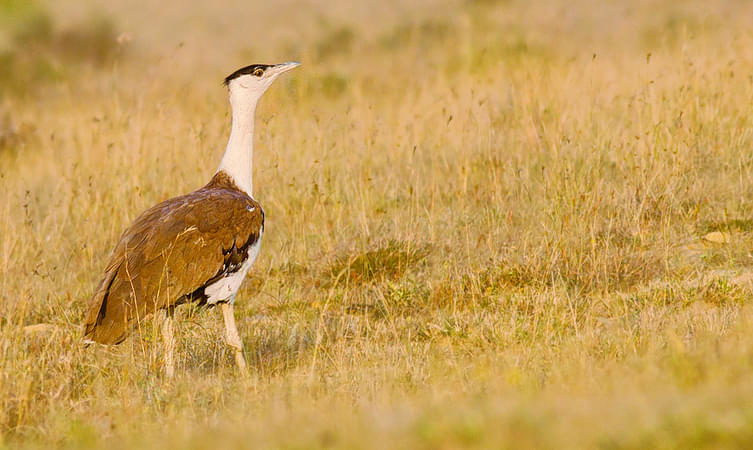
Best of Panchgani
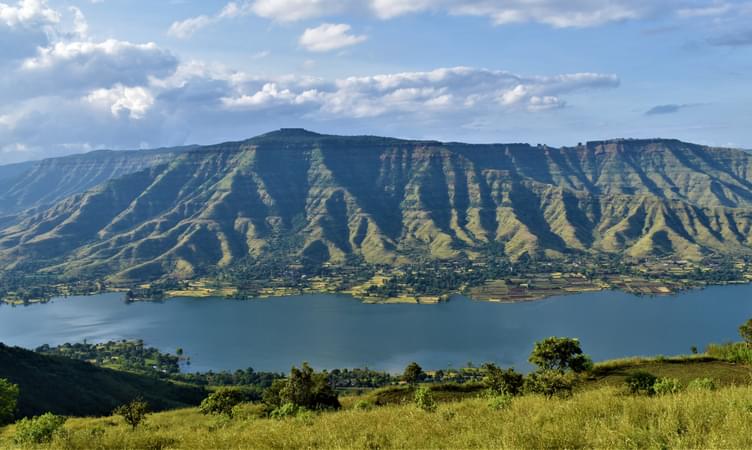
Rehekuri Blackbuck Sanctuary

Chandoli National Park

Best of Kolad
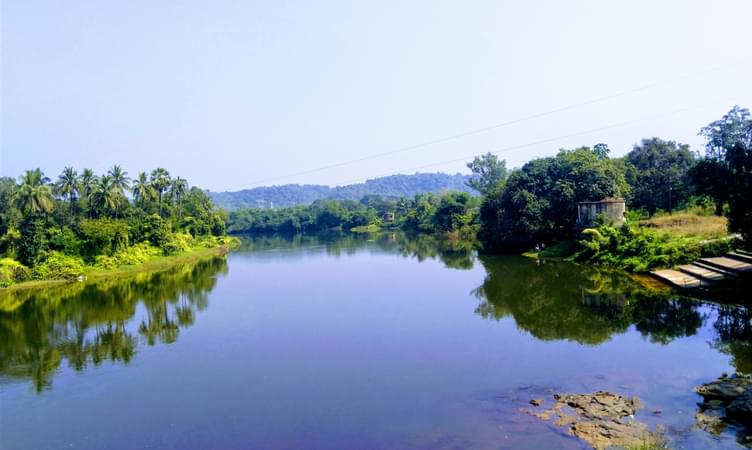
Malvan Marine Wildlife Sanctuary

Gautala Wildlife Sanctuary

Best of Kamshet
.jpg?gravity=center&width=752&height=450&crop=fill&quality=auto&fetch_format=auto&flags=strip_profile&format=jpg&sign_url=true)
Anerdam Wildlife Sanctuary

Katepurna Wildlife Sanctuary

Mayani Bird Sanctuary
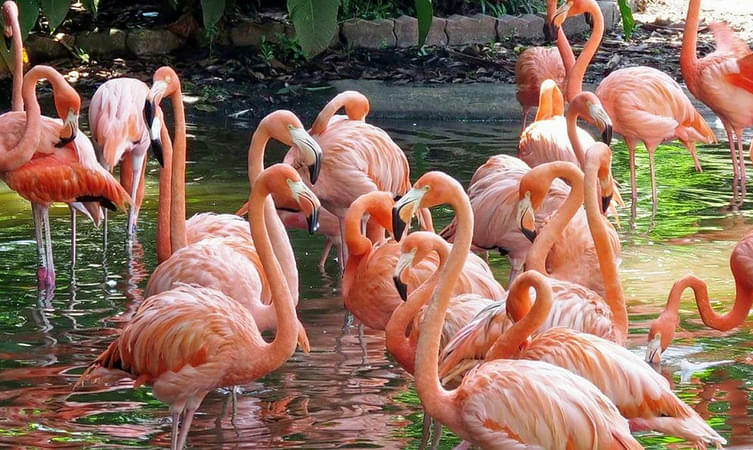
Lonar Wildlife Sanctuary

Dnyanganga Wildlife Sanctuary

Jaikwadi Wildlife Sanctuary

People Also Ask About Pune
What are the best wildlife sanctuaries near pune within 300 km, what are the best national parks near pune for tiger spotting, what is the best time to visit a wildlife sanctuary near pune, what are the best bird sanctuaries near pune.

Trending in Pune
Pune top attractions.
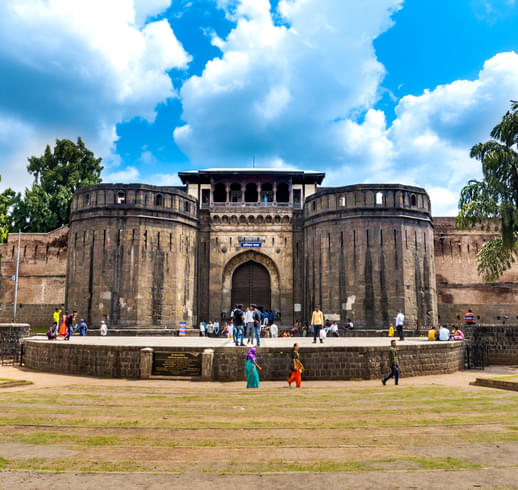
Shaniwar Wada is an excellent example of the Maratha Imperial architecture used in India in the bygone era. It tells the historical tale of the Maratha Kingdom as it has seen every event that occurred in Peshwas Life over time. It was built by the Peshwas’ symbolizing the brave hearts of the Marathas, who strived hard to keep its glory alive. Though the fort couldn’t tolerate the battering from the wrong time but the stone boundaries still recite the untold tales of the colourful journeys lead by the heroic Marathas.However, some ruins still remain reciting the remarkable stories and contorted tales. You can witness the enormous stone boundaries made to protect the beautiful Shaniwar Wada, which shows the level of security provided to the people of the kingdom. The walls have a magnificent wooden gate reflecting the Mughal architecture, which is another example of how secure the palace was made. There are long iron spikes tucked into the gate, which could reduce the attack of the enemy and kept elephants away.Besides this, you can see a garden which follows the style of the Mughal architecture. It also has a lovely fountain resembling a 16 petaled lotus, right in the middle of the garden. Adding to that, you can see the boundaries marked on the ground, which could tell about all the rooms. There is nothing more than this havoc of time, which changed the face of the mighty Shaniwar Wada into nothing. But you can still make these remains your window into the past to relive what has happened in history.History of Shaniwar Wada:The foundation stone of the Shaniwar Wada was laid in 1730 by Peshwa Bajirao I. Initially, it was intended to be a colossal palace of seven stories made out of stone. But the people of the national capital argued that only King can have a castle made of stone. So, the construction of Shaniwar Wada began using bricks. It took two years to complete this elegant structure, which displayed an excellent blend of the Maratha Imperial architecture with the Mughal architecture. The interiors had valuable furniture and decorations along with carvings of flowers and paintings of scenes from the Mahabharata and Ramayana. The first major fire in the year 1791 destroyed a significant part of the fort, which was re-constructed again. Then the next explosion in 1808 burnt all the necessary artifacts and documents in the palace. Then another fire in 1812 destroyed the upper two stories of the castle, followed by a fire in 1813 which destroyed the Royal Hall. All this destruction was taken to another level in the year 1818. The British attacked Shaniwar Wada, which resulted in collapsing all the top stories. Finally, in the year 1828, a fire caught the whole palace, which burned for a week and wrecked it. Architecture of Shaniwar Wada:Architecture of Shaniwar Wada is an excellent example of Maratha style of construction blended with authentic Mughal architecture. The main gate, also known as Delhi Darwaza, is adorned with iron spikes to restrain the enemy attack as it is enormous enough to pass an elephant through it. There is a small aisle on the top of the door which has dome-shaped windows definitely taken from the Mughal architecture. Besides this gate, the Wada has four more gates, namely Mastani Darwaza, Khidki Darwaza, Ganesh Darwaja, and Narayan Darwaza. The walls have floral carvings and paintings resembling the Mughal architecture style. Scenes from Ramayana and Mahabharata are also found painted at various significant spots. The windows and doors are also dome-shaped contributing to the traces of Mughal architecture. Archaeologists believe that initially, the fort was six-floored before it was destroyed by the fire. Finally, the garden has a 16 petaled lotus representing the grace of the bygone era.
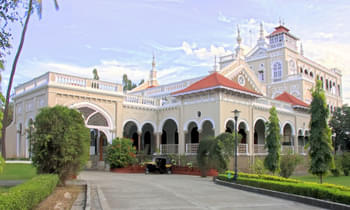
Built in 1982 by Sultan Muhammed Shah Aga Khan III, the Aga Khan Palace is a magnificent piece of history situated in 19 acres of land in the Yerwada area in Pune. Referred to as one of the most important landmarks of Indian history, along with the Indian freedom struggle, the palace has its roots deeply etched into bygone eras. The palace was built to help the poor in the areas surrounding Pune, which was drastically hit by famine in the early 1980s. One of the most stunning pieces of architecture in all of Pune, the Aga Khan Palace is also a famous tourist attraction, which was designed by a world-famous architect called Charles Correa.Additionally, the palace houses the samadhis (memorials) of Mahatma Gandhi’s wife, Kasturba Gandhi. Sources suggest that both Kasturba Gandhi and Mahatma Gandhi’s secretary Mahadev Desai breathed their last in the palace premises. And it is because of this that their memorials have been safeguarded in the palace grounds.The Aga Khan Palace is located in a huge ground, and has five, luxurious and spacious halls, along with several lawns. The structure resonates of Italian architecture, elegant yet intricate and magnificent.Of all the rooms and features of the palace, its arches are the most beautiful, almost mesmerising to the eyes. Aga Khan Palace has two huge floors, in addition to a corridor which spreads across the entire structure. The palace is known for organising several exhibitions and programmes throughout the year. Most of these reflect Gandhi’s lifestyle, thereby offering visitors a deep insight into the Mahatma’s life. Moreover, it is because of this and Gandhi’s links to it that the palace is now also known as the Gandhi National Memorial Society. One of the most prominent attractions of the palace is the room where Gandhi stayed during his imprisonment, along with his personal belongings and pictures of the other freedom fighters. |

Sinhagad or Kondana is a pride of the southwestern region of Pune. This fort was the one to support Maharashtra during the ancient battles. Sinhagad battle of 1671 is the significant one. Bhuleshwar range of the great Sahyadris is the home to this historical monument. The fortress has an elevation of around 1312 m above the sea level. Sinhagad has got its own breakneck slopes to protect it from all sides. There are two entrances to this fort – one in the north-eastern region (Pune Darwaza) and another one towards the southeastern part (Kalyan Darwaza). The authenticity and the richness of Sinhagad fortress date back to around 1000 years. This is evident from the carvings present on the walls of Kaundinya Eshwar temple there. Sinhagad is valued as a true sightseeing heritage.To begin your sightseeing adventure, you have Rajaram’s tomb which is worth a visit. The fortress displays some of the adorable monoliths of Tanaji Malusare – one of the efficient safe-keepers of the fort from Shivaji Maharaj’s era. Besides these crucial displays, the fortress has got its own military depot, a Kali temple, breweries, and a Hanuman effigy. Pune Darwaza, Kalyan Darwaza, Tilak Bungalow, Hawa Point, Kade Lot, Amruteshwar Temple, Tanaji Samadhi and Memorial raises the elegance of this fortress even today.Summiting the fortress offers some stunning views of the Khadakwasla Dam from one end; while from its other side, you can see glimpses of Torna Fort.
More Pune Attractions
Pune travel guides.

Pune Reviews

Popular Nearby Places Around Pune
More things to do in pune, more on pune tourism, popular related destinations.

Best Domestic Packages
Best international packages, domestic honeymoon packages, international honeymoon packages, places to visit in india, international places to visit, things to do in india, international things to do, popular on thrillophilia.
- We assure the privacy of your contact data.
- This data will only be used by our team to contact you and no other purposes.
Your enquiry has been received successfully. Our destination expert will reach out to you soon!
THE 10 BEST Dnipro Sights & Historical Landmarks
Dnipro landmarks.
- Points of Interest & Landmarks
- Churches & Cathedrals
- Monuments & Statues
- Sacred & Religious Sites
- Historic Walking Areas
- Architectural Buildings
- 5.0 of 5 bubbles
- 4.0 of 5 bubbles & up
- Good for Kids
- Budget-friendly
- Good for a Rainy Day
- Good for Couples
- Good for Big Groups
- Adventurous
- Hidden Gems
- Honeymoon spot
- Good for Adrenaline Seekers
- Things to do ranked using Tripadvisor data including reviews, ratings, photos, and popularity.

1. Menorah Center

2. Saviour Transfiguration Cathedral

3. Naberezhnaya Dnepra

4. Dmytra Yavornytskoho Ave.
5. Monument to the Students and Staff of the Medical Institute, Who Died during the Great Patriotic War
6. Eternal Glory Memorial
7. Fountain White Swan

8. Holy Tikhvinskiy Monastery

9. Zolota Roza Synagogue

10. Church in Honour of John the Baptist Cathedral
11. Alfred Nobel Planet Memorial

12. Family Bench

13. Fountain Vodyanaya Sfera
14. Iverska Madonna Icon Church
15. Saint Trinity Cathedral

16. Fountain Muza

17. Kodak Fortress

18. Lomonosov Statue

19. Prince Potyomkin Palace

20. Monument to Taras Shevchenko

21. Cross Exaltation Church

22. Bench of Lovers and Tree of Happiness

23. Bryanska (St.Nicolas) Church

24. Holy Annunciation Cathedral

25. St. Nicolas Church
26. House of Brezhnev
28. temple of st. vladimir.

29. Jeweler Granovskiy Statue
30. temple of the three saints, what travelers are saying.


IMAGES
VIDEO
COMMENTS
1. African fish eagle. Undoubtedly Africa's most striking symbol, and Zambia 's national emblem, this is the ultimate bird to see on safari. If you haven't already guessed it by the name, their diet mainly includes fish. So you'll likely find these large African birds near open water bodies.
It's a large bird, measuring up to 4.9 feet (1.5 meters) in height and has long legs with an eagle-like body. These birds are usually white with black markings including black plumage around the head and an orange mask around the eyes. One of the most interesting things about the secretary bird is its feeding habits.
2/ Shoebill. Shoebill, Uganda. This scarily prehistoric-looking African bird captures the imagination because it really does look like the dinosaurs from which birds are descended. The shoebill ( Balaeniceps rex) is huge - measuring up to 1.5 metres tall and with a wingspan of up to 2.5 metres.
Jaguars are found in South and Central America, preferring wet lowland habitats, swampy savannas, and tropical rain forests. They are known to almost anything they can catch, including deer, crocodiles, snakes, monkeys, deer, sloths, tapirs, turtles, eggs, frogs and toads, and fish. The jaguar has the strongest bite of all the cat family ...
BOOK NOW Welcome to the Official Site of Jungle Crocodile Safari Experience the authentic thrill of Jungle Crocodile Safari, a journey along the majestic Tarcoles River. Here, our guests will have the opportunity to immerse themselves in the incredible biodiversity that this unique ecosystem provides. Our history Established in April 1993 by Veterinary Doctor Mario
Bwindi Impenetrable Forest National Park Steep mountain rain forest with wide altitude span offering the ultimate jungle safari with the chance of coming face to face with a gorilla. Kibale Forest National Park is made up of lush tropical rain forest in an area of outstanding natural beauty and habituated chimpanzee families to enliven your ...
A jungle safari is one of the most coveted experiences to sight wild animals, birds, and exotic flora in a natural habitat. But there are certain rules and tips for jungle safari that one needs to keep in mind before and during the safari tour to ensure it's an enjoyable and safe experience. While traversing in a jungle is fun and adventurous, it can turn into a disaster if not planned and ...
Jungle Crocodile Safari & Bird Watching Tour, Tárcoles, Puntarenas, Costa Rica. 2,666 likes · 13 talking about this · 3,542 were here. Explora la belleza del río Tárcoles con nosotros.
The Jungle Crocodile Safari & Bird Watching Tour departs daily at 8:30am, 10:30am, 1:30pm and 3:30pm. Different departure hours can be arranged for private groups. The tour lasts about two hours. As you explore the Tarcoles River with a bilingual (English and Spanish) guide, you will gaze on crocodiles and dozens of bird species.
A Sundarban jungle safari offers a perfect blend of adventure, relaxation, and exploration. Whether traveling on a family vacation or seeking solitude amidst nature, the Sundarbans beckons with their mystery and charm, promising an experience that lingers in the memory long after the trip is over. So pack your bags, embark on an unforgettable ...
Discover amazing wildlife of Jungles! In this scenic film you will see the most incredible wild animals and birds that call the jungle home! These are some o...
TOUR Jungle Crocodile Safari & Bird Watching Jungle Crocodile Safari & Bird Watching Tour Embark on a journey through the renowned Tarcoles River, and encounter the formidable American Crocodile, Costa Rica's top predator, up close. This expedition offers an amazing experience to witness crocodiles and immerse yourself in the wonderful wildlife thriving along the river.
Perfect bird watching destination, more than 350 species of endemic and resident birds, passage and migratory birds. ... Jungle Safari Rajaji National Park. Rajaji National Park offers numerous opportunities for jungle safaris, allowing tourists to immerse themselves in the enchanting wilderness. With a variety of gates available, visitors can ...
Welcome to our world of wildlife, mountains, and birds! At The Jungle Book Safari And Tours, we are passionate about sharing our knowledge and experiences with fellow nature enthusiasts. With over a decade of expertise, we've led countless jungle safari, birdwatching tours, and thrilling treks across the majestic mountains of Nepal. View Detail.
The Jungle Safari Near Statue of Unity Kevadia is a major Tourist Destination at Kevadia in Narmada district of Gujarat State, spread over an area of around 375 acres with extremely undulating topography. The Jungle Safari has 4 Bird aviaries. These two aviaries are having state of the art geodesic design designated for Indian and exotic Birds.
The early morning and evening safaris are ideal times to witness the leopards when they are most active. Morning Safari. Morning Leopard safari in Jawai start at around 5 AM. Leopards are most active before sunrise. So it is the best time to see leopards. Read: Exciting Bundi Travel.
Embark on a Jungle safari in a jeep and venture into the land of sights and sound. Dandeli Wildlife sanctuary has some of the exemplary green patches to spot wild animals like Crocodile, Bison, Tigers, Black Panther, Sloth Bear, Elephant, Leopards, a number of reptiles and birds etc.
Best Time to Visit Ranganathittu Bird Sanctuary for Jungle Safari. The best time to go to Ranganathittu Bird Sanctuary is between the months of June and November. These months are the best time for bird-watching as these are the nesting months for the birds. Other Interesting Blog to Read. Most Popular Bird Sanctuaries in India
9 JUNGLE SAFARIS IN INDIA THAT CATER TO DIFFERENT INTERESTS AND BUDGETS: 1. Ranthambore National Park, Rajasthan: This iconic park is famous for its majestic tigers, offering excellent chances of ...
In Rajastan, an artist-turned-naturalist is bringing a slice of African luxury to Ranthambore National Park. Published on May 17, 2024. By Jasreen Mayal Khanna. Vijay Kumawat. In Africa, serious ...
The sanctuary is also home to mammals like chinkara, bats, wild boars, sloth bears, jungle cats, civet cats, monkeys, barking deer, and foxes. It is also famous for its rich avifauna, including the migratory and resident birds. You can also enjoy morning and evening safari rides in the forest area. Location: Kannad, 431103, Maharashtra
Published February 21, 2023. One year ago, Oleksandr Nastachenko traveled to the southern Ukrainian province of Kherson Oblast, with his 14-year-old nephew, Igor, in search of a Rustic Bunting. The migratory passerine is a rare visitor to Ukraine, and one of the relatively few birds in his home country Nastachenko hadn't yet spotted.
Points of Interest & Landmarks • Fountains. 17. Kodak Fortress. 14. Points of Interest & Landmarks. By Aspasia_traveller. Kodak Fortress is an important historical place because it was a significant measure to control Zaporizhian cossacks... 18. Lomonosov Statue.
The governor of Dnipropetrovsk Oblast is the head of executive branch for the Dnipropetrovsk Oblast . The office of governor is an appointed position, with officeholders being appointed by the president of Ukraine, on recommendation from the prime minister of Ukraine, to serve a four-year term. The official residence for the governor is located ...
Mar 9, 2024 - Entire rental unit for $24. Rent an apartment in Dnepropetrovsk, Ukraine. Nabereznaya Pobedy street. On the banks of the Dnieper River. On the 2nd floor. The apartment: LED-TV...